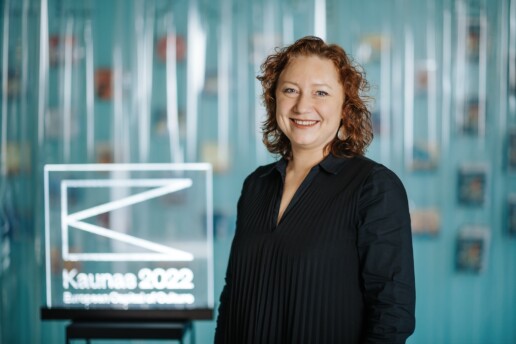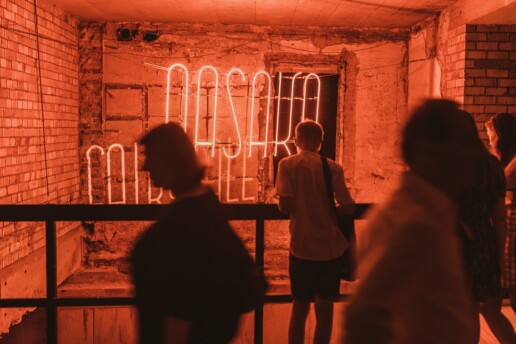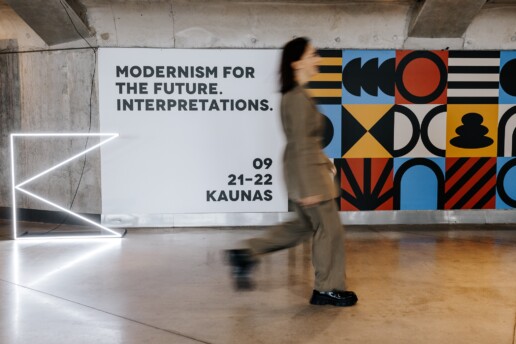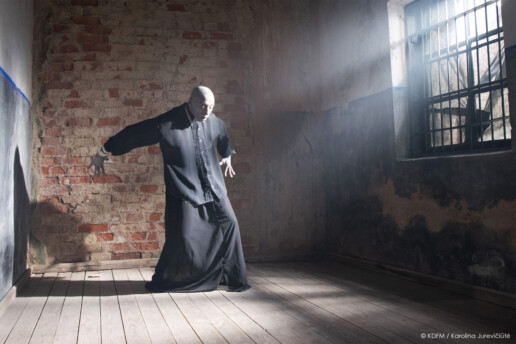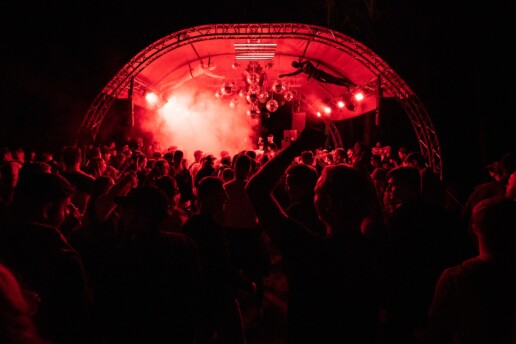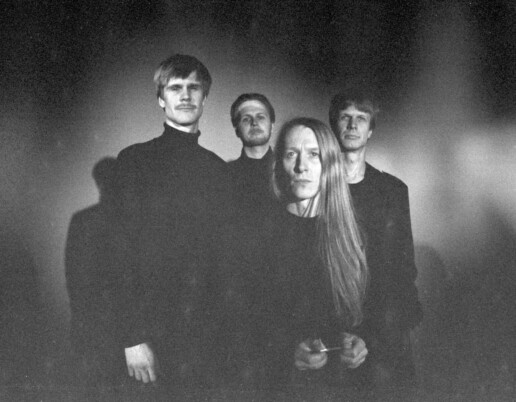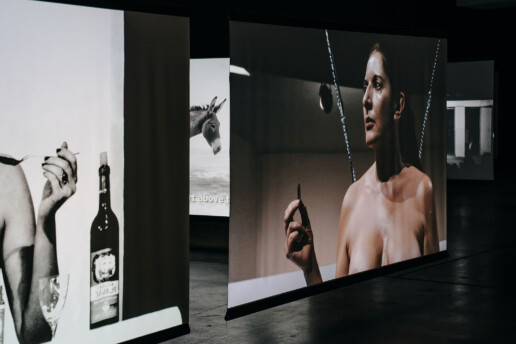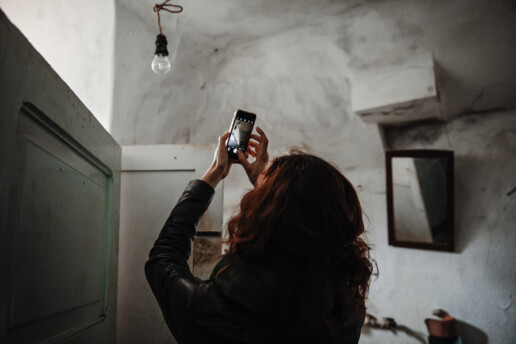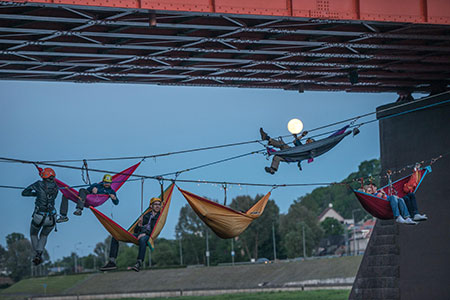“We Have All Been Running on a Higher Gear,” Says Virginija Vitkienė, Head of Kaunas 2022
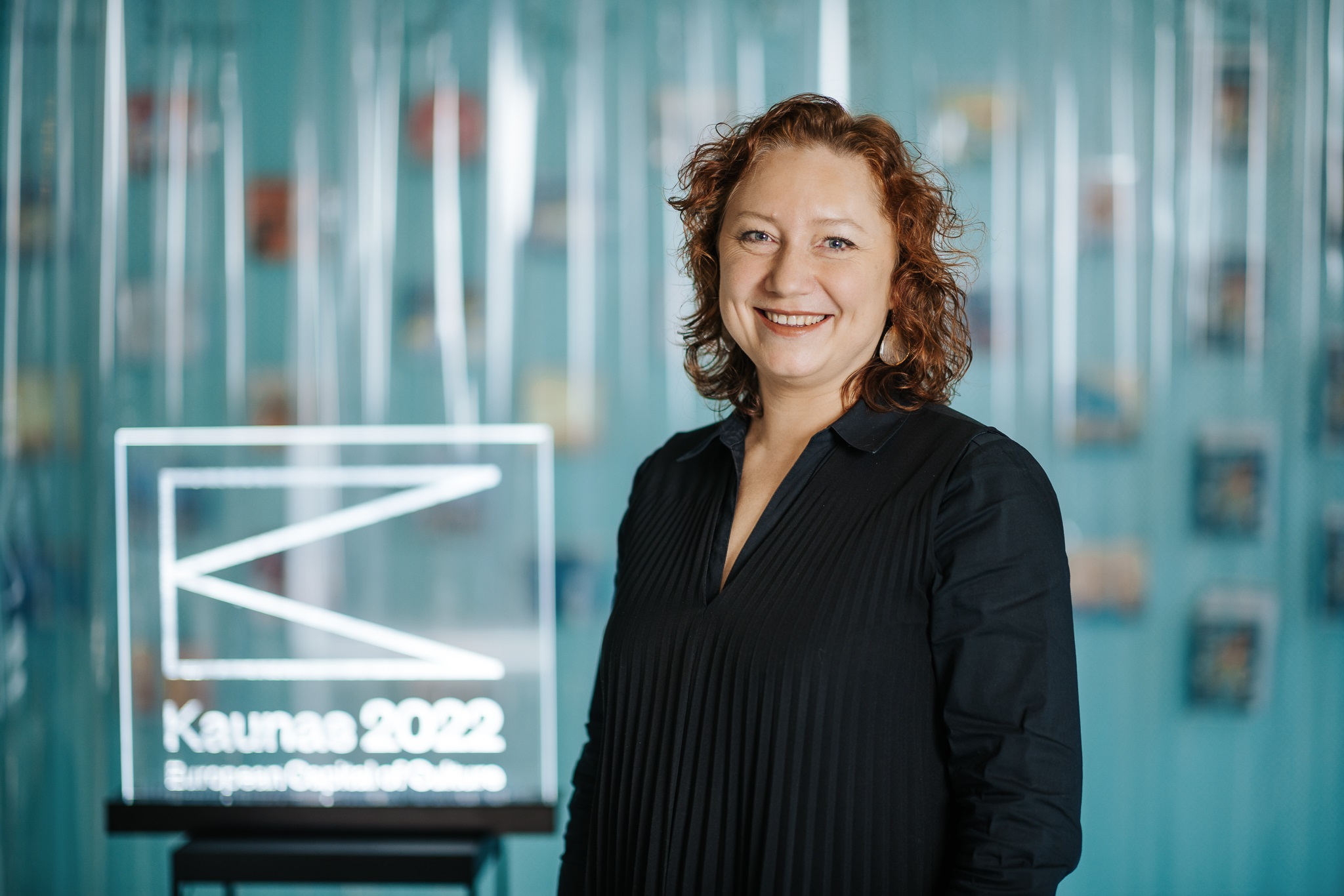
“We wanted to see what we could do when had all the right conditions to thrive. When you have a dream, you can achieve a great deal,” Virginija Vitkienė, leader of the European Capital of Culture programme in Kaunas, says. As 2022 draws to a close, she tells us that she has experienced the celebration and covered a decade’s worth of distance.
More than 3,000 events have taken place and over 2 million spectators and visitors have attended, over the project’s entire lifetime. With visits to museums and galleries having increased by a third, the number of foreign tourists having reached pre-pandemic levels, exclusive attention having been captured from foreign TV stations, not to mention all the world-class exhibitions that have taken place, the standard of cultural life in Kaunas, according to Vitkienė, has now reached levels seen in New York or Berlin.
She believes that over the years, Kaunesians have become more curious and their demand for quality cultural and art events has grown. We no longer perceive ourselves to be living in a province.
In the interview which follows, you can find out more about what will remain once the title-holding year is over, the gift that the Kaunas 2022 team delivered to the city, and what it managed to achieve in the round.
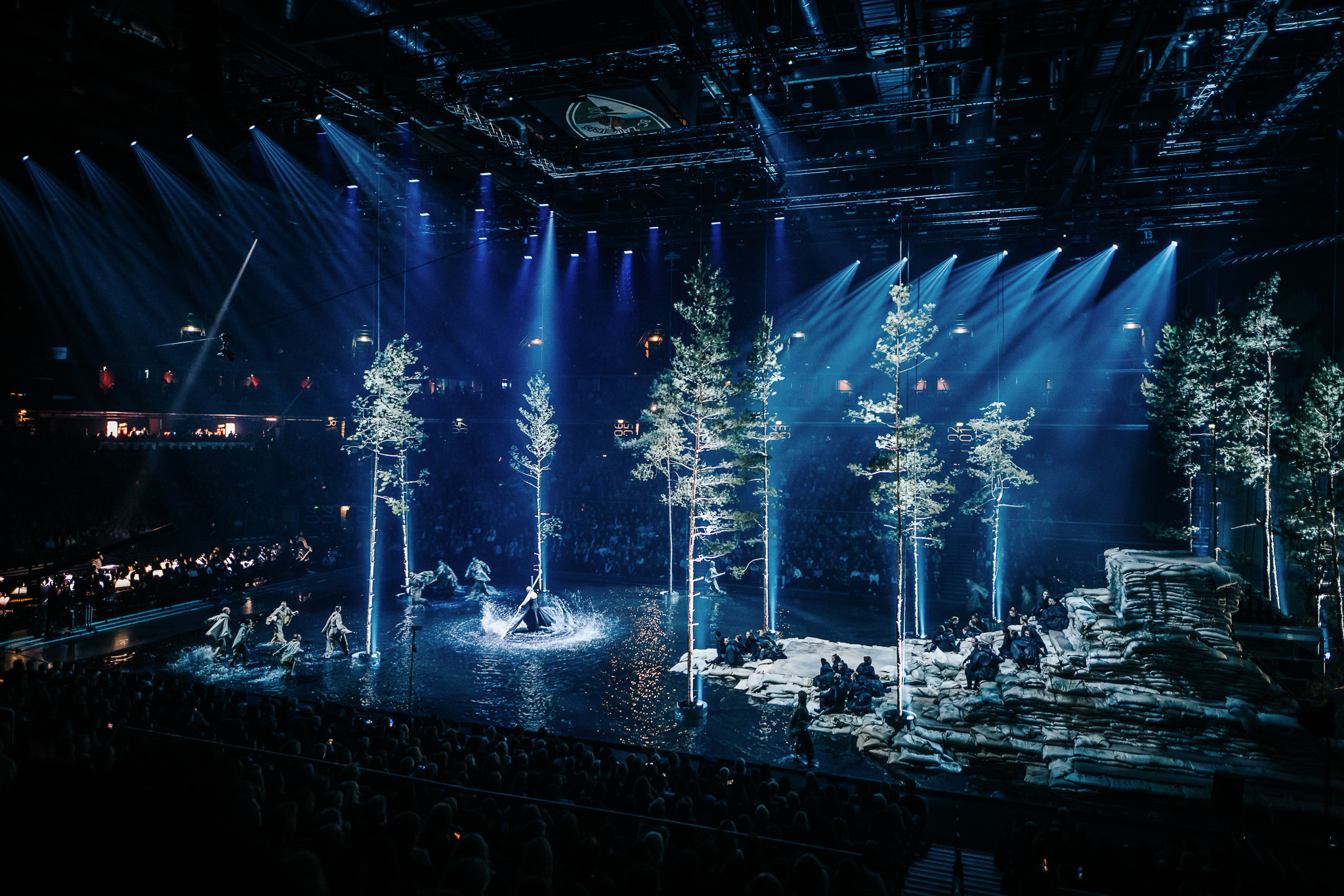
The European Capital of Culture programme is officially closed, and 2022 is coming to an end. How do you feel?
I feel a void within my sense of completeness. We have received so much feedback – people from the outside have been telling us that we have done a colossal job, and that the process of change is gaining momentum. However, the time has come to say goodbye to our team members. We wish one another to continue what we have started, and we cry on one another’s shoulders. This is probably how parents feel when they usher their children into the adult world.
What makes you proudest and happiest?
One of our goals was to stimulate the development of local cultural institutions. I can see this change very clearly – most of Kaunas’s cultural institutions have experienced a huge breakthrough in terms of internationalism. I believe that none of them will want to go back to the way things were.
For example, the National Kaunas Drama Theatre, which previously had no co-productions (productions created by several collaborating institutions), produced five international productions in a year. These included Dorian, with the D’haus Theatre in Düsseldorf, Germany; Visage, with the Esch City Theatre in Luxembourg; The Tower of Babel, which was staged by a creative team comprising members from five countries; and others. These performances have been presented on several European stages.
Although cultural professionals and staff may feel very tired, the feeling is very different now than it was a few years ago. Of course, it will still take time for all the excitement and experiences to sink in.
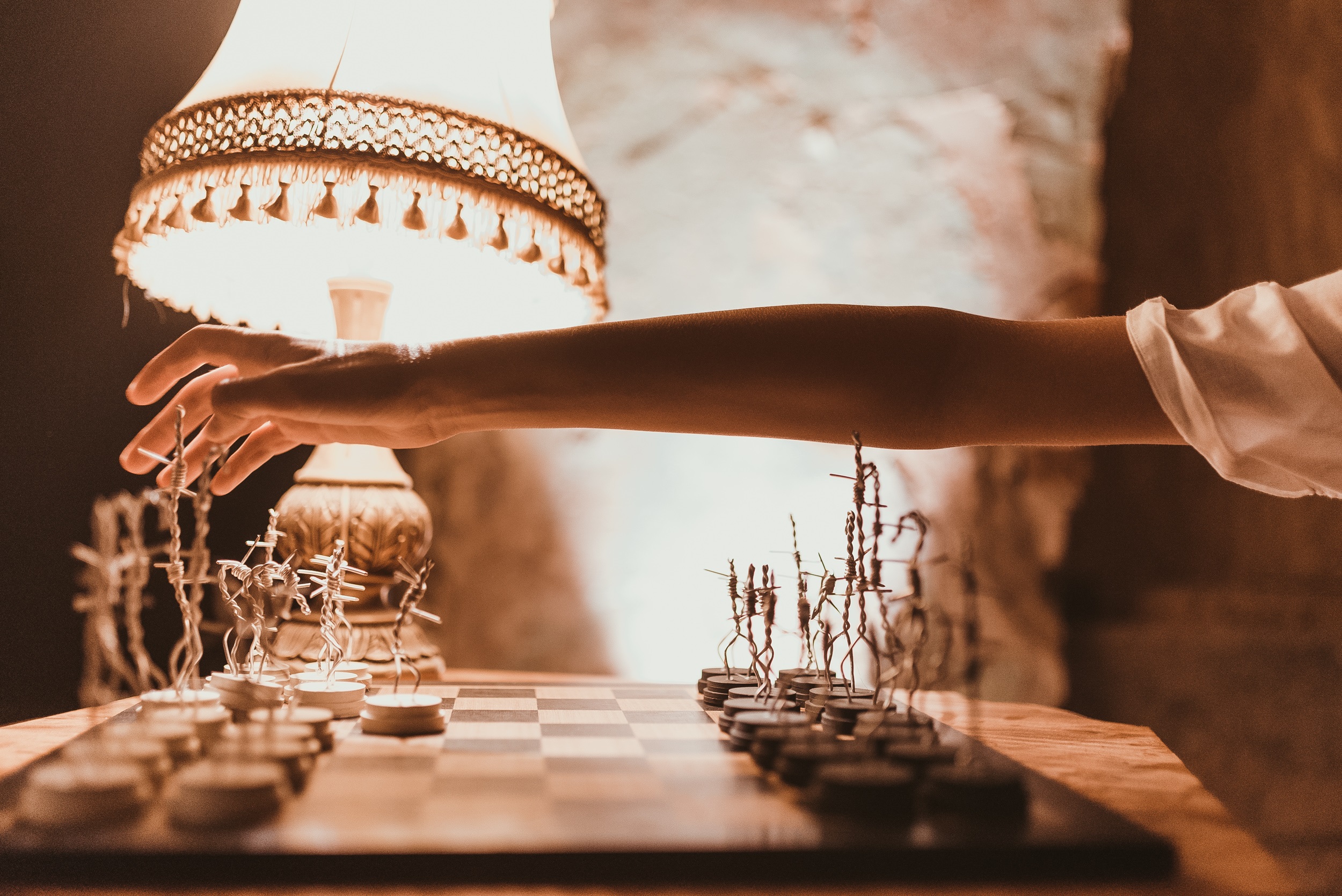
You probably know the programme better than anyone else. However, planning and experiencing it are not the same thing. Has there been anything that surprised you?
I was most struck by Jenny Kagan’s exhibition Out of Darkness. I knew that Jenny was working on that exhibition in a very sincere, personal way, and I had seen the catalogue of the smaller version of the exhibition and some of the photographs when it was held in England. I have been familiar with Jenny’s family history since 2017, when she started participating in the Kaunas Biennale. We all knew that Jenny’s parents had escaped the Kaunas ghetto, were hidden and provided with shelter by Lithuanians, fed for 9 months, kept secret and survived. But it was only just before the opening of Out of Darkness this year that Jenny told us that her grandfather had been among the victims of the massacre at the Lietūkis Garage.
Our Memory Office programme is designed to revive memory, to encourage truth and genuine conversations about what happened in Kaunas in 1941, especially on 26 June, when Lithuanians brutally massacred Jews. After all, when the tragedy of the Lietūkis Garage took place, there weren’t even any Nazis in Kaunas! Yet, for five whole years the artist had not disclosed this detail of her family’s history to us. Perhaps she wanted to spare us the accusation, the reproach.
Visiting Out of Darkness has been a harrowing experience for me as well. This exhibition-installation contained so many layers of meaning – it made me think not only about the tragic fate of the Jews during the Second World War, but also about the war in Ukraine today, about the choices people make in such situations and about hope where there seems to be none.
For Jenny, a light artist by training, this exhibition marked a huge leap in her career. With this work, she joins the elite ranks of the world’s artists. In my opinion, it was the best we have ever had in Kaunas. And even though the exhibition is now dismantled, it remains here – we are looking for a permanent location for this exhibition. It’s true that the process will take time, because this exhibition demands large spaces, which are in short supply.
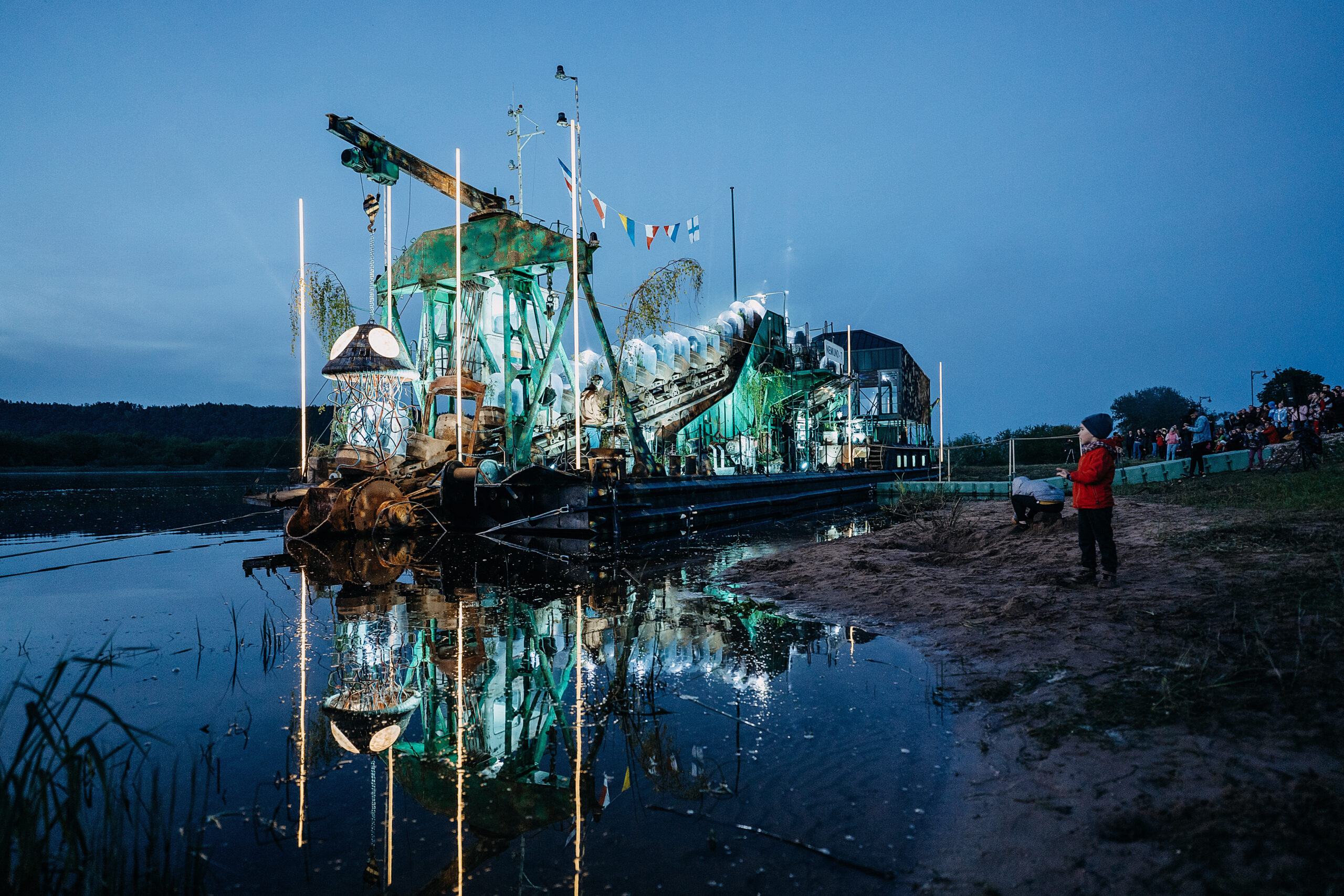
While it is too early to determine the long-term impact of the European Capital of Culture title-holding year, some figures have already been published. For example, 26 million euros have been spent on the programme over five years. Is that a lot or a little?
I think it is a lot for Lithuania and I am very grateful to all the sponsors. On the other hand, it is the same amount that Vilnius had in 2009, and if we consider the inflation over the past thirteen years, it would be fair to say that we have had less than Vilnius. And less than a half of what Esch, also this year’s European Capital of Culture, has had. For this city in Luxembourg of a mere 30,000 inhabitants, the programme’s budget alone was 67 million euros.
By the way, I visited Esch this autumn. Although I was impressed by the in-depth, inclusive programme, it is a pity that it did not attract much public attention. World-class exhibitions received small numbers of visitors. This only confirmed to me how right our strategy was to involve communities in the run-up to the event. Our museum and gallery staff say that this year, compared to previous years, we had three or four times as many visitors. Admittedly, our city, with its 300,000 inhabitants, is much bigger.
Compared to other European Capitals of Culture, 26 million is an average amount – neither too high nor too low. However, in terms of numbers, we have made this money go a long way – over 3,000 events have taken place, and if you count all the preparatory activities and various workshops, this number comes to over 7,000.
On the other hand, if we divide the 26 million euros by the over two million people who have visited the events of Kaunas 2022 over the last few years, the average amount spent per visitor comes to 13 euros. We’ve had quite a bounty of culture, for that amount, don’t you think? Based on these figures, we are making a proposal to municipalities, to governments: to fund culture by at least 2.5 euros per capita per year. With strategic thinking, with good planning, with that amount of money, a lot can be achieved.
I would also add that the only reason we were able to spend the money so wisely was because we knew very well in advance how much we would have each year. When the municipalities and the government approved their grant amounts, back in 2016–2017, we already had a budget plan running up to 2022. It changed very little. By 2022, we had spent almost half of the planned budget.
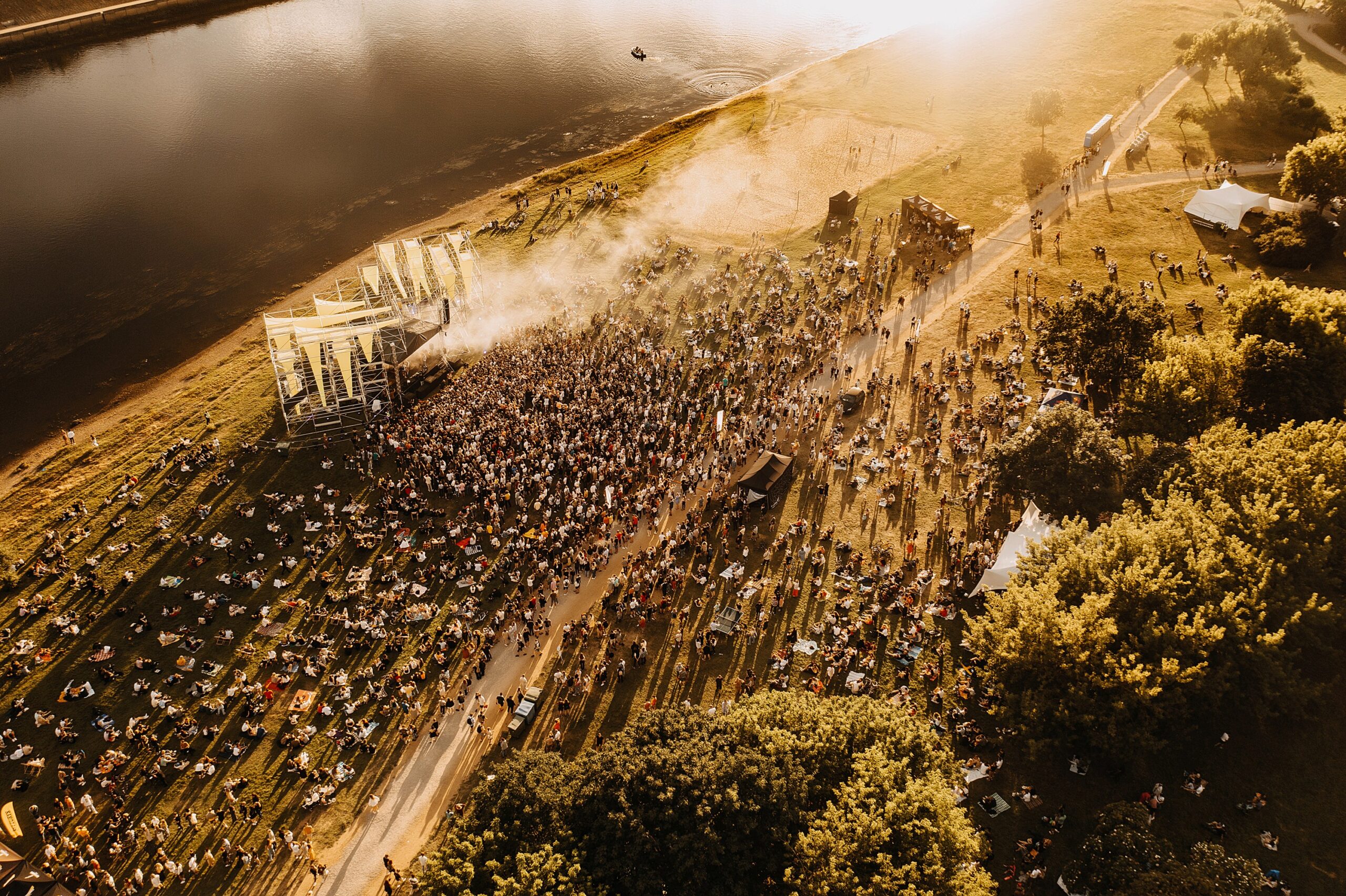
That leaves around 14 million for 2022. The figures seem huge.
Considering that our strategic plan was implemented by 72 partners who proposed more than 170 projects, each consisting of a dozen events... In the end, the figures for each project have remained very small, similar to the cost of a concert or any other event in a regular year.
Still, the three major events of the Contemporary City Trilogy were truly extraordinary. You have mentioned in the past that they accounted for the lion’s share of the 2022 budget. Was it worth it?
I would say that these were very successful events – we created and delivered major celebrations for the city. The city really needs such massive events, engaging hundreds of thousands of people. The opening was not without its challenges, given the pandemic management requirements, as we all had to freeze outdoors in the cold weather, but people’s spirits were not dampened, and the celebration continued in the city for the rest of the night. I saw so many smiling faces – after the long period of social distancing people were longing for interaction. “The Confluence” event, which replaced the “Kaunas Days” festival, brought out a completely new quality and raised the bar – the city has never before witnessed a concert on such a scale taking place upon the flowing waters of the city’s rivers. And the balletoratorio “The Contract”, I think, exceeded everyone’s expectations, including those of our team. It was a spectacular piece by the greatest Lithuanian artists.
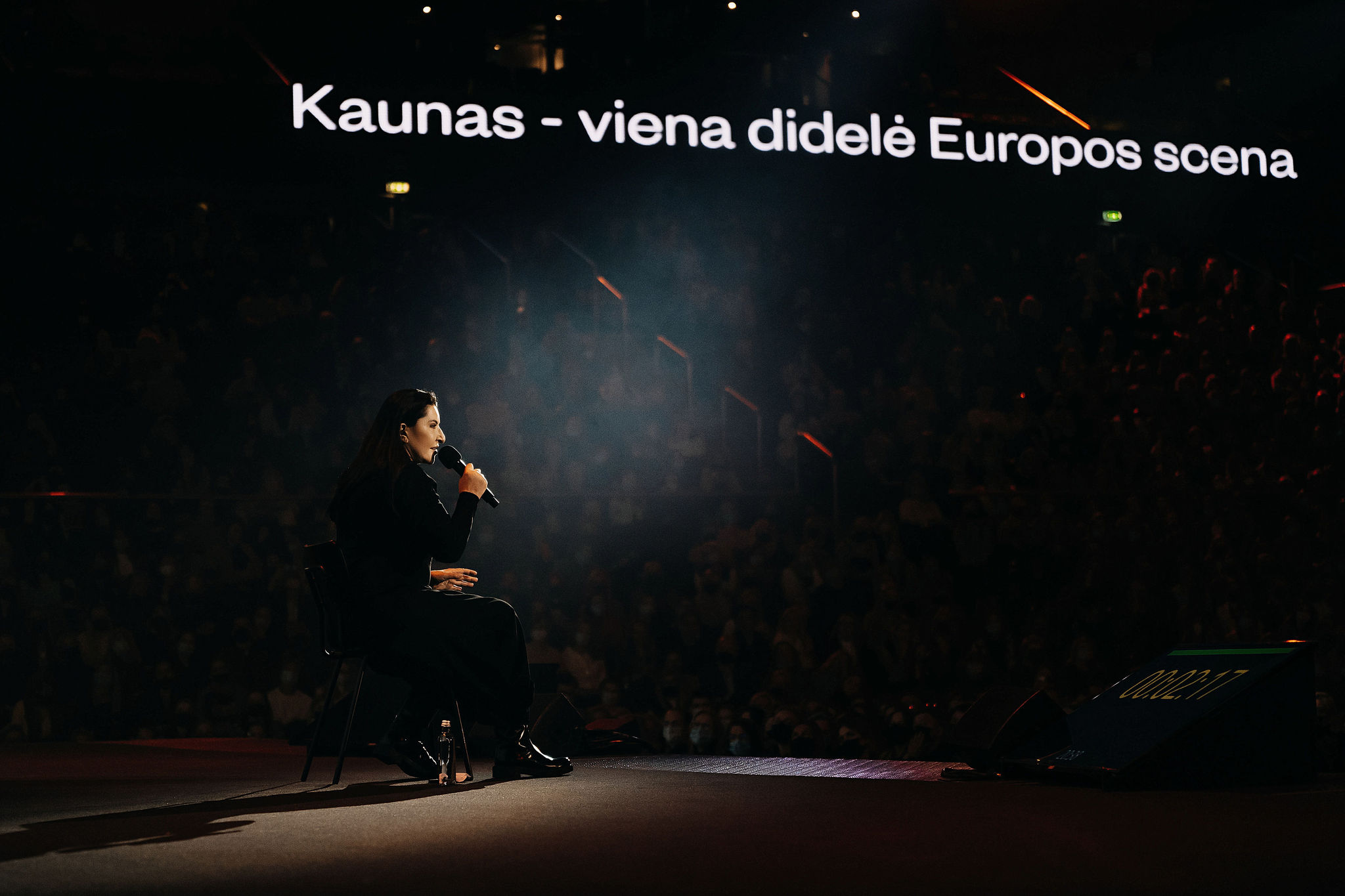
I am really glad that we brought the idea of a city trilogy, conceived by Rytis Zemkauskas, to life (after all, we could have just had three separate events). We hoped that the events’ ritualistic and recurrent nature would allow the residents to feel a certain sense of being at one with their city. If you participate in a shared happening with others, you feel as if you have been ordained. Those who have attended even a single one of the big events, I believe, feel as though they have travelled along a certain path. As though they have signed a contract with their city.
And the two million visitors – has this figure matched your expectations?
It’s hard to tell. We had no numerical target covering these several years. It was difficult to forecast the number of foreign tourists. And although we haven’t counted them fully yet, based on the pillow tax paid in the last 10 months, tourist numbers in Kaunas have caught up with those of 2019. These are pre-pandemic figures, which is the tourism sector’s ambition in every country. On the other hand, in our commitments to sponsors, we had set a target of one million people for this year. We exceeded this target by reaching 1.2 million. Besides, we had a large number of returning viewers – I have personally visited William Kentridge’s exhibition more than 20 times, and I’m sure I’m not the only such person. By December, this exhibition had been viewed by 37,000 visitors.
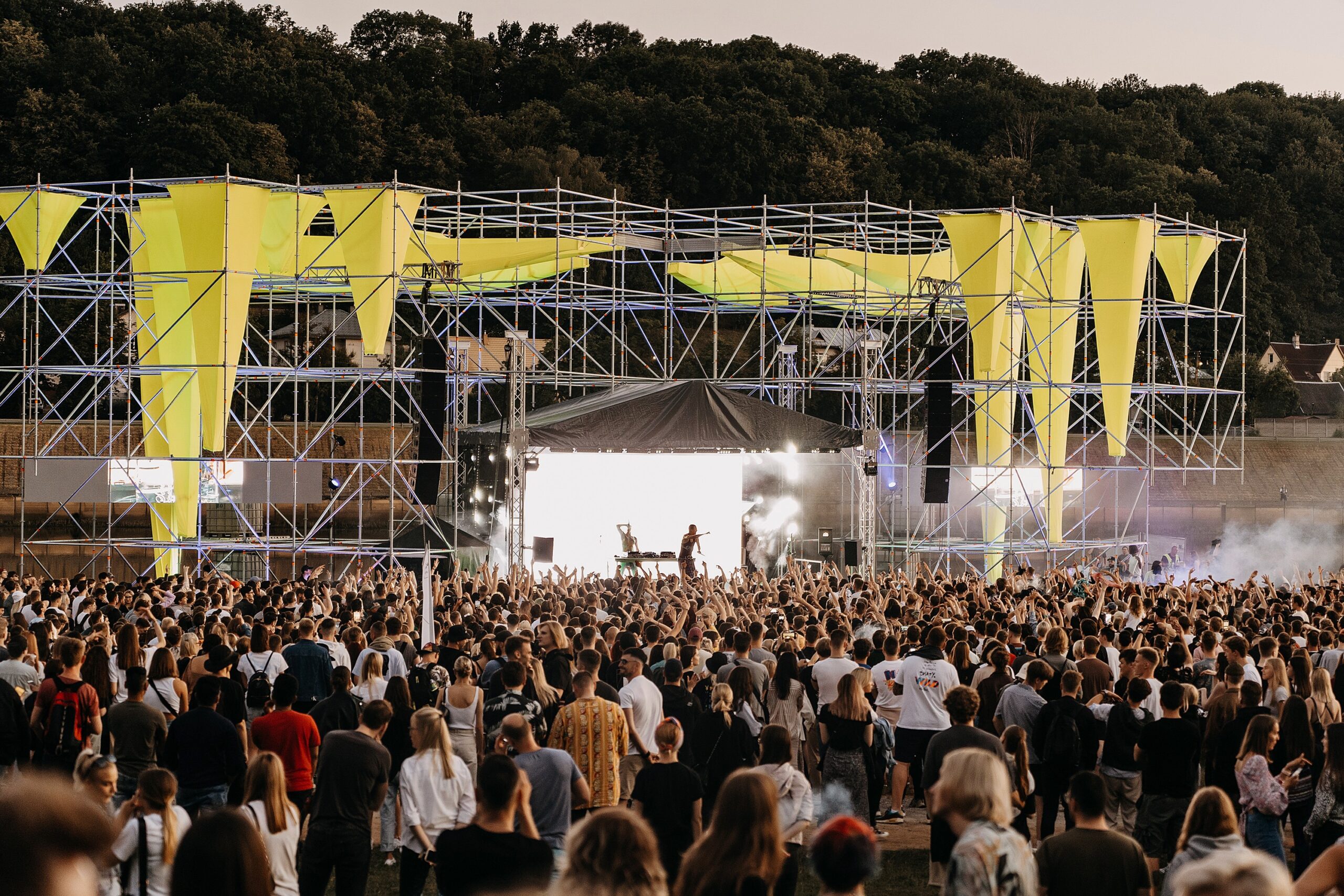
Audra, M. Plepio nuotr.Last year, you suggested that such names as Marina Abramović, Yoko Ono and William Kentridge would inevitably put Kaunas on the European cultural map. Maybe we are already on it? Or is it too early to tell?
A great way to measure how widely we have been noticed is through foreign media coverage. The programme was of particular interest to German journalists and TV crews; Kaunas was also filmed by Italian TV. As many as three half-hour programmes have been shown on prime-time television, focused not on our castles, best restaurants, traditions or other aspects relevant to tourists, but on the European Capital of Culture programme specifically. This is something unique.
Kaunas’s architecture was discussed through our programme’s conceptual lens, admiring not only our inclusion of architecture in the European Capital of Culture programme in general, but also the ingenious way we have utilised the narrative of inter-war modernism, encompassing the founders of the Art Deco Museum, the Capital of Culture’s concierges, and the hospitality programme. The new legend of Kaunas, the Memory Office’s programmes, and the way we have involved citizens in telling the city’s history were also introduced to wider audiences. We welcomed journalists from Latvia and Poland. Some of them visited Kaunas several times.
Foreign TV stations presented the AUDRA Contemporary City Festival, the central event of the youth programme, as something miraculous, as well as covering the CulturEUkraine Centre, and the William Kentridge exhibition, amongst others. This is a whole new level of international visibility. Kaunas was presented not as a conventional tourist destination, but as a cultural centre. We are very pleased with this. That is what we were aiming for.
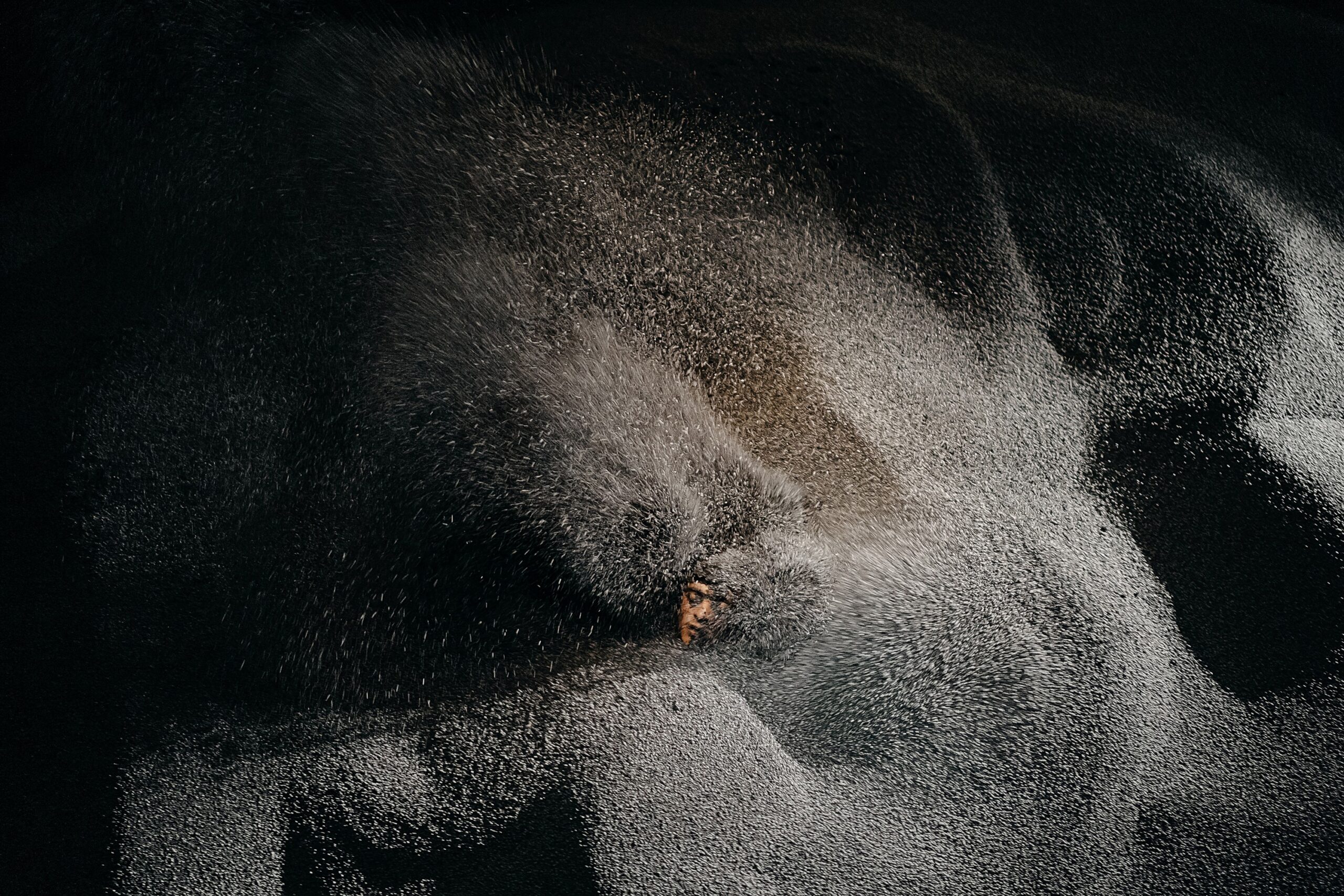
L'absolu, Contempo festivalis, M. Plepio nuotr.At the beginning of the conversation, you mentioned the change happening in cultural institutions. And how have Kaunesians changed? What is their attitude towards the consumption of culture, and towards their city today?
I hope that we are all more proud of where we live. Kaunas can no longer be considered merely a province. Of course, it would be quite sad if in five years’ time we went back to having very little culture. I would expect that we will see the real impact around that time.
But if we could maintain at least a tenth of the capacity of a European Capital of Culture, if we could have culture for at least a million euros a year... We would certainly be able to consume that kind of supply – it was actually impossible to take in everything that was on offer this year. Of course, there will have to be a change of mindset and we will have to pay more for culture. This year we were able to offer many events for free or at a significantly reduced price.
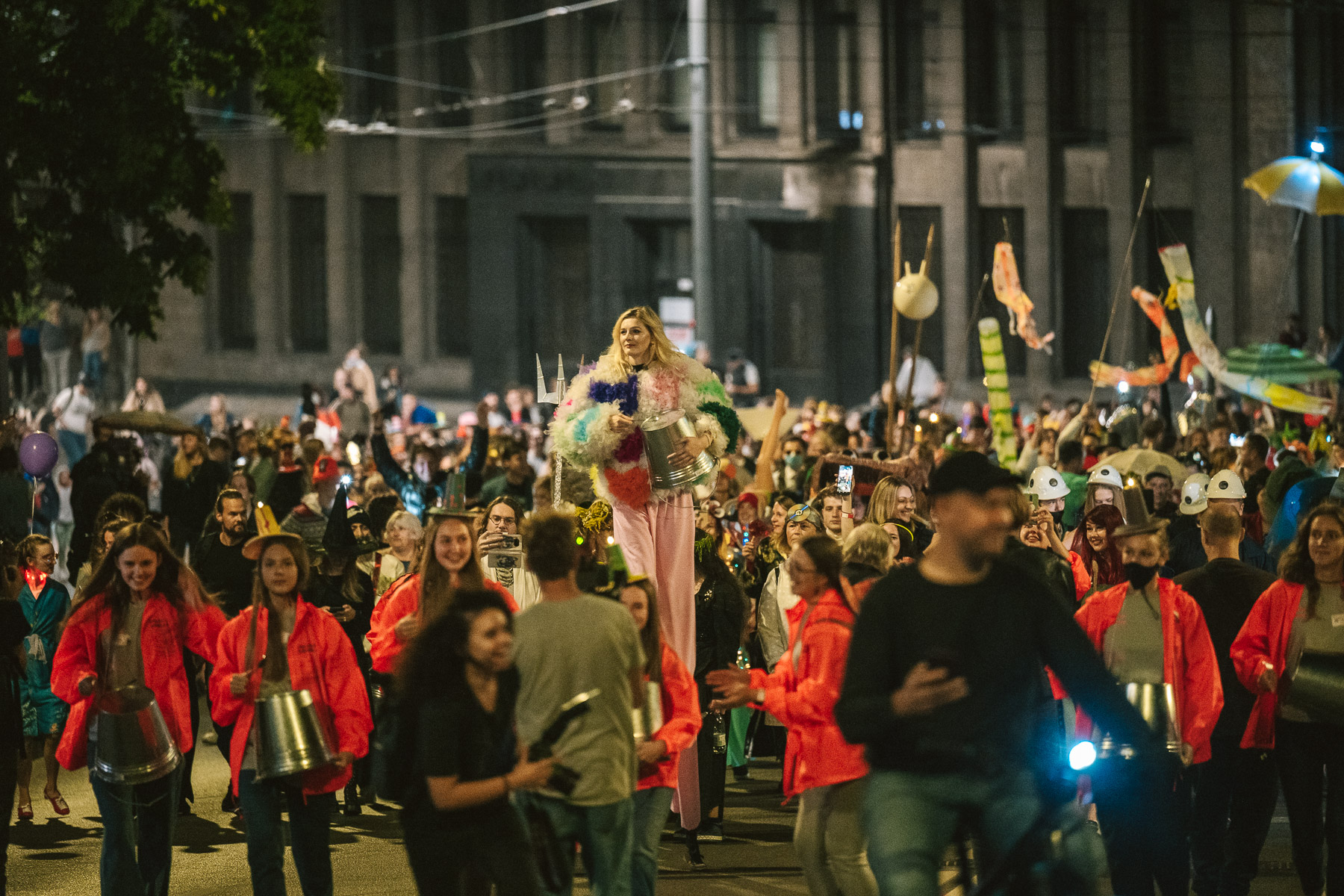
Do you see a change in the authorities’ attitude towards culture funding?
At the moment, we are in the process of planning next year’s budget. Kaunas District Municipality has planned for quite a solid amount of money going towards continuing many of these new initiatives next year. In Kaunas, the budget is still being planned, we are handing in our proposals. Since the city is quite big, a greater number of new initiatives have been launched – not only 12 new festivals, but also other activities – and it would take 600,000 euros more than last year to continue them. We will be able to assess the degree of political will soon enough. It would be great to see an understanding that culture adds vibrancy to the city and improves its reputation.
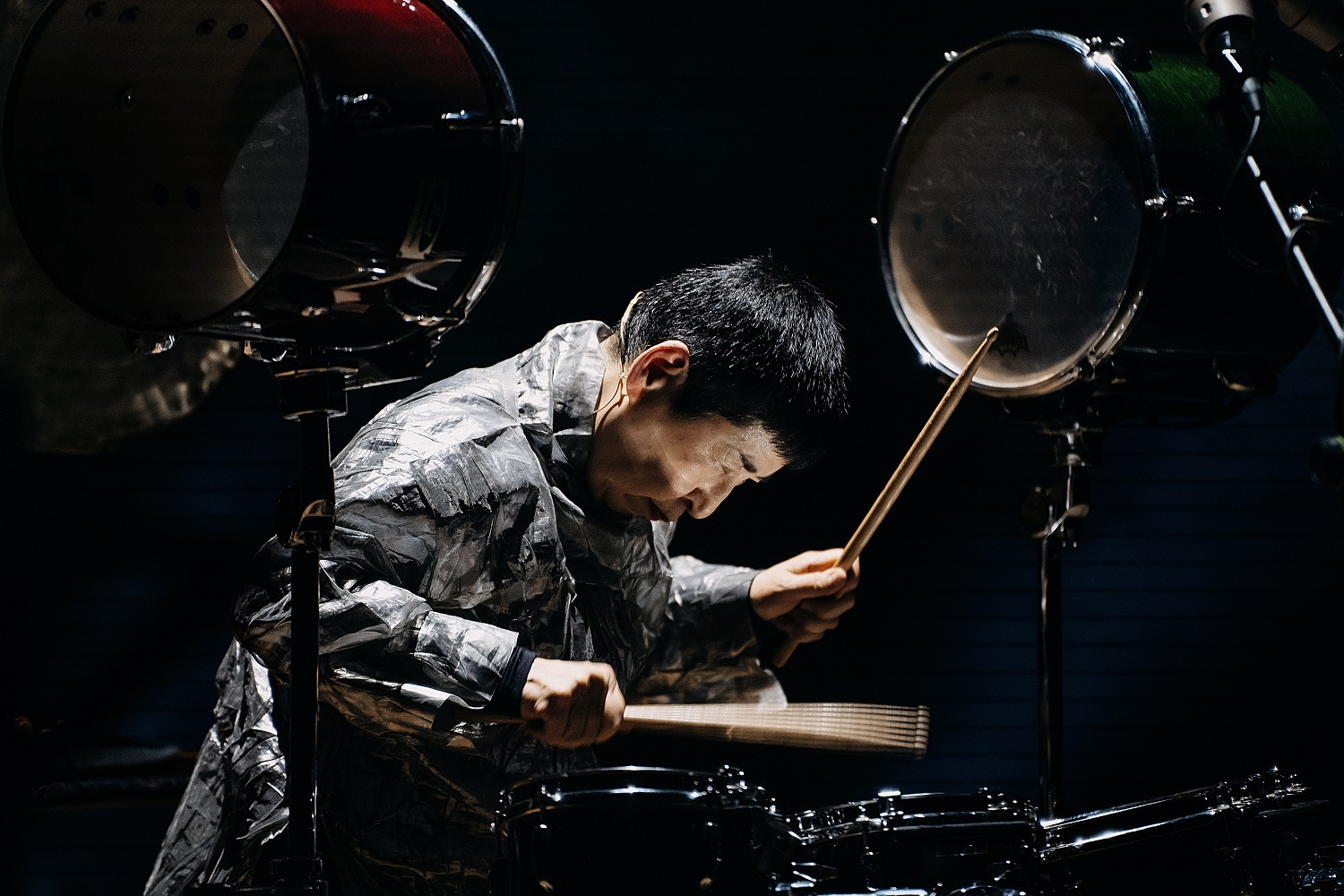
You also talk about long-term partnerships between cultural institutions. This seems to have been one of the strengths of the team you lead. Kaunas 2022 brought together around 12,000 representatives from the culture and arts sector. That includes artists who are usually considered individualists. How did you manage to achieve this?
People who have been involved in this project have taken it as a personal challenge. We all realised that this was a temporary mission, a project, a stage in life. We were running on a higher gear than we normally do when working in the same cultural institutions. Maybe we wanted to see for ourselves what we can do when we have more resources, for example, a larger budget. We often say that there is not enough money for culture, so we can’t do this or that. Now, we had all the right conditions, we had everything, so we could do what we had always dreamed of. I think that the “Meno Parkas” Gallery and its director Arvydas Žalpys have dreamt about hosting Marina Abramović’s exhibition ever since they were involved as partners in Marina’s 2019 exhibition in Poland. This year in Kaunas, he had the opportunity to host a great retrospective of this world-renowned artist. When you have a dream, you can achieve a great deal.
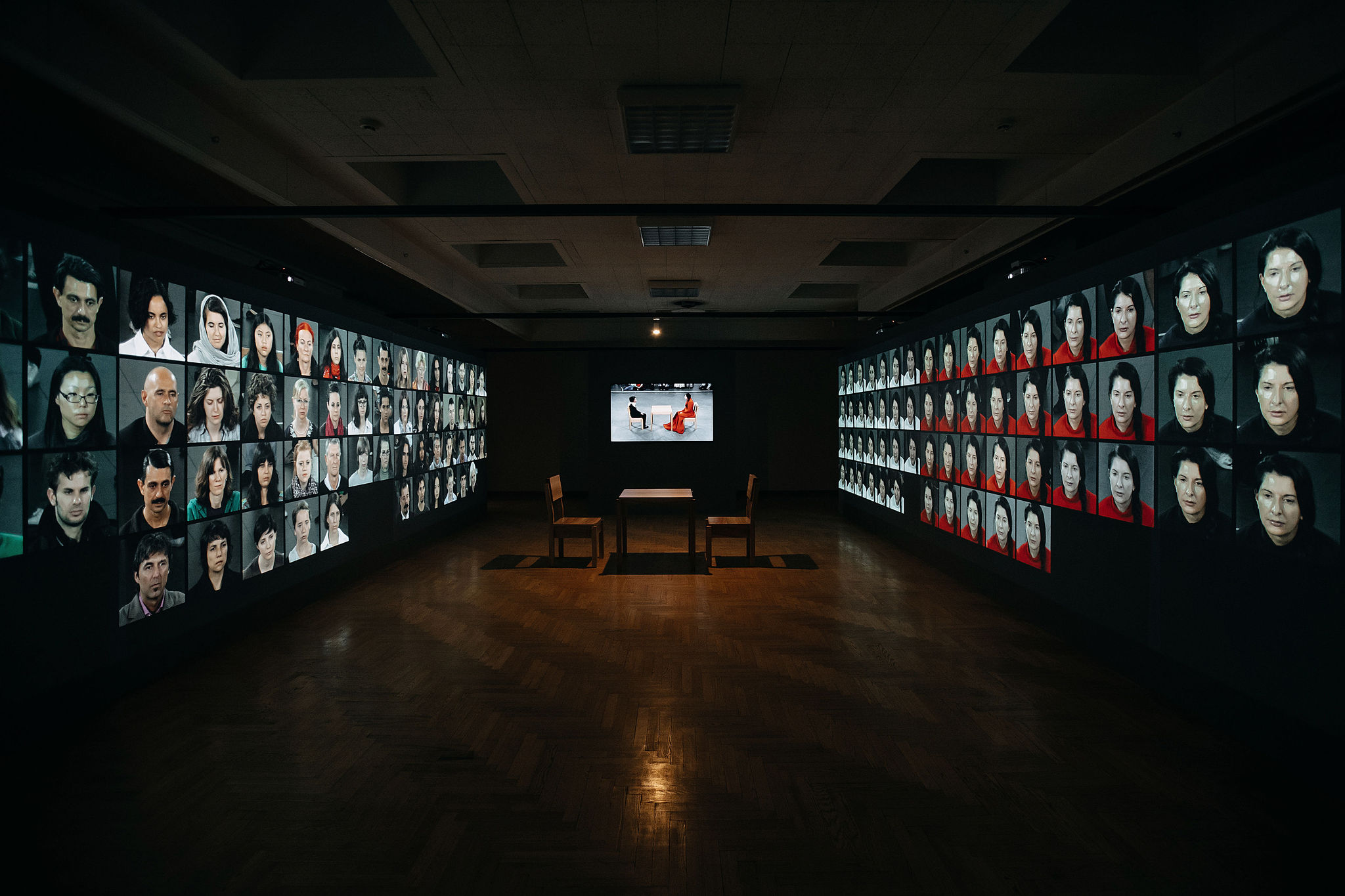
Your answer reminds me of the end of the hero’s journey cycle, discovered by the mythologist Joseph Campbell: once the hero, having faced the enemy, has defeated the enemy and himself, he returns with an elixir. That elixir is important not only for him, but for all the inhabitants of his world. What sort of elixir did the heroes of the Kaunas 2022 journey bring back with them to Kaunas?
In my view, we have all become more interested in our surroundings, both near and far. Today, we want to see not only the façade, but also what’s happening behind the front door. The people of Kaunas have started to appreciate not only modernist buildings themselves, but also their history and what is happening inside them today. We have begun to care more about our neighbours – what they are creating, and how they live. That heightened curiosity, that desire to know and to be engaged in life – could that perhaps be the elixir?
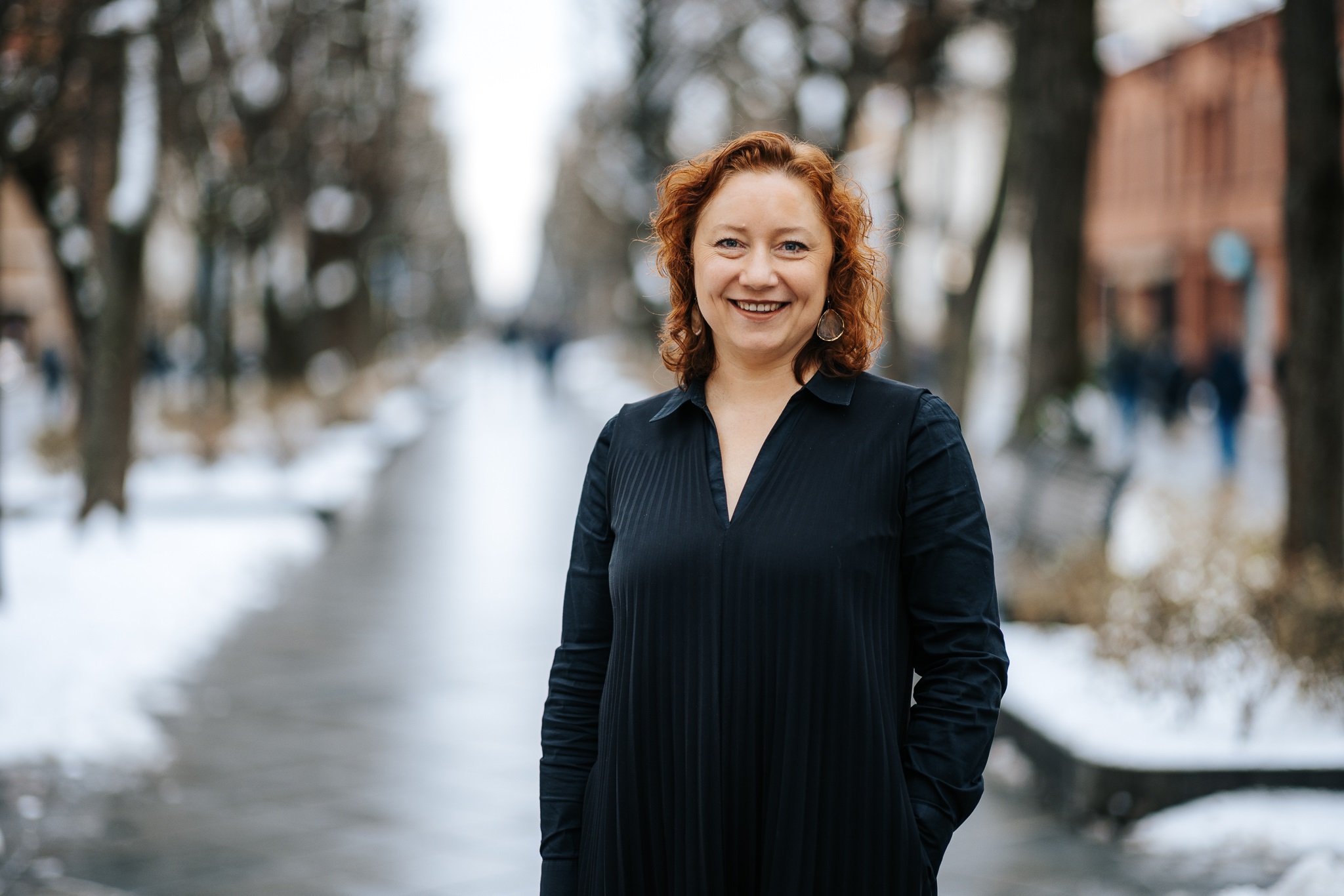
World premieres and art in non-traditional spaces: the most important October events in Kaunas
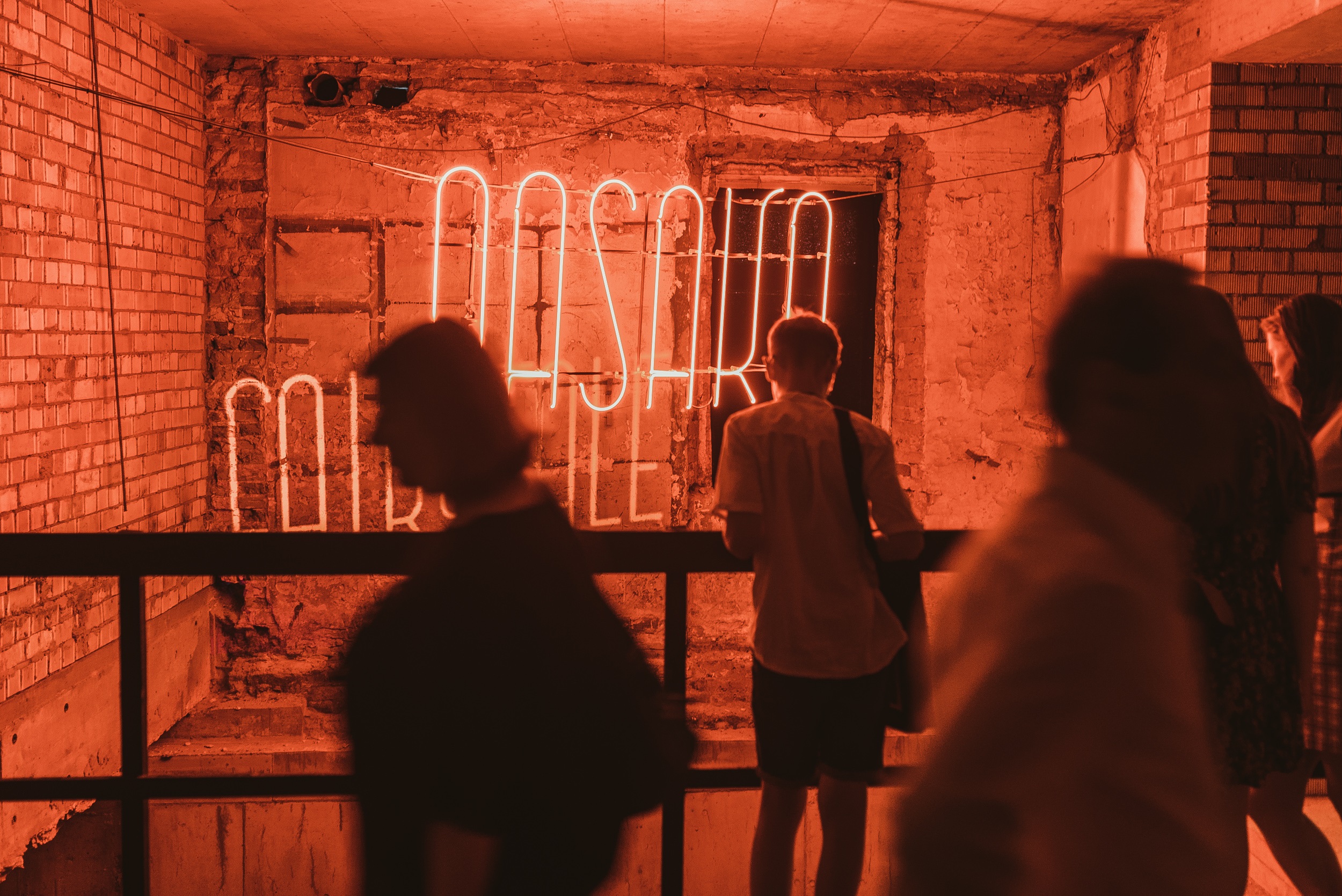
Although the year of the European Capital of Culture in Kaunas is slowly coming to an end, October offers many more inspiring experiences waiting for culture enthusiasts. From design events and exhibitions of world-famous artists to music premieres: “Kaunas 2022” is pleased to share some recommendations on what to see and what not to miss in the autumnal city.
“Woven Art: 20th Century European and American Carpets of the Avant-Garde”
“An exhibition that reveals the spirit of the 20th century through the interwoven synergy of different types of art” - this is how the exhibition “Woven Art: 20th Century European and American Carpets of the Avant-Garde” could be described. The exhibition presents various carpets and collectable furniture created by the world's most prominent artists.
When: 1–14 October
Where: Kaunas Artists’ House
More information is available here.
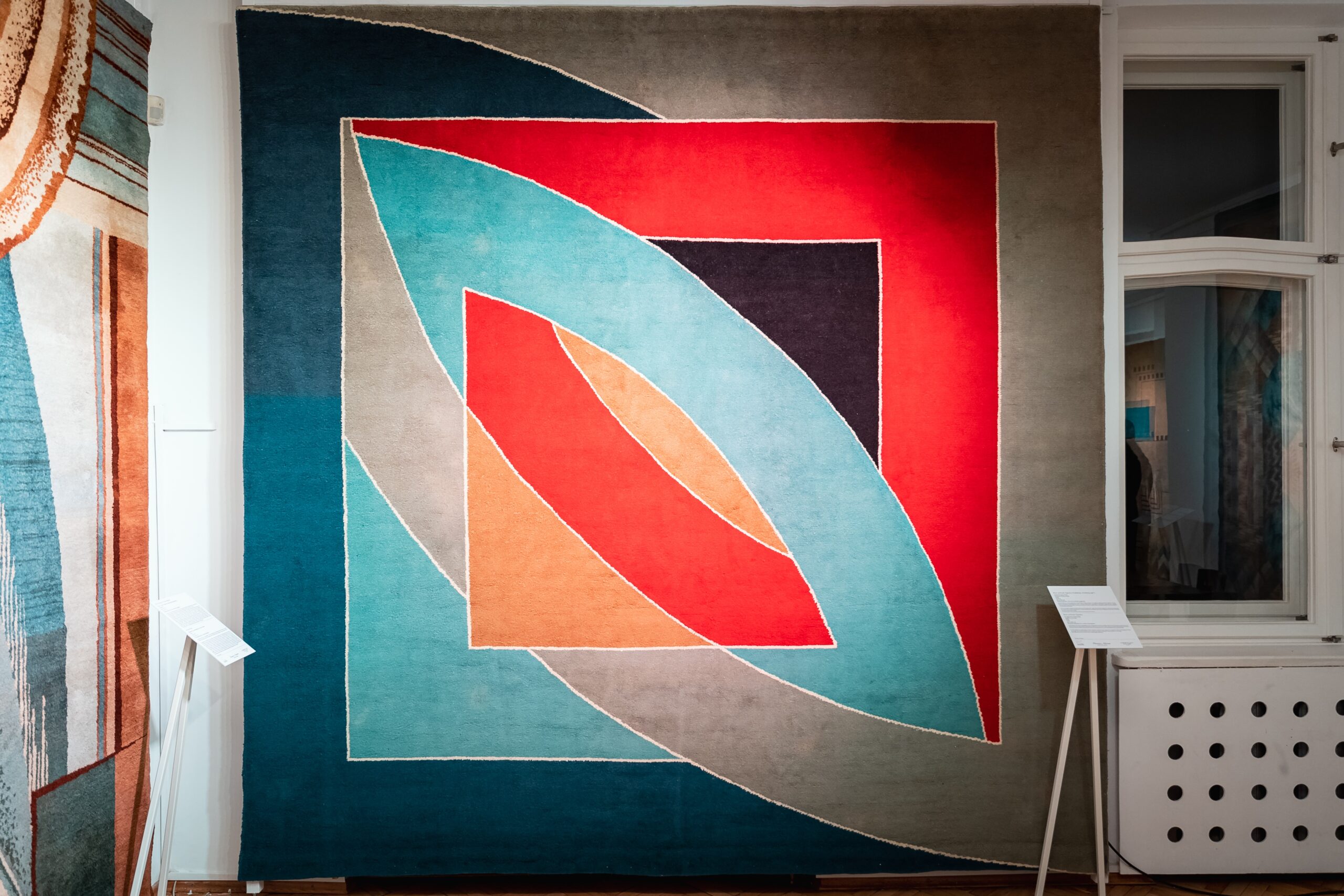
Yoko Ono’s retrospective exhibition “The Learning Garden of Freedom”
The Learning Garden of Freedom is a retrospective exhibition of Yoko Ono’s work organized in collaboration with Studio One in New York, founded by the artist herself, the Contemporary Art Centre in Vilnius, and the Kaunas Picture Gallery in Kaunas. The exhibition presents an overview of Yoko Ono’s works, including various creative periods and practices ranging from conceptual art and experimental films to spatial installations, objects, and performance art.
When: Until 4 December
Where: Kaunas Picture Gallery, K. Donelaičio St. 16
More information is available here.
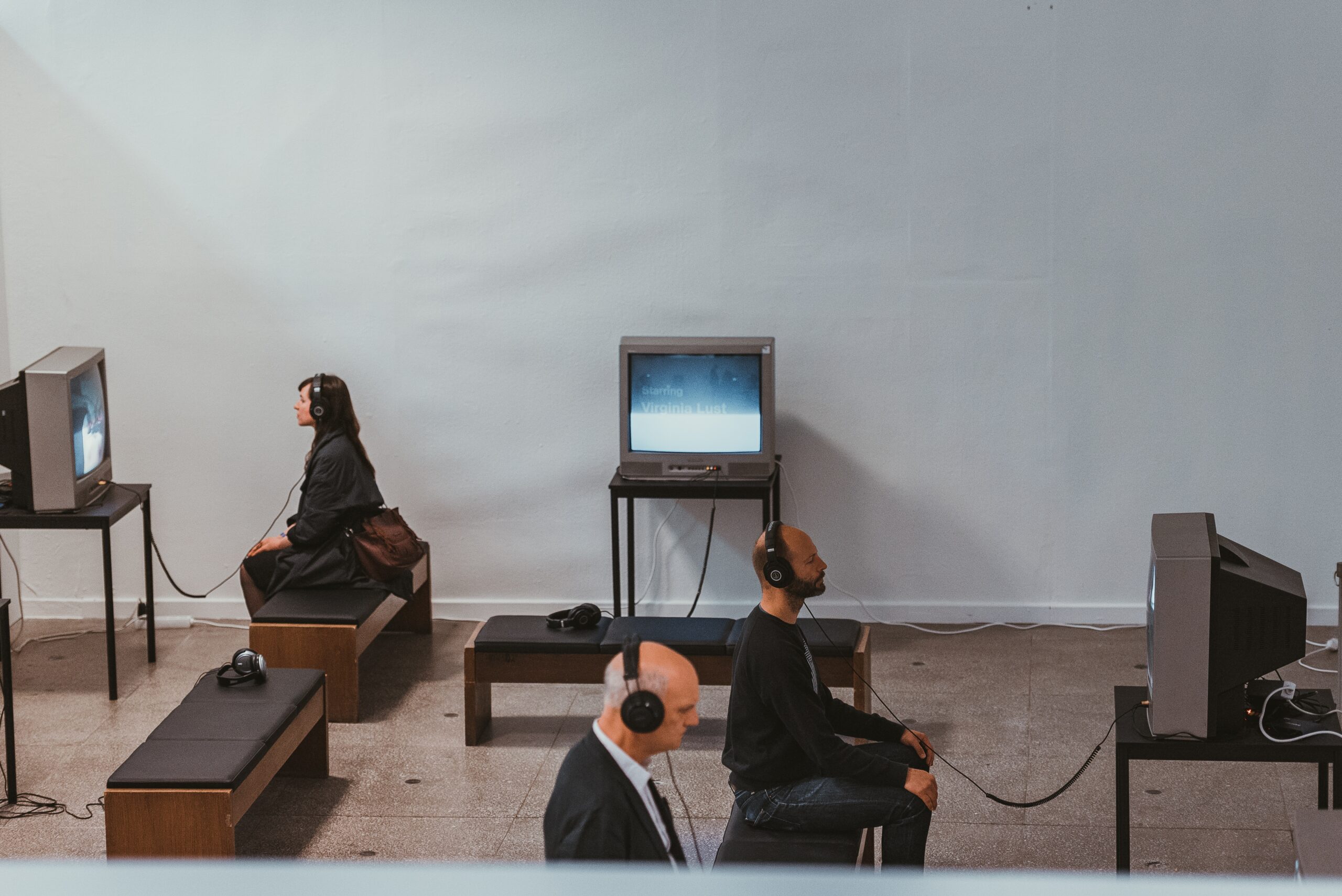
Royal Philharmonic Orchestra concert
Kaunas State Philharmonic Orchestra and Kaunas – European Capital of Culture 2022 present an exclusive international project created with the famous Royal Philharmonic Orchestra and piano virtuoso Simon Trpčeski. The Royal Philharmonic Orchestra, celebrating its 76th birthday this year, is at the forefront of musical life in the United Kingdom (UK), with a mission to enrich the lives of its audiences with the perfect and immersive experience of orchestral music. In the programme: Sergei Prokofiev, Ludwig van Beethoven and Jean Sibelius.
When: 12 October
Where: Kaunas Žalgiris arena
Tickets are available here.
CityTelling Festival. “The Dybbuk”
The CityTelling Festival, aiming to remind the multi-ethnic memory of Kaunas and its surroundings continues and invites to one more premiere. On October 14-15 at the Kaunas cinema centre “Romuva”, the audience will experience a mystical and mysterious event – the musical performance “The Dybbuk”. The performance created by the Kaunas Symphony Orchestra and a group of Israeli actors will combine the fields of music, cinema, and theatre and will tell a love story inspired by Jewish folklore.
When: 14-15 October
Where: Romuva cinema
Tickets are available here.
Forum of International Design Networks
This year, Kaunas can be proud not only of the title of the European Capital of Culture but also of the fact that it is gradually becoming a real centre of the design. This October, for the first time in the country ‘s history, the most important world design organizations will meet in one city. The forum will be attended by such global design networks as the UNESCO Cities of Design Network, ICoD (International Council of Design), BEDA (Bureau of European Design Associations), and EIDD (Design for All Europe). The programme will feature several conferences, workshops, and meetings.
When: 14 October
Where: Žalgiris arena amphitheatre
More information is available here.
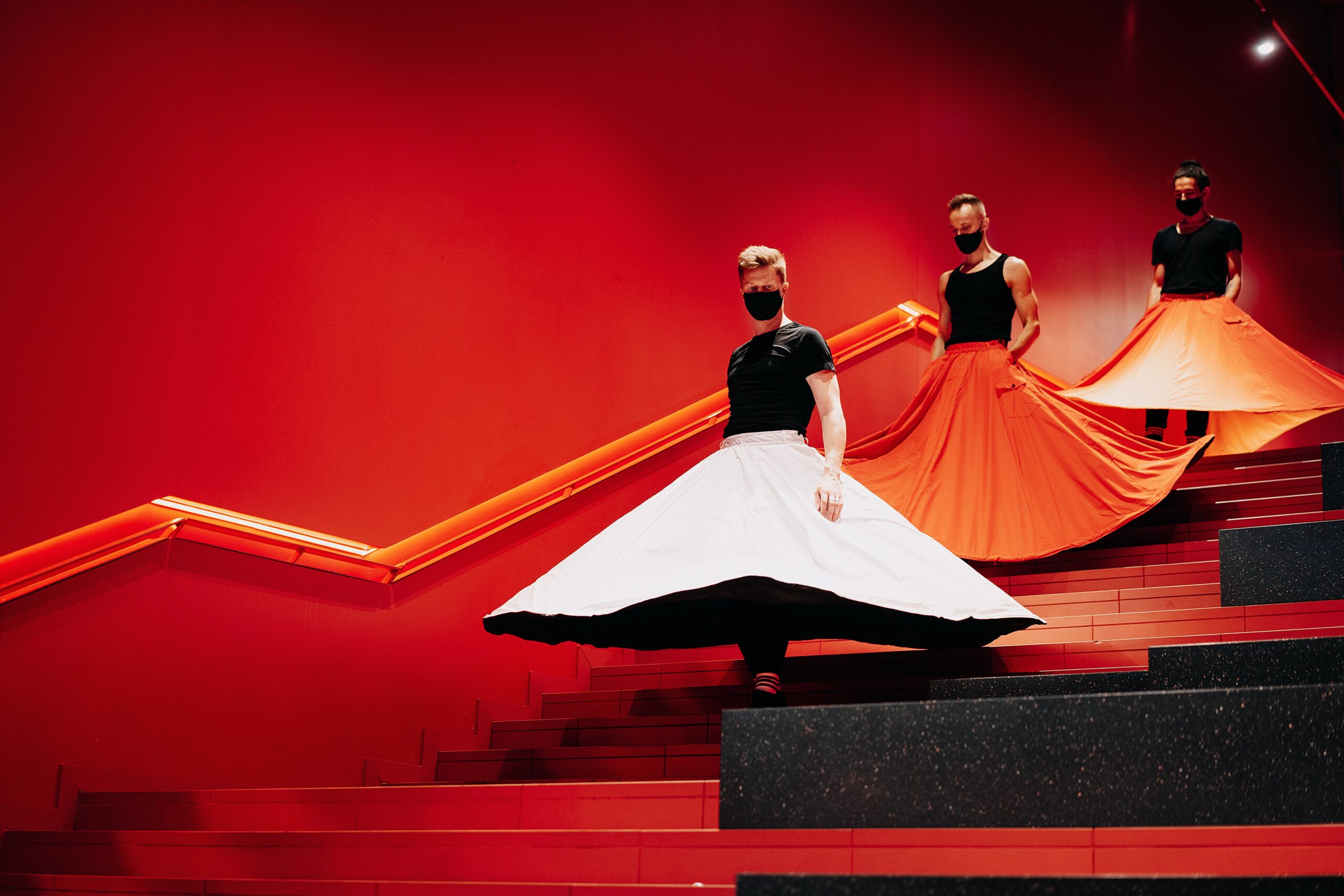
Andrew Lloyd Webber’s “Requiem”
On October 31st at Žalgiris arena, Kaunas City Symphony Orchestra and Kaunas – European Capital of Culture will host a Requiem by Andrew Lloyd Webber, one of the most famous contemporary composers and winner of the prestigious Grammy Award for music. Together with the Kaunas City Symphony Orchestra, the audience will see many well-known performers, including tenor Edgaras Montvidas, soloist Kseniya Bakhritdinova-Kravchuk, and the Kaunas State Choir.
When: 31 October
Where: Žalgiris arena
Tickets are available here.
OSTRALE contemporary art exhibition. „Streams upstream“
The OSTRALE Biennale in Dresden is one of the largest contemporary art exhibitions in Germany, organized in non-traditional spaces, initially designed for purposes other than art. “Streams upstream” is the final OUT of OSTRALE event, completing the series of European cultural cooperation project “Flowing connections”. This is an exhibition about globality and all the nowness, unfulfillments and subtexts of this multi-layered phenomenon.
When: 5 October– 13 November
Where: Kaunas Central Post Office
More information is available here.
Interactive exhibition “Out of Darkness”
Artist Jenny Kagan, daughter of Juozapas Kagan and Margarita Štromaitė from Kaunas, grew up in the United Kingdom, surrounded by stories of pre-war and wartime Lithuania. In the exhibition Out of Darkness, she brings the extraordinary story of her parents’ survival in Kaunas during the Holocaust to life. The exhibition’s setting, including images, music, video projections, and other elements, immerses the viewers in a narrative that is both personal and universal.
When: until 30 October
Where: Gimnazijos St. 4
Tickets are available here.
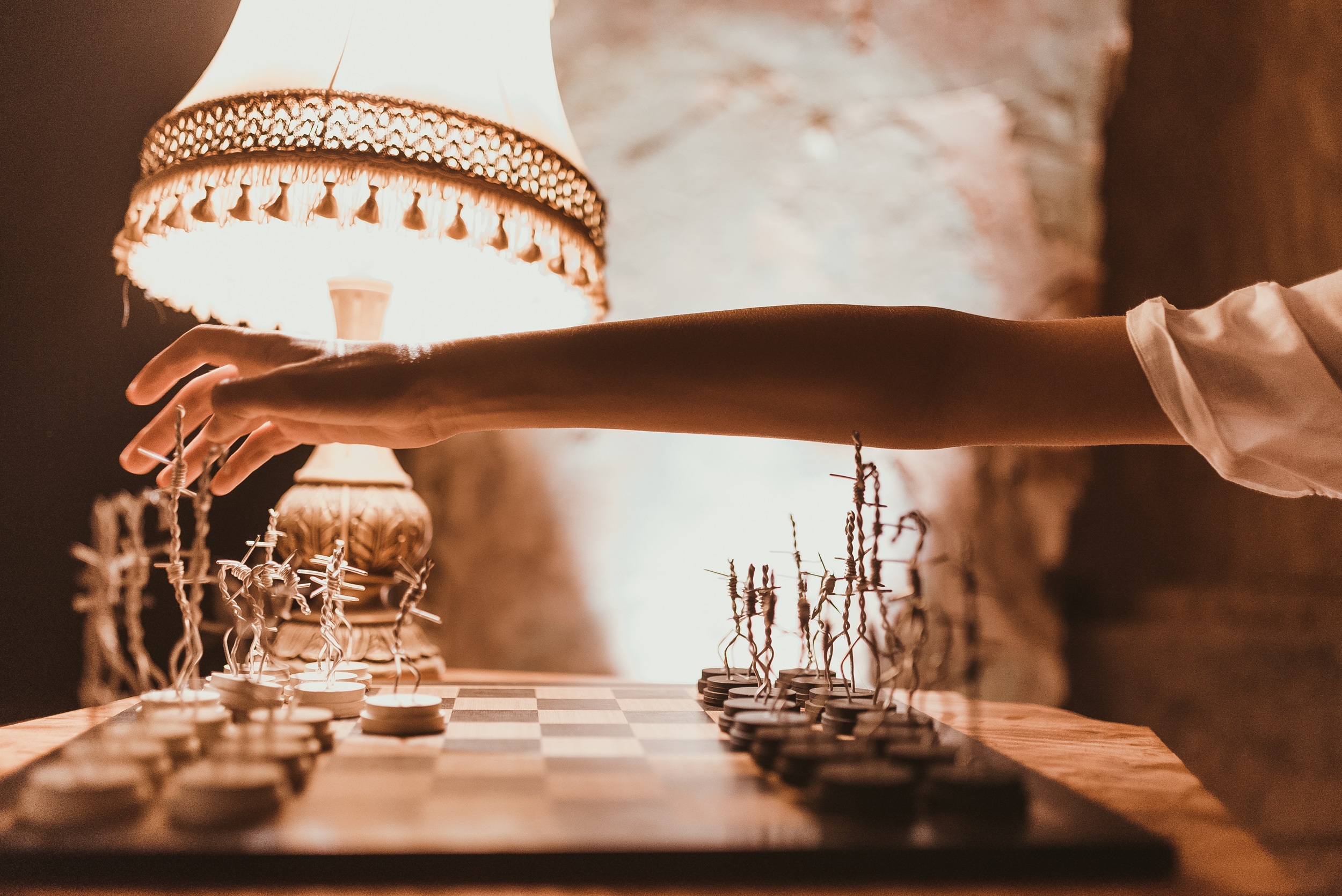
The autumn of culture continues
October events and exhibitions are designed for everyone's taste. A pleasant surprise awaits lovers of porcelain art at the Kaunas Central Post Office - the Exhibition of International Bone China symposium, “the Porcelain City”. Theatre lovers will surely find it interesting to see the performance “Dorian” directed by one of the most famous contemporary theatre figures, artist Robert Wilson. Moreover, the cultural boat “Nemuno7” will complete the series of exhibitions “Fluid Bodies” with authentic interpretations of the theme of ecology. The full Kaunas 2022 programme is available at www.kaunas2022.eu or on the mobile app.
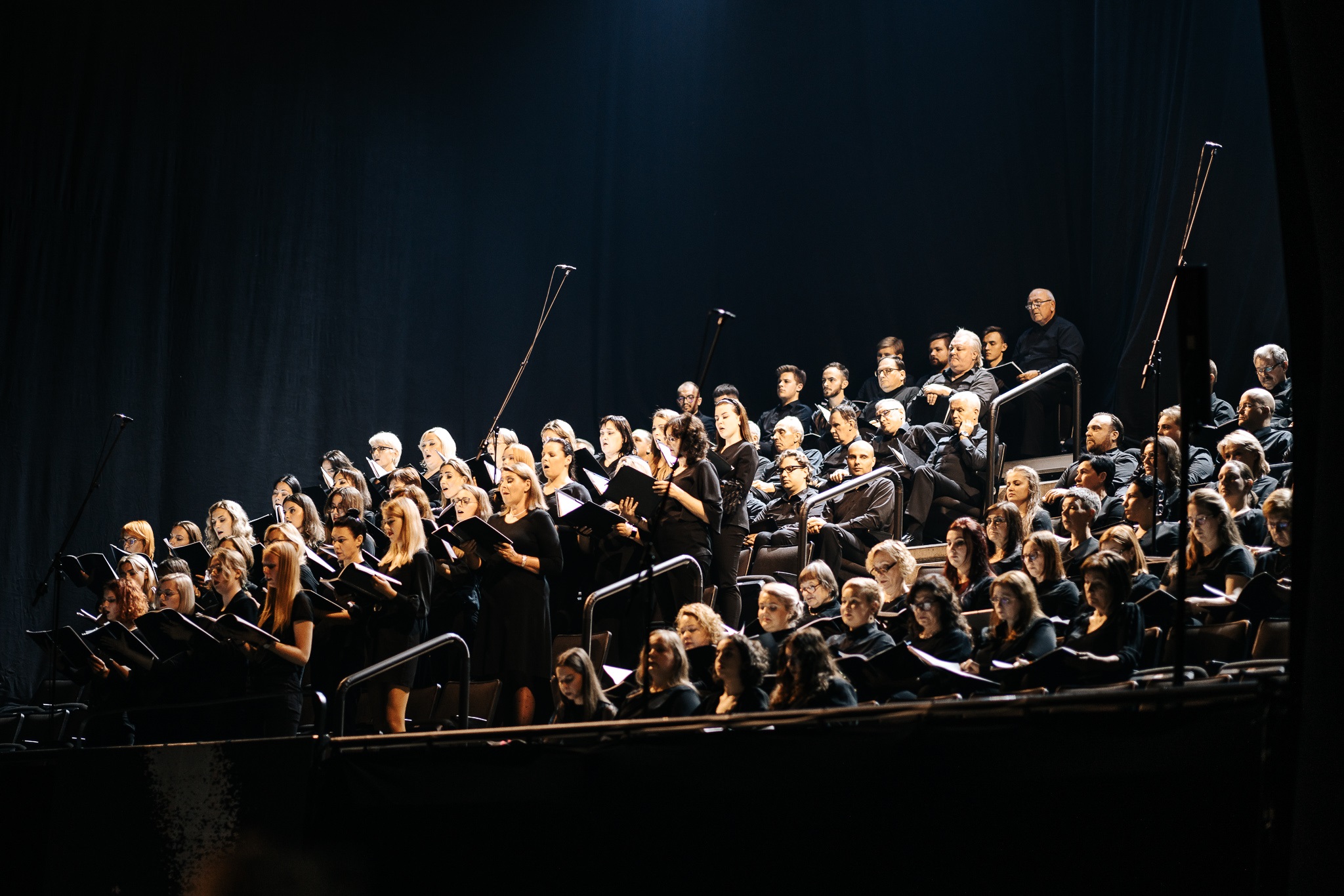
Final Meeting of the “Modernism for the Future” Programme: Multiple Modernities From Kaunas to Manchuria

“Architecture is always a dream and a function, expression of utopia and instrument of comfort”, Vaidas Petrulis, one of the organisers of the final conference of the European Capital of Culture’s programme “Modernism for the Future”, opened the event with a quote from the French philosopher Roland Barthes. The event attended by a wide range of thinkers and practitioners to Kaunas offered unexpected ways of talking about the inevitably shared past, present and future of our planet; the history in which architecture plays the role of both antagonist and protagonist.
“Multiple modernisms”. Uta Pottgiesser, professor at Delft University in the Netherlands and head of DOCOMOMO, the international organisation that documents and conserves the heritage of modernism, was the first to use this term to describe an era that has touched the entire planet. The two words became the leitmotif of the day.
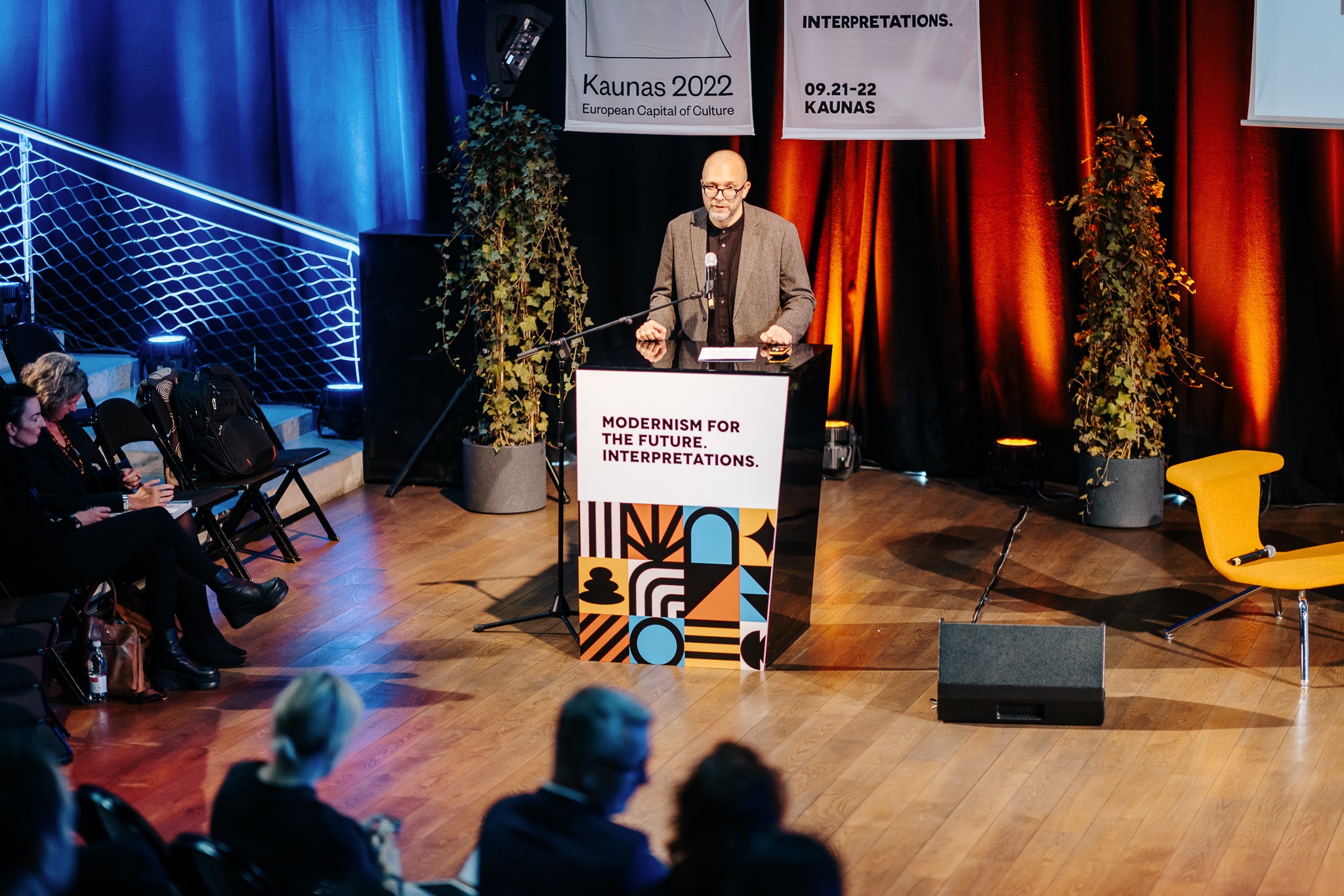
Inspiration is not Only in Buildings
The subtitle of the second edition of the conference was “Interpretations”. Aideen Barry, an Irish artist working with communities worldwide on socially engaged art, opened the programme with a presentation of her stop-motion animation film, “Folds/Pleats”. Its premiere was held on the inaugural night of the conference at the historic Romuva cinema. The two-year-long artistic chain of events was full of coincidences, as well including hours-long workshops on Zoom during the quarantine, iconic Kaunas modernist buildings becoming dancers’ costumes and edible cakes, as well as hundreds of Kaunas residents of all ages who joined the process. The film, inspired by early cinema and animation created behind the Iron Curtain, has already been presented around the world. It is not a documentary but a freely interpreted history of the modern city and the people who created it, enticing even the viewer who has never heard of Kaunas before.
At 3 am New York time, artist, architect and conservationist Jorge Otero-Pailos joined the event in Kaunas. His online talk on art as a way of care and dust and other traces of time in architecture as inseparable layers of its layers received an ovation and was quoted in subsequent presentations. After presenting his project “The Ethics of Dust”, in which the cleaning of the surfaces of historic buildings becomes a pretext for contemporary works of art, the artist talked about his most famous initiative, which took place in the Norwegian capital. Unlike the modernist masterpiece itself, the fence of the US Embassy in Oslo was not included in the list of protected buildings. Otero-Pailos decided to turn this element, which surrounded the embassy after 11 September 2001, into an independent series of sculptures.
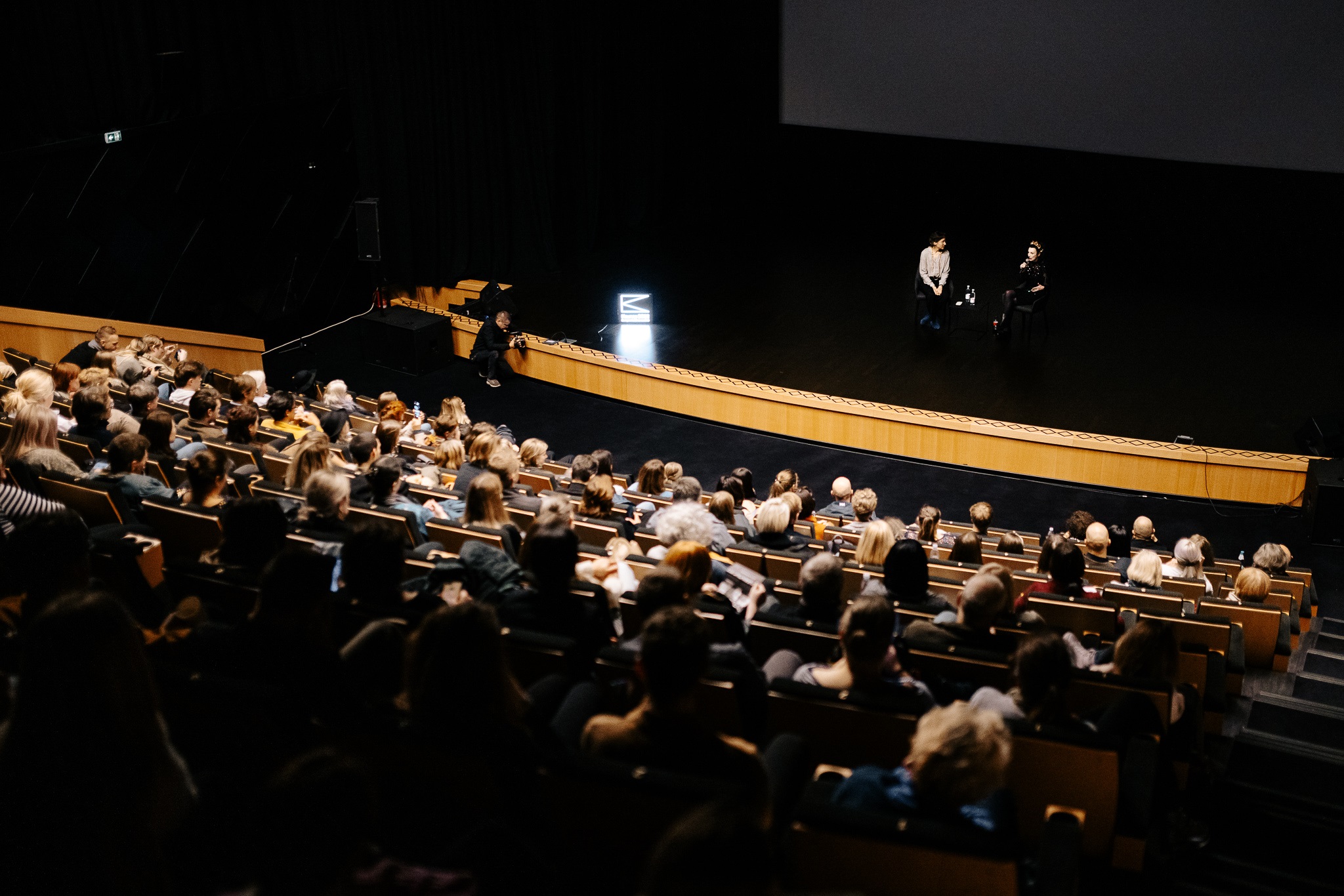
G. Jovaišos nuotr.Subjectivity as a Component of Objectivity
In the afternoon, the conference participants were attracted by a discussion on the concept of subjectivity as an assessment of art, architecture and heritage viewed from different perspectives. Researcher Grzegorz Piątek spoke about the unconditional love of Poles for the interwar period, and thus for the country created at that time, as a breakthrough, a growth, and even a golden age. Contrasting this is the sceptical attitude towards the residential areas, cultural and commercial buildings and other objects that popped up after the Second World War. Paradoxically, the extremely popular Neon Museum in Warsaw only displays the signs of historic buildings, many of which no longer exist today. Lolita Jablonskienė, head of the National Gallery of Art in Vilnius, emphasised the importance of context (or the contexts that have been considered separate until now) in evaluating architecture and art produced in the past decades and the duality of the two. Swiss photographer Nicolas Grospierre, who has been photographing modernist architecture for two decades, spoke of his subjective concept of constructing a narrative through related forms, excluding other factors.
“Mythologizing comes in cycles. It’s interesting to break this cycle, which is possible after defining a set of criteria that could facilitate that break. It is important to look into history objectively as early as possible,” noted Piątekas. “People prefer Stalinist-era because they are better decorated, subjective emotional ties and associative values play an important role here,” added architectural historian Marija Drėmaitė, moderator of the panel.
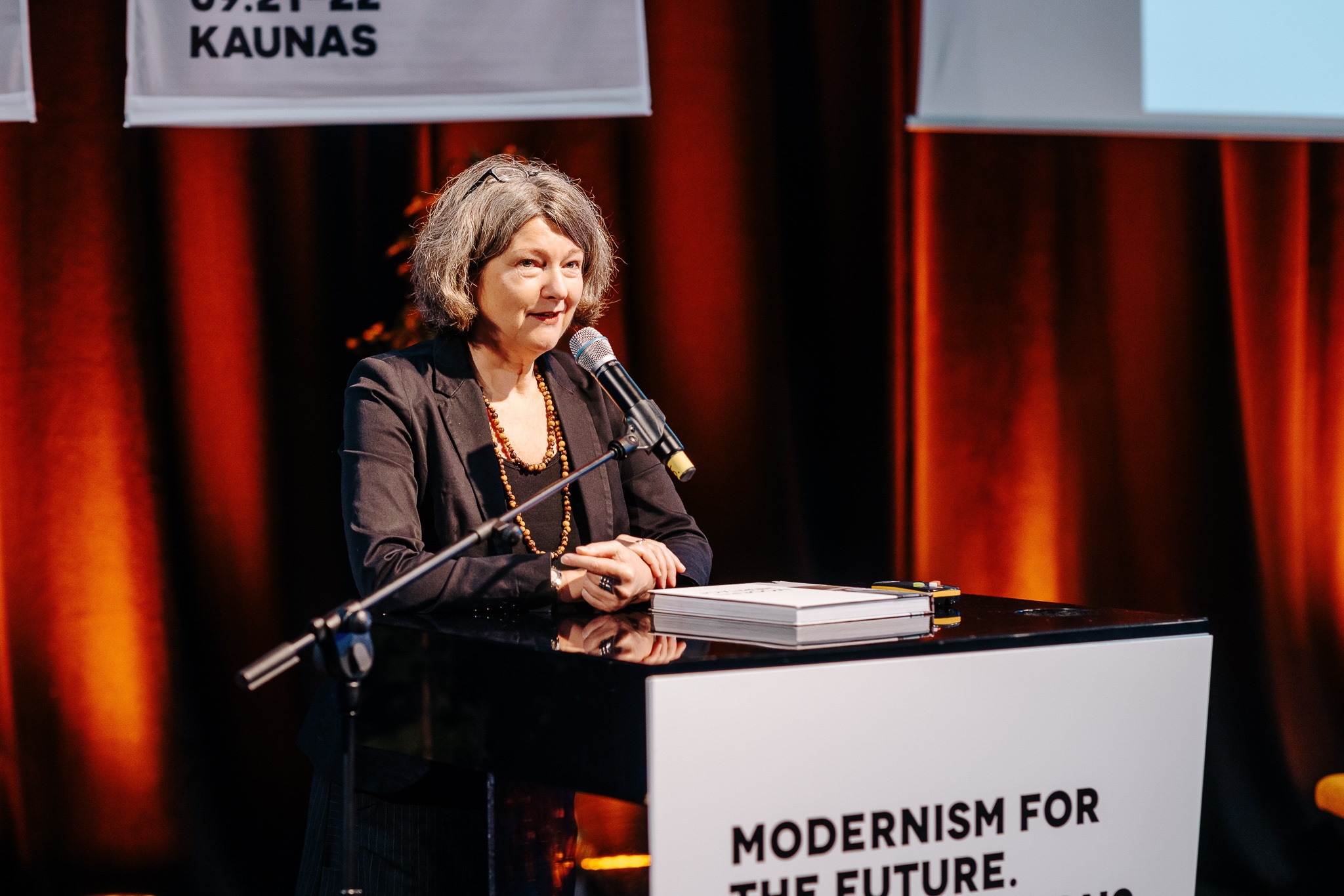
Modernizmo konferencija, G. Jovaišos nuotr.Modernism - a Cause and/or a Product of the Anthropocene?
The heritage of the recent past is paradoxical - it belongs to modernity, but the consequences of modernity pose an existential threat to it. A discussion moderated by Edward Denison of the Bartlett School of Architecture at the University College London (UCL) in the UK invited people to think about modernism as the cause of the current geological epoch. Denison’s colleague Guang Yu Ren presented the Manchuria region in present-day China, a land little known to many present-day Europeans, where modernist cities were planned as early as the late 19th century, as industrial mines were established. In the region, what we consider heritage may, in fact, belong to several nations, including the Russians and Japanese.
The open question of whether the colonists gave anything at all to the African continent, from which they drew their wealth and empires for many decades, and in return imported their way of life, customs and architecture was raised by Maxwell Mutanda of UCL. Linara Dovydaitytė, a scholar at Vytautas Magnus University, presented the object of her research - the nuclear heritage, which is inseparable from the colonial era, as well as the nuclear aesthetics and the interpretation of the industrial heritage in art.
Alessandro Petti online from Sweden presented Decolonising Architecture Art Research, a project he runs with Sandi Hilal. One of their missions is to inscribe the Dheisheh refugee camp in Bethlehem, Palestine, on the UNESCO World Heritage List. Israelis settled in the site of dozens of former villages after 1948. According to Petti, such camps, which are not made of tents but concrete structures, are doomed to permanent temporariness and are built to be forgotten as soon as possible.
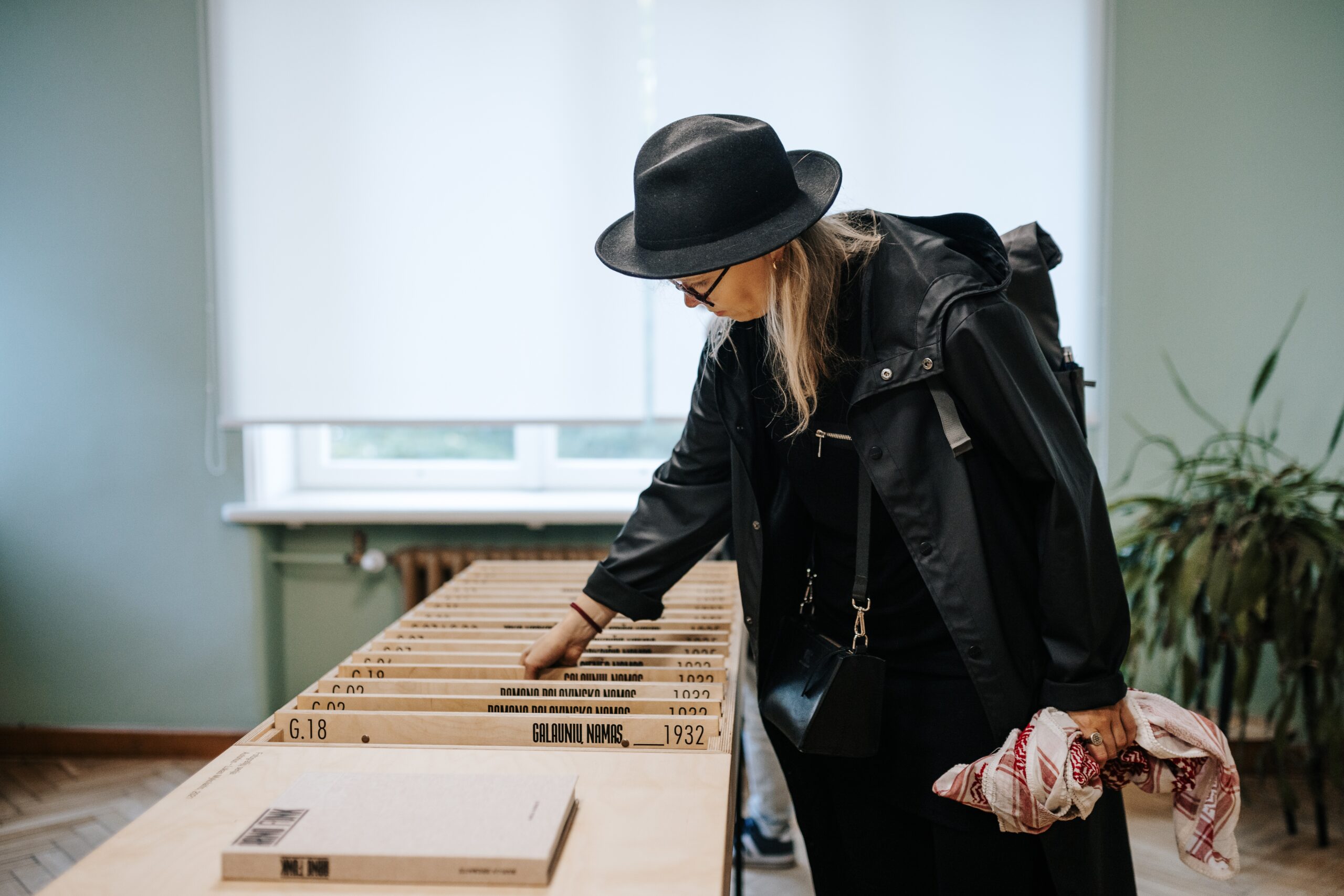
A Dispute about Value - Public or Professional?
“We have spent many years discussing what to do with Soviet apartment blocks. Well, the Russian missiles just destroyed them, so that’s one less question,” Yevgeniya Gubkina, a Ukrainian architectural historian and self-proclaimed architectural activist who hails from Kharkiv, which was severely damaged by the war earlier this year, wryly and very aptly observed. Equally ironic was the British journalist and writer Owen Hatherley, who observed that nobody likes Western leftists coming to Eastern Europe and explaining what Soviet modernism is. Hatherley put forward an equally intriguing theory about the actual Westernness of modern Russian imperialism, reminiscent of colonial powers and their methods.
The debate moderated by Maxime Forest again stressed the geographical and political diversity of modernisms and the absence of a unified public opinion. “Often the debate about what to do with Soviet architecture is only raised by professionals - people are not bothered by it, they are affected by the emotional connection,” mentioned Gubkina. She also reminded us that architecture is just a tool - we do not judge a knife for murder. The thought of architecture and art critic Aaron Betsky, who said: “Buildings don’t talk, so we have to speak for them”, is also relevant here.
Discussions and presentations of the conference “Modernism for the Future. Interpretations” took place on 22 September in the Žalgirio Arena amphitheatre. The recordings and a series of podcasts will be published online. The main conference programme was introduced and followed by additional meetings, exhibitions and other events in various locations in the historic centre of Kaunas. The event attracted architecture and heritage professionals and enthusiasts from a handful of countries. “Modernism for the Future. Interpretations” was the final highlight of the Kaunas 2022 programme dedicated to the actualisation of heritage and curated by Viltė Migonytė-Petrulienė. However, as many conference participants expressed, the international meeting was only an introduction to future joint projects and discussions on multiple modernities.
For the complete Kaunas 2022 programme, please visit www.kaunas2022.eu or the mobile app.
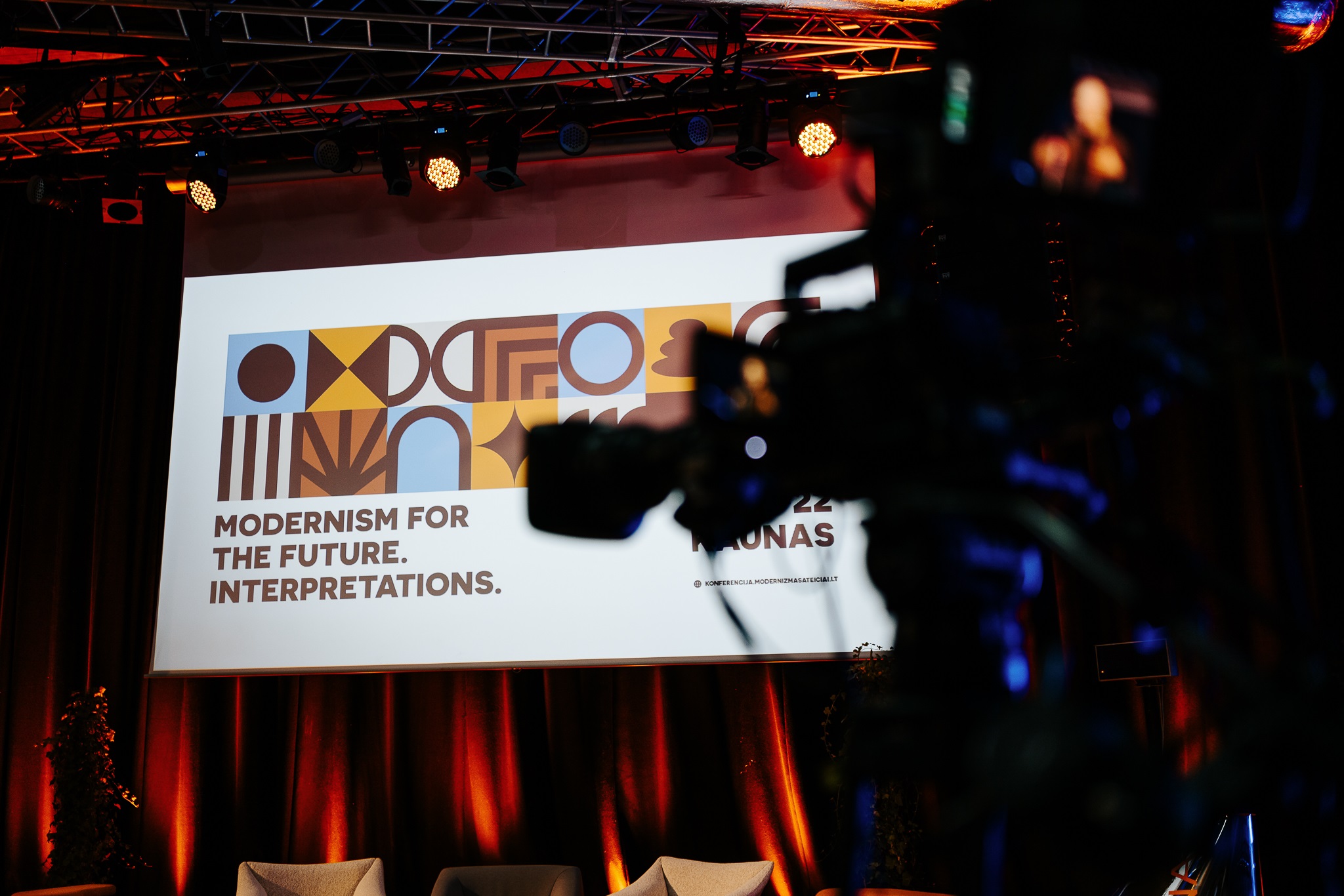
Tebby Ramasike, who will perform at the Ninth Fort: “In ugliness there is beauty and in darkness there is light”
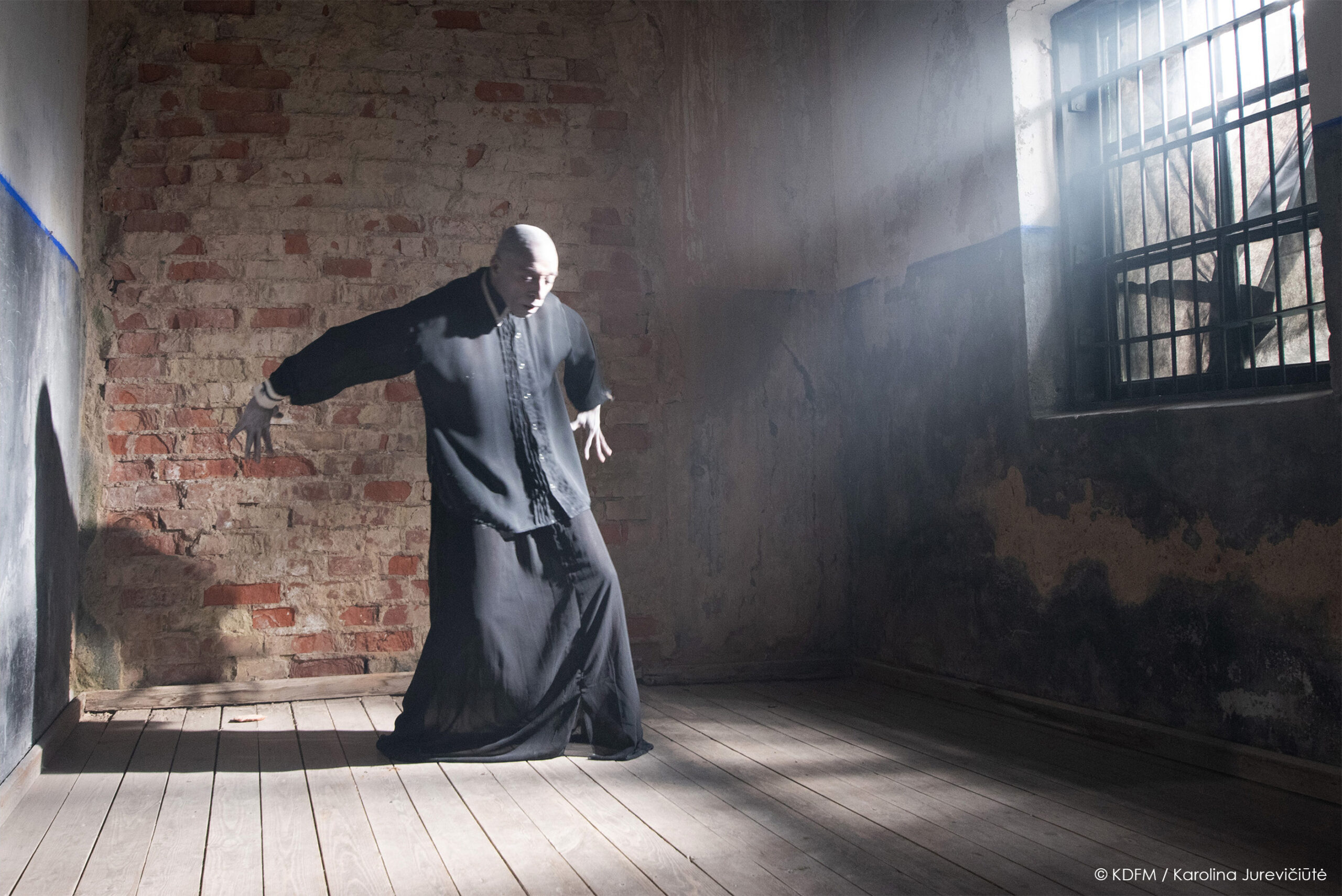
South African-born dancer and choreographer Tebby W. T. Ramasike has three decades of experience working on a professional stage. Ramasike doesn’t avoid drawing resources from painful historical events, which he combines with his personal experience and expresses in body language. On 24th of September, 2022, he will perform the performance “The Wreckage Of My Flesh” at Kaunas Ninth Fort Museum. In order to learn more about the performance, the dance in the context of traumatic experience, and the importance of remembering historical events, we invite you to read the interview with Tebby Ramasike.
The performance “The Wreckage Of My Flesh” is a part of the international project “ECCE HOMO: Those Who Stayed”, which is organised by Kaunas Ninth Fort Museum and Kaunas European Capital of Culture 2022.
On 24th of September, you will perform "The Wreckage Of My Flesh" at the Ninth Fort. First of all, I would like to ask you what impression and emotions did you have after visiting the Ninth Fort for the first time in 2021, during the preparation for the project?
That was quite an overwhelming experience. I saw pictures before that Bruce [visual artist Bruce Clarke] had shared with me, so I expected a different place. But when we were there, I just felt – Wow! At first, I didn’t know how to express it. I was so overwhelmed… I felt there was so much pain… There was a voice inside of me that was screaming out of pain, there was a voice screaming out of hope. It actually exceeded my expectations. I felt I was standing on a sacred ground. There was this intense and unique energy. It was not the structure of this place that actually caught my attention, but the surroundings, the environment, the trees around there... The trees became a representation of this symbolic nation of people that lost their lives there. There was the spirit that was living.
What was very interesting for me, is that I was not walking into a museum. I was not walking into an exhibition space. I was drawn into the living soul of humanity. Humanity that has been lost. I just connected with something there and creative ideas just flew immediately into my head. And I said, “I think I came to the right place. This is where I belong, this is what I wanna do.” My soul, my heart was pumping, and my spirit just wanted to live, wanted to grab, wanted to fly. It was so enriching for me.
Could you please shortly present your performance, which you will perform at the Ninth Fort?
I will go back to how the project started. In 2018, I was performing in a Butoh and Acousmatic Music festival in Paris. I happened to perform to Jacob’s composition. There was another Butoh dancer Denis, who was the original collaborator with me, but he unfortunately became very ill. He was performing to René’s composition. I was challenged by Jacob’s composition, which was short, complex and something that I’ve never dreamt of performing to. It was difficult, but during the performance everything just came together. I liked Denis’ performance and the composition by René. Then I said to the three of them that my idea is the four of us to be in the same space, we as dancers creating the dance, and you as composers composing at the same time. I proposed to them to collaborate, it was a small project for Amsterdam.
Then I started to develop ideas about the Holocaust and Apartheid. At the same time, I was writing a poem, and the title was “The Wreckage Of My Flesh.” This poem was inspired by seeing images of the Holocaust. I just put everything – the Holocaust images and the Apartheid images – together. At that time, I got very ill. I was hospitalised, I had 3 surgeries. I was in a hospital and all these images were coming back to me, and I felt like I was a part of that. My body was just disintegrating. I felt that my flesh was becoming wrecked, so I just said, “The Wreckage Of My Flesh.”
Next thing was – what do I do with this? What was the main focus in this project? Is it about the Holocaust? Is it about Apartheid? Or is it about me hospitalised and dying in my hospital bed? Being a Butoh practitioner, I’m always working a lot with the body. And I say – it was about the body.
When I saw my parents in South Africa after a long time, their bodies were deformed, changed. Then I started to think about the people in the extermination camp. When their bodies were put in these ovens, what happened? I started to think about people who were banned in South Africa. My very best friend from growing up – I saw him being tortured and burned, I saw his body… So, this was about the disintegrating body that is changing, that is being deformed.
Having experienced being in that hospital and fighting, affected me psychologically. It was a struggle. At the same time, I had to perform a piece. It was about dealing with the resistance to oppression, the resistance to the struggle. It was also about hope, about the fight against something, about resilience.
Thinking about these bodies as they were in the ovens or burning, I thought of the voice of their silent screams. I had this image of the body screaming. The body becoming the voice and screaming out. That voice became my inner self territory. For me, dance became my saviour, my healing notion. These voices in my head became like – “keep on dancing, keep on dancing and never stop to dance.” I had to dance to survive. I keep saying until today, if I didn’t dance, I probably would have kissed this life goodbye a long time ago. Dance has helped me to keep on going. Also, through dance, it helped me to resist. And never just stop and have that hope.
People ask if this piece itself is about the Holocaust. It’s not. And it’s not about Apartheid. Even though I’m drawing resources from this human history of horrific events that happened in the past (unfortunately, they are still happening now), it’s also about the social crisis that we, as human beings, are finding ourselves in. It’s a silent way of saying something with the body, bringing out that pain, bringing out that suffering, addressing something that many would not actually address, through dance being the voice of the people who have been silenced.
I decided in this piece to use the genre of Butoh, which carries the body’s resistance to gravity. For me, it’s a strong way of taking the body out of the comfort zone into an unknown territory. At the same time, it’s something about an inner freedom, which is experienced through Butoh or through the ritualistic dancing and even through electronic music, which also has its own way of resistance.
You have mentioned the Butoh genre. What thoughts and feelings do you have during the performance of Butoh dance? How does Butoh stand out from other genres?
It’s a transcendence into another world. I work a lot with spirituality, and I try to connect this with ritual dance and with my Butoh practice. For me, it’s always like a spiritual journey. I always have a feeling that I’m transcending from one life to the other. I’m transcending from the existence into the non-existence.
Butoh gives me this feeling of going into a deep subconscious world. I’m on a plain of that higher level of spirituality or maybe existence. But at the same time, I always have questions at the back of my head. Where are you going with this? Every question that I have raises a different feeling, a different thought. So, it’s never the same.
It’s still a growing thing inside of me. I cannot say I’m an excellent Butoh dancer or I’m a bad Butoh dancer. I’m a Butoh practitioner, I just practise. I developed my own concept of Afro-Butoh. I could say Butoh has actually enriched my dance career. I’m looking at dance and myself as a dancer from a different perspective, understanding my body, my thoughts.
How does Butoh genre stand out from the other genres? Well, the first thing, people are afraid of it. [laughing] When we talk about Butoh, they say, “Oh, is that one about ugly bodies and death?” It’s the way people respond to Butoh. People don’t want to deal with something that has to do with pain, suffering and death. Especially with death and darkness. I always say to people, in that ugliness there’s beauty, in that darkness there’s light.
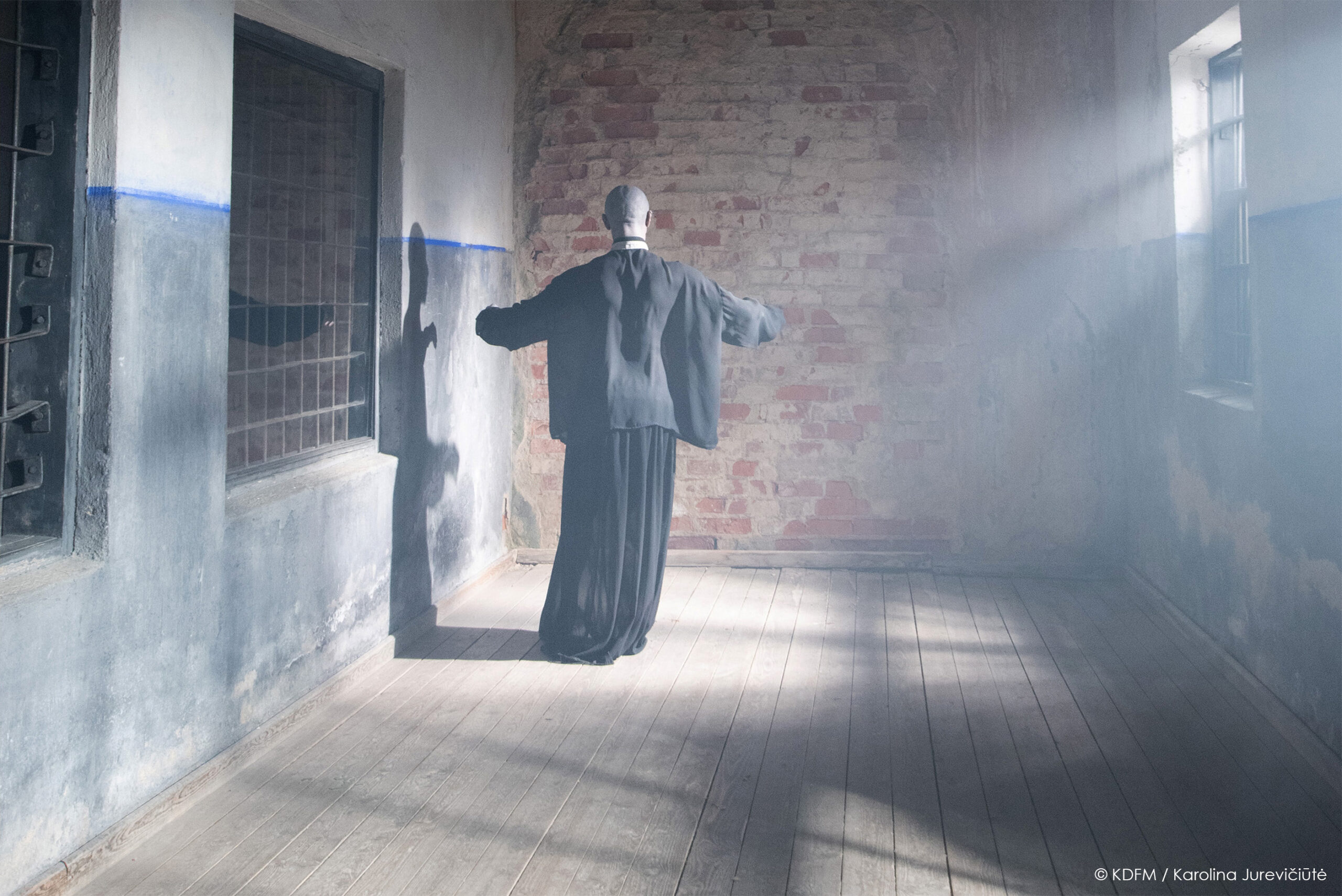
Let us pause for a moment to consider beauty, light, and dance – what, in your opinion, is the dance in the context of tragedy and traumatic experiences? A tool to empathize with other people's experiences? A way of healing?...
It’s not an easy question to answer, but I will try. If I look at it from the general point of view, it’s not that very easy, but for myself personally, it’s actually easy to work with dance and express traumatic or tragic experiences, because I dealt a lot with that. Even though people always say that I’m very happy, my world is actually tragic or traumatic.
I take a lot of people’s tragic and traumatic experiences into me, I listen to their stories. Sometimes I do make their stories my story. I basically put myself into their situation. When I start to do that, then sometimes I can create something out of that. Through dance it’s easier for me to express this. I also find that through dance it helps to heal myself. I could be caring so much and everything could be happening to me, but once I start to put this into dance, I feel this healing notion. As people have said to me, I’m bringing light into the darkness of their lives and I’m healing them. That’s why I’m always looking at my work from that spiritual healing notion.
One should not say, “Oh, my piece is gonna be about traumatic experiences.” I think if I start to say that, my dancers will rush out of the door. And I think if I tell the public that, they are not gonna come and see the performance. [laughing] It’s something that you keep into the work. A traumatic experience is not something that you put on the table just like that. It’s inside of somebody. Everybody deals with trauma in a different way. Every traumatic experience is on a different level as well.
In some of my dances, actually, I do express a lot of my traumatic experiences, which scares me at times. Then the problem becomes, what is the audience feeling when I go through a traumatic stage? Dealing with that through dance also helps me to release something, it heals me, it cleanses me. It’s like a ritual for me. It becomes like a ceremonial journey. Dance for me, and I think for many people, is healing, therapeutic. It’s a shame that many people don’t see it that way. They only see it as a hobby, as just dancing. They don’t realise that when you dance, there is something inside of a person that is happening. Dance brings joy, life, light, dance heals many people.
Let us go back to your performance at the Ninth Fort. An international team is contributing to it. Could you please introduce your team members?
I’m just gonna make a short introduction about them. I will start with René. René Baptist Huysmans is from Amsterdam. He is a composer and sound artist. He specialises in collages of electronic sounds and field recordings.
Jacob Elkin is from New York in the USA. He is a multi-instrumentalist. He is teaching at the United Nations International School and he is a specialist in electronic microtonal music. Don’t ask me what that is… This is why his music is very complex. All these terms… It’s not the same electronic music that we know. [laughing]
Denis Sanglard was the original member of the team, but because of health problems, he couldn’t continue with the project. He’s a Butoh dancer and an actor. He’s still very much involved in the piece, but more like on the sideline, as a coach or just giving feedback.
And then we have Ellen Knops, who is from Amsterdam. She is our lighting designer, and she loves to improvise and play around with the location. She’s the person who goes to a location and sees what the energy of the location is and what it gives her to do with the lights. She worked on many of my productions. She’s a fantastic person to work with.
Then we have Anne Oomen. She’s from Noord-Brabant. She’s a Dutch fashion textile designer. She specialises in silk. She works a lot with dancers, with movement. She was also a dancer herself as well. She translates a fascination for dance into the smooth movement of silk. Her work is very interesting to see on the body of the dancer. That’s also why I chose her. For many years we wanted to work together, this is finally the first project. She gets her inspiration from abstract painters and modern artists.
And then we have Elizabeth Damour. She’s from Paris. She’s a French Butoh performer, psychotherapist. She enjoys sharing, transmitting and connecting with the continuous development process. She works with young people as well. Elizabeth actually first joined the project as my assistant, not as the dancer. Then eventually, when Denis couldn’t continue, the only solution was Elizabeth.
Now we have Zo Fan. She’s an external artist in the project. She’s actually Bruce’s assistant. She was suggested by Bruce to be our videographer. She’s from Singapore, but she lives in Paris. She’s a film director, photographer and videographer.
Many people contributed to the project as well. It’s not only us; there are other people who are involved from the outside.
Your performance will be closely related to the exhibition by the artist Bruce Clarke exhibited at Kaunas Ninth Fort Museum – the dance will be performed in its background. What is the relation between the exhibition and the performance? How do they complement each other?
It’s interesting, because I didn’t know Bruce in the beginning. Frank [Frank Schroeder, the director of the National Museum of Resistance and Human Rights] knew my work and he knew Bruce, so he had invited Bruce to do the exhibition [in Luxembourg]. But I think when he saw Bruce’s work, then he saw me. The first time I saw Bruce’s sculptures, it was like: “Where did you find me?” [laughing] I also saw myself. I think it became like an instant connection.
What actually attracted me to Bruce was his background, which was like born in the UK, having a Jewish family, and [relations] with Lithuania, and the family in the Holocaust, and living in South Africa, being part of the Apartheid struggle. Then I saw his works and I was totally seduced. I wanted to know more about his works and I started to have ideas. What also grabbed me was his work in Rwanda with the genocide. I was just thinking, “These all are traumatic. These tragic situations that brought up a lot of trauma in people’s lives.” And I liked this because this was Tebby. [laughing] So, I thought, “I’m not going to have fear of actually trying to relate to his work. I’m just going to be an open book.”
In the past, I used to have artists that I would dance what they have painted or their sculptures. But now it’s different. We try to tell our stories in a different way and yet complement each other. What we also decided to devise, is this inter-dialogue between me and these sculptures, how I use them, because they have to be another performer.
This is something very interesting about the Ninth Fort Museum, it’s something that actually came to my mind: if we have these sculptures of Bruce and I’m relating to this installation and leaving the space, what happens? My idea is that you build up this relationship with these sculptures and you leave, and that relationship should still stay there even if my physical body is not there. It should stay within those sculptures because they’ve been part of the performance. It’s something that is possible because I always have this thing that an energy, that has been established, even when you leave the space should stay. I mean, when I went to the Ninth Fort Museum, even when I left, I could still breathe that energy.
What happens to me? This is another thing, the relationship between the installation and the dance. What happens to me as I dance with those sculptures, as I connect to those sculptures? What happens to me afterwards when I leave as a dancer? Do you just leave and then forget about them? No. I could choose to do that, but I don’t want to do that, because they are alive. It’s a major piece of artwork, so very important. I really have found something powerful in Bruce’s work that can actually enrich the dance.

Finally, the last question – why, in your opinion, it is important and necessary for today's person to remember traumatic experiences such as the Holocaust?
What happened in the past and what happened during the Holocaust is building our future. It’s part of our history. Whether you are Jewish, whether you are African, whether you are European... It’s part of us, it’s not only part of the Jewish community. It’s part of the world we live in. And, unfortunately, what happened during the Holocaust is actually coming back – it’s happening now. Even on a different scale, even in a different way… But I see it growing. I see it coming back in France: the nationalists are coming back. Then there’s Putin. He wants to be the master race, like Russia has to be the master race again as Hitler wanted Nazi Germany to be the master race.
Of course, people don’t want to deal with trauma, they want to distance themselves from the Holocaust. It was not a tragic story, it was really traumatic, something that kills the spirit of humanity. To be able to keep that as a memory is to believe, to understand it and to put it in that place of importance. It’s not just an event that happened and you leave it behind. It’s an important event in our historical lives as human beings. And it's really necessary for the generation now, our generation in the past, the generation in the future, to understand it, to remember it, to know that it happened. Because it will happen. We have already been saying that history repeats itself.
I just hope that the world will open up, believe, and finally say, “We understand,” and stop being in denial. The Holocaust did happen, traumatic experiences that people have gone through have happened and we cannot deny that. It’s a shame, because that denial is actually bringing up a lot of violence, which is scary.
The interview was prepared by Henrika Kryževičienė
The performance “The Wreckage Of My Flesh” by Tebby W. T. Ramasike will be performed at Kaunas Ninth Fort Museum on 24th of September, 2022. More information about the event can be found at Kaunas Ninth Fort Museum website: www.9fortomuziejus.lt/?lang=en
The project is a part of Kaunas European Capital of Culture 2022 programme.
The project is implemented by Kaunas Ninth Fort Museum and Kaunas 2022
Information partners: LRT, “Kauno diena”, KB “Katos grupė” | ACM
Partners: National Museum of Resistance and Human Rights (Luxembourg), Esch 2022
Programme for June events: contemporary festivals and unique experiences
June is going to be the busiest month of the European Capital of Culture year. This month will start and end with festivals that will bring optimism and action to the hearts of the residents of the city and its guests. The action in the rivers will not end after the “Confluence” weekend: the cultural ship “Nemuno 7” will delight with the exhibitions, and discussions of the National Expedition will take place near the river. Perhaps rivers have become one of the routes on the path to the art objects in the Kaunas district? Culture will awaken the courtyards of the city and the contemporary elderships. The music will play on the Summer Stage, and the choirs and jazz will be heard around. There will be no bad weather for culture - the summer of culture begins!
Music Programme of “Optimismo”
OPTIMISMO is a festival that looks back at the industrial past and is full of modern experimental and electronic music. Just as the creators of modernist architecture, defined by political, social, economic and cultural optimism, the creators of contemporary music, presented by OPTIMISMO, dare to experiment with technology and stand out with their virtuosity, non-traditional structure of their works and new creative methods.
When: June 3-5
Where: Industrial and cultural modernist buildings in Kaunas
Organizers: Creative teams of “Digital Tsunami” and “Ghia”.
Robert Magro’s “Visions”
The theatre play “Visions” is a dedication of the Italian contemporary circus director Roberto Magro to Vytautas Mačernis and M.K. Čiurlionis. The play analyzes human’s desire to create and be surrounded by art. The director decided to interpret Vytautas Mačernis’ “Visions” and, with the help of contemporary circus, dance, theatre and music, to reveal the metaphors and symbols hidden in the poet’s work by supplementing them with local stories.
When: May 31 – June 4
Where: The forest of Paštuva
Director: Roberto Magro. Scenography: Paolo Primon, Davide Visintini. Creative team: Džiugas Kunsmanas, Agnietė Lisičkinaitė, Eugenijus Slavinskas, Motiejus Bazaras, Liam Carmody, Pauline Camille Talon.
Tickets are available: here
Culture to the courtyards: Eiguliai, Dainava, Šančiai
“Culture to the courtyards” is back! So, take your seats in the VIP lounges on your balconies or make yourselves comfortable in your own courtyards. In June, professionals of various arts - theatre, dance, contemporary circus, and music - will perform in the courtyards of the apartment buildings of Eiguliai, Dainava and Šančiai. Courtyards filled with culture will delight active courtyard communities that collaborate and join “Fluxus Labas” initiatives.
The schedule of the programme of culture in the Courtyards for June:
June 9–11 – Eiguliai. June 14–16 – Dainava. June 20–22 – Šančiai.
Organizers: “Kaunas 2022”
Admission to the event is free
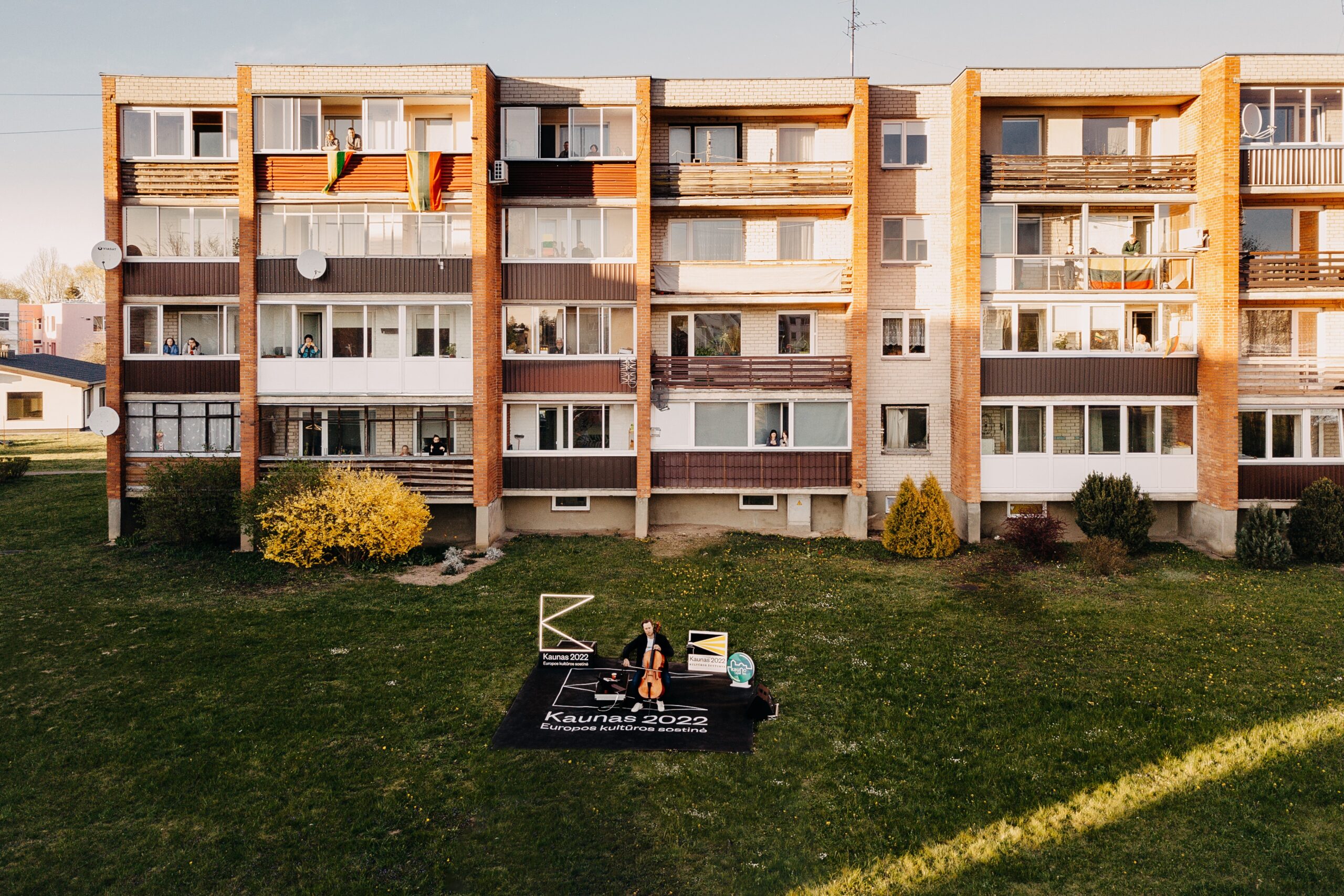
Festivals in neighbourhoods
Residents of neighbourhoods of Kaunas, in cooperation with art creators and using local stories, each created a festival for 2022. On June 11 in Eiguliai, there will be a musical route “Sounding Walls”, where participants will be greeted by wall drawings and music that reflect the community’s identity. On June 18, the action will continue in Dainava. As mid-summer approaches, the community of Dainava neighbourhood will invite you to the event “Midsummer Magic” in Draugystės Park, which will take you from everyday life to the times when people would draw strength from a harmonious relationship with nature and old customs. The programme of Šančiai Festival “Come as You Are” will take over the programme for St. John’s Day. The initiatives developed in Šančiai for four years: performance, opera, stories, and excursions which will merge into a joint two-day festival in Šančiai. The programme also includes a meal in an authentic restaurant “Kastytis”.
Schedule of festivals in the neighbourhoods:
June 11 – Eiguliai. June 18 – Dainava. June 23-24 d. – Šančiai. Dates and times are subject to change. Organizers: “Kaunas 2022” and neighbourhood communities
Admission to the events is free
“Kaunas Cantat – Kaunas Sings” International Choir Music Festival
Kaunas will be flooded with the sounds of choral music - the tenth international choir festival “Kaunas Cantat”, will be held in the city. Well-known bands from Lithuania and abroad will appear at the anniversary event. The German sextet “Singer Pur” will be among the festival guests performing at the event, and two children’s choirs from Ukraine will join the festival. Among the memorable concerts in the churches and at the Kaunas city fountains, the audience will be invited to sing together during the entire festival.
When: June 09-12
Where: Kaunas
Organizers: Public body “Lithuania Cantat” VšĮ
Admission to the events is free, except for the opening concert at the Great Hall of Vytautas Magnus University on June 9 at 20:00.
Tickets to the opening concert here.
“Contemporary Elderships”: Ežerėlis, Kulautuva, Raudondvaris
The alternate reality of Ežerėlis audio guide will introduce you to the imaginary local reality. On June 9, a photography exhibition (curator Vaida Virbickaitė) will open its doors at the newly established community gallery. The Kulautuva community is organizing a theatre music performance that will tell the story of the place on June 11. Finally, on June 17, the Raudondvaris community invites you to dive into an impressive time travelling – a theatre night trip.
Admission to the events of “Contemporary Elderships” is free.
The programme: is here

Opening the Emerald Road
Look for emeralds in Kaunas district. Emeralds are new artistic objects found in unexpected places. 8 objects were turned into emeralds of by the artists: Tadas Černiauskas Tadao (Neveronys), Vytautas Viržbickas (Čekiškė), Donatas Jankauskas Duonis (Piliuona), Kotryna Čalkaitė (Daugėliškiai), Tadas Vosylius (Bubiai), Mindaugas Lukošaitis (Vandžiogala), Kotryna Čalkaitė (Užliedžiai), Donatas Bielkauskas-Donis (Mastaičiai). Visit the opening of the Emerald Road on June 10 in Alšėnai and Neveronys.
When: From June 10.
Where: Kaunas District
Admission is free
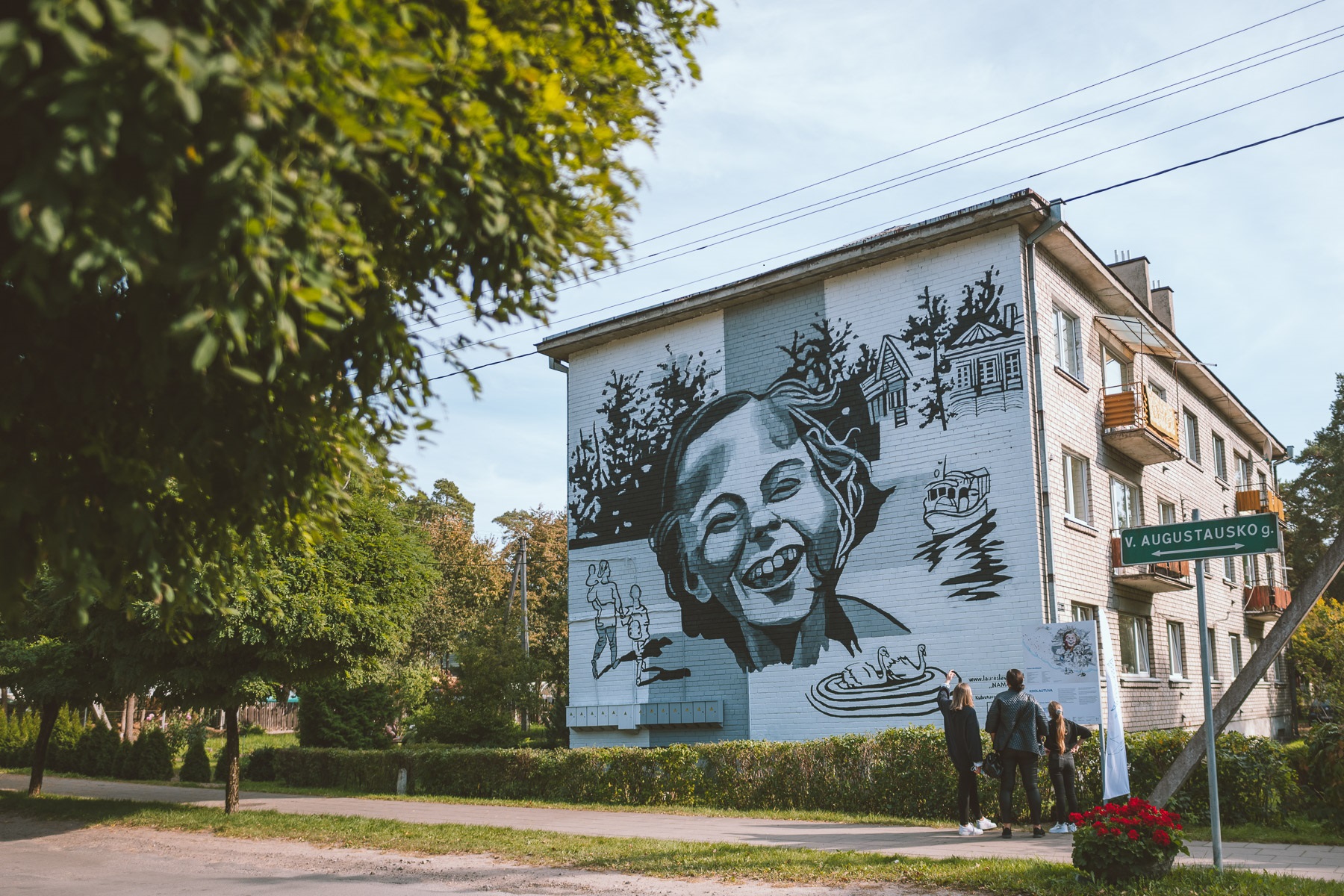
Documentary performance “TAXIS. Attempts to travel distances”
The performance experiment in moving cars tells us about the changing everyday life of taxi drivers. During the performance, nine taxi cars with taxi drivers telling their stories will appear on the streets of Kaunas. Spectators-passengers will have an opportunity to get acquainted with the different daily lives of taxi drivers, the city’s nightlife, the passengers they meet and the stories that took place inside and outside the taxis.
When: June 12, 13, 14, 16, 17, 18, 19, at 19:00
Where: A. Juozapavičiaus pr. 31G
Organizers: Art agency “Artscape” VšĮ
Tickets are available: here
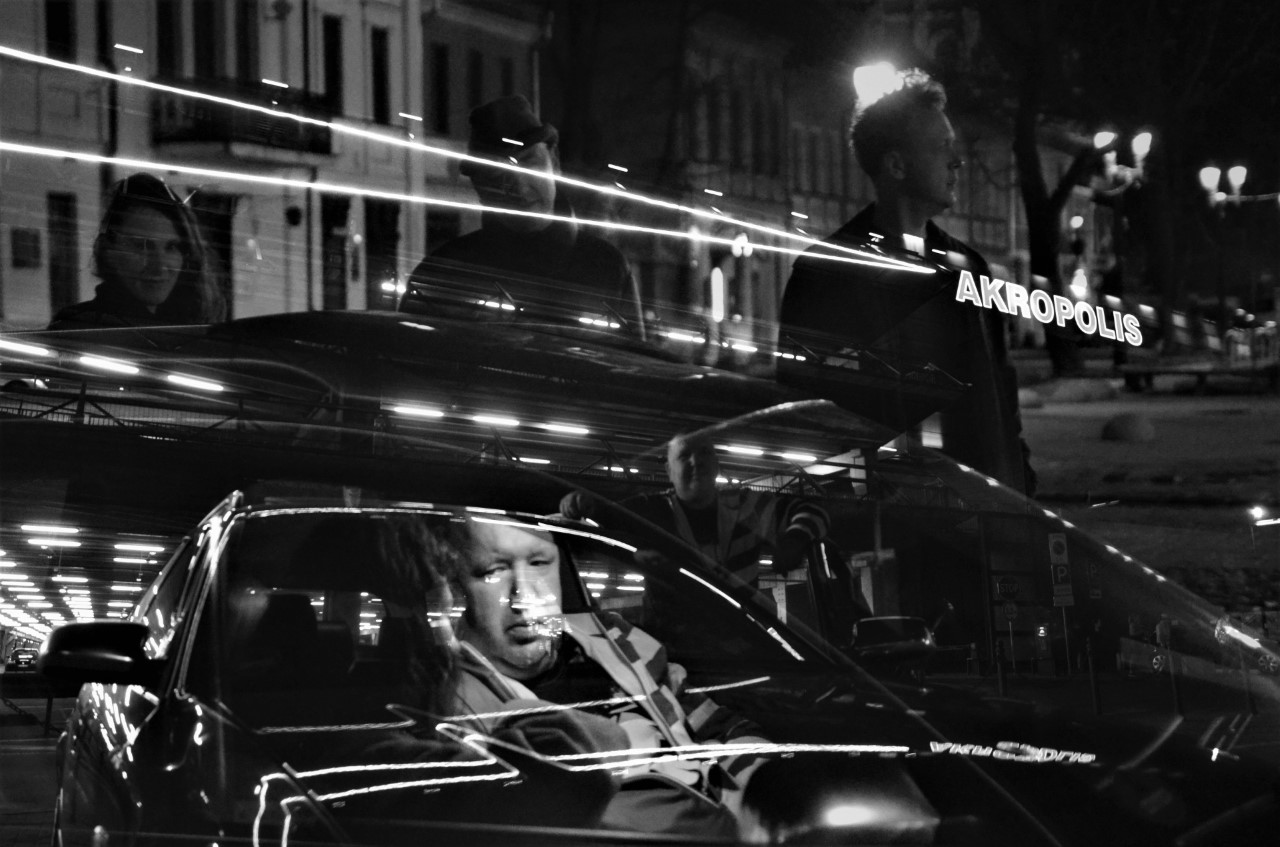
Kaunas 2022 Jazz Stops
The legendary “Kaunas Jazz” presents Kaunas 2022 Jazz Stops - four jazz stops of Lithuanian and European cities in the centre of Kaunas and Vilkija. The most talented jazz creators from Lithuania, Norway, Hungary, Estonia, Luxembourg and Ukraine will perform here. Together with the jazz operators of Dudelange (LU) and Novi Sad (XS), the organizers of the event invite you to a unique project “jazzXchange” at one of the jazz stops. This is a specially created joint work and will be presented to Dudelange and Novi Sad audience later this year.
When: June 18-19
Where: Kaunas (Laisvės Bld. and the Independence Square) and Kaunas District (the amphitheatre of Vilkija berth)
The admission to the event is free
National expedition with Edmundas Jakilaitis
For seven years, the project “National Expedition” travelled by the rivers across Lithuania, Belarus, Latvia, Poland, the old estates of the Grand Duchy of Lithuania and Central Europe. In the middle of June, the expedition will moor in Kaunas for five discussions about the city on the most interesting issues. The city’s residents and guests will be invited to participate in the discussions together with the most famous Lithuanian historians, academics, cultural and art experts. The panels are moderated by Edmundas Jakilaitis / Robertas Petrauskas.
When: June 17, 18, 19
Where: Amphitheatre of Kaunas Castle
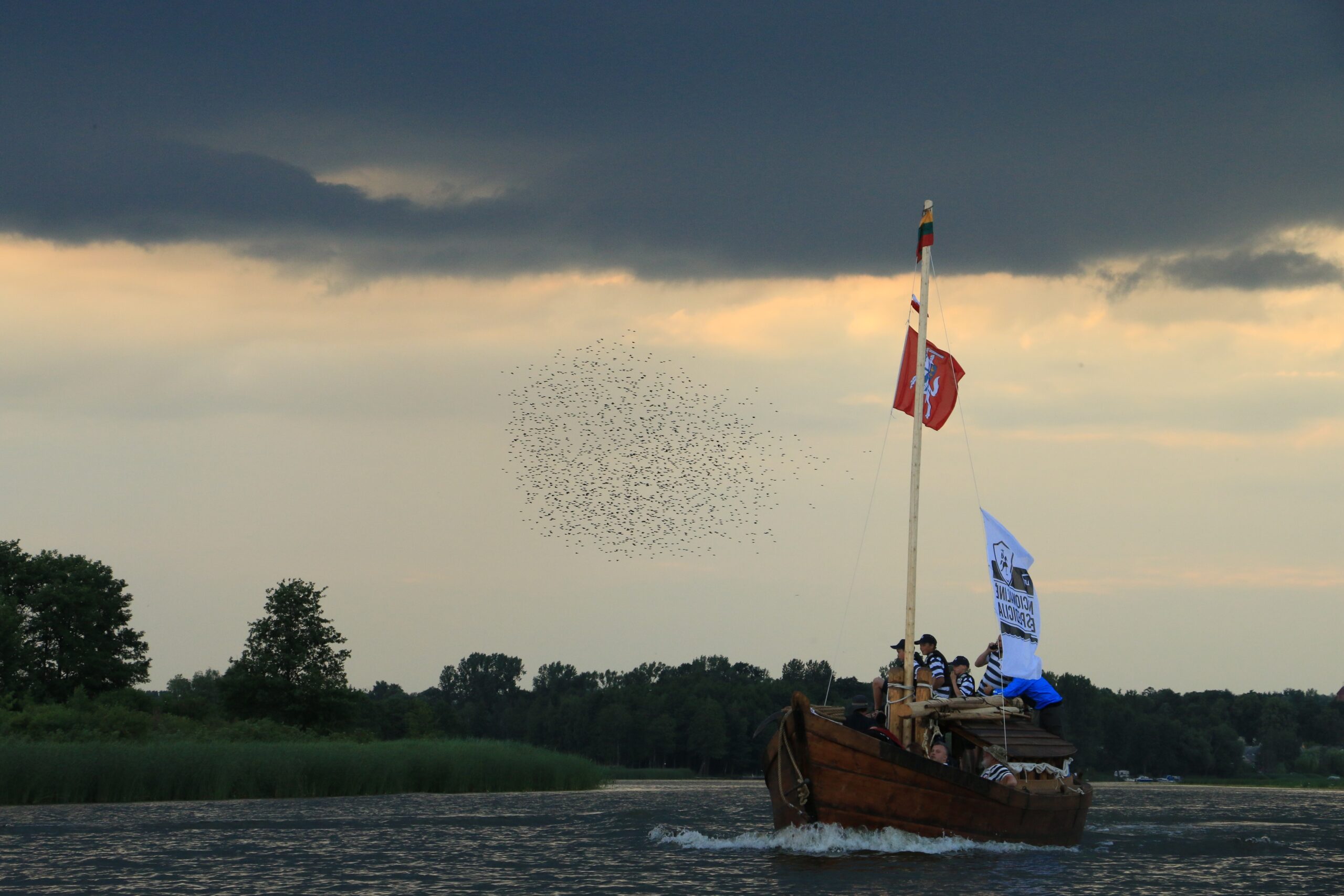
Contemporary City Festival “Audra”
A “Storm” is coming. Over a few days, you will see the whole future of Kaunas! Contemporary art installations and electronic, experimental and acoustic music will move into the city's industrial spaces. The Festival of the Modern City “The Audra” is an event that reflects the lifestyle, culture and values of young people, creating a curious community through experience and bold discussions. You will not be able to remain a passive observer at the festival!
When: June 26 – July 3
Where: Kaunas
Organizers: International Association of Art Creators “Freimas”, “Kaunas 2022”, youth organization public body “Kylantis Kaunas” VšĮ.
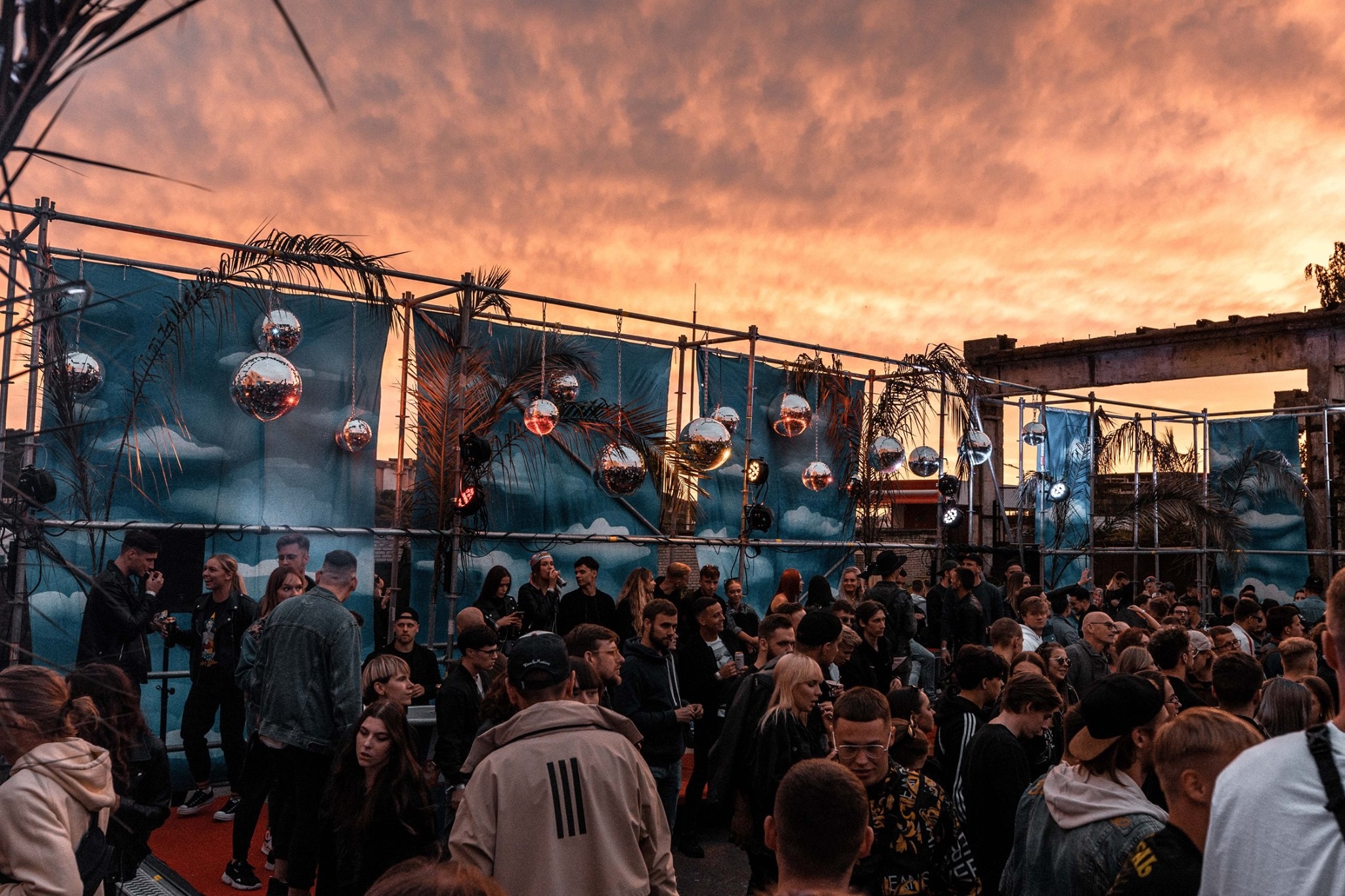
Exhibition “Memory / Future” by an artist group “Konsortium” (Germany)
Kaunas has an impressive number of modernist buildings. However, the unique history of the city and the international cultural cooperation that once took place here is still inspiring today. A group of artists-curators, “Konsortium” (DE) has invited over fifty artists worldwide to create a collaborative collective sculpture dedicated to this historical period in Kaunas.
When: May 27 – July 1
Where: Gimnazijos g. 4, Kaunas
The admission to the event is free
“Summer Stage” of Kaunas 2022
Throughout the warm season, the heart of Kaunas Old Town - the Town Hall Square - will beat with the rhythm of culture. The most memorable performances, concerts, tastings and meetings will delight the spectators and the audience at the Summer Stage of “Kaunas 2022”. From May to September, you will be offered carefully prepared artistic programme weekends and hundreds of free events with the best Lithuanian and foreign music performers. In the repertoire in June: Golden Parazyth (LT), Kaunas National Drama Theatre performance “Empty Chair”, Fo Sho (UA), “Girių Dvasios” (LT), “Akli” (LT) and at least ten other performances.
When: from May 9.
Where: Kaunas Town Hall Square
Organizers: “Kaunas 2022” and partners
Admission to the events is free
Summer Stage programme: here
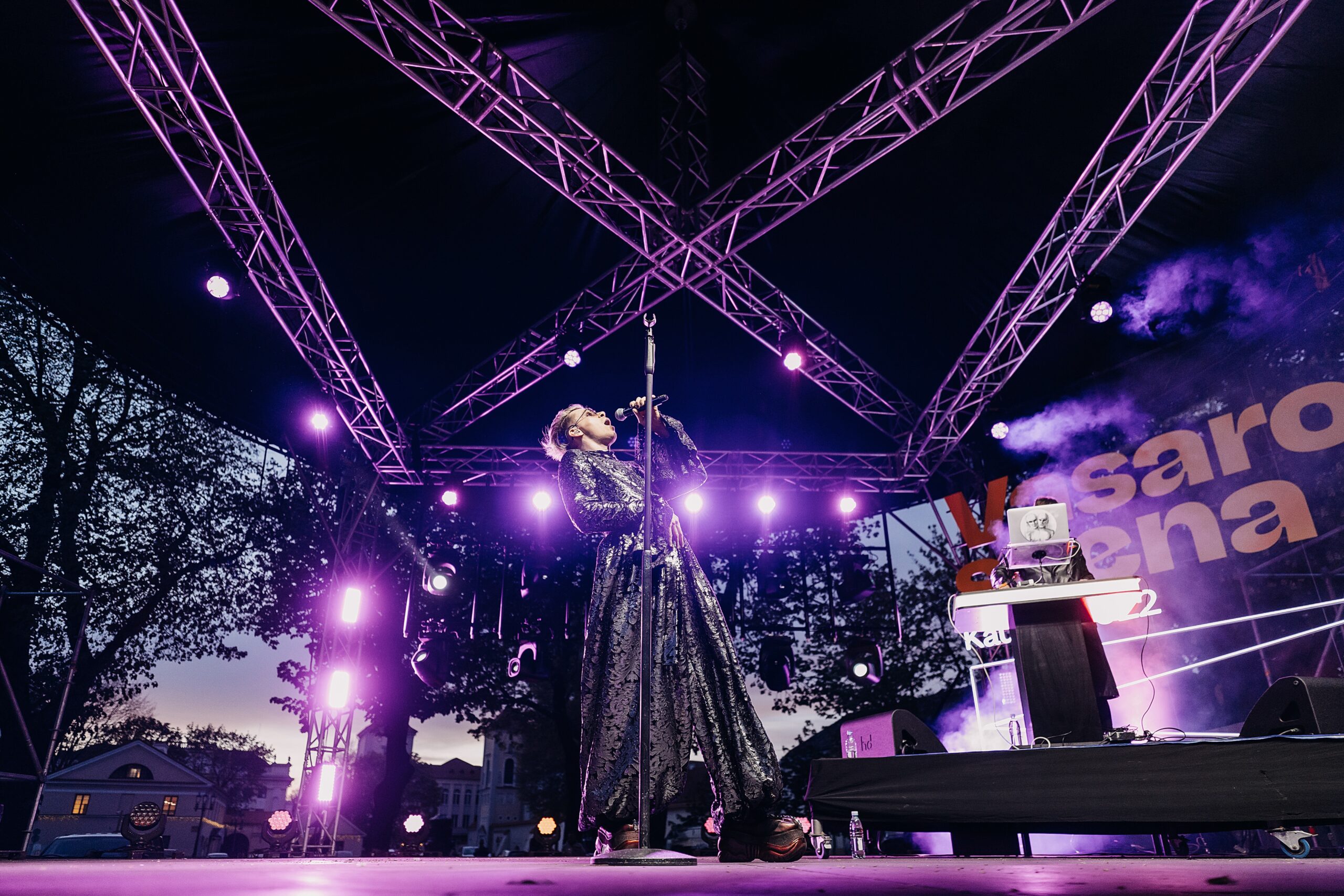
Summer full of culture
During the summer, it will be possible to visit the cultural ship “Nemuno7” by the river or participate in the initiatives of the organizers of “Upynė”. The brass quintet will create a (con)Temporary Music Train, spreading the word about Kaunas on the train route Kaunas–Białystok–Warsaw–Berlin–Esch –Schengen–Brussels. “Kaunas Gospel & Worship Festival” will set up a tent town with concerts by Lithuanian and foreign Gospel choirs and worship groups, film screenings, seminars, creative workshops, and children's programme. And the International Summer School of Modernism “Modernism for the Future”, organized for the fourth year, will introduce you to the treasures of Kaunas architecture and allow you to gain a unique experience of the city as a studio.
Having broken through the wall earlier, an exhibition filled with rebellion, “1972. Breaking Through the Wall” is open at Kaunas Central Post Office. After climbing the Owl Hill, visit the exhibition “Kaunas-Vilnius: Overthrowing the Mountains”, and then, during an hour’s trip, complete your experience with the exhibition at the MO Museum (or vice versa). Finally, refresh the collective memory at the Yoko Ono’s installation “Ex It”, William Kentridge’s “That Which We Do Not Remember” and Marina Abramović’s “Memory of Being”.
The European Capital of Culture programme in Kaunas and the Kaunas region continues throughout the year, with hundreds of traditional and debut events planned for 2022, including exhibitions, festivals, performances and other activities created by local and international artists and Kaunas communities. For the complete Kaunas 2022 programme, please visit www.kaunas2022.eu or the mobile app.
A joint exhibition of MO Museum and Kaunas City Museum: „Kaunas–Vilnius: Moving Mountains“
MO Museum and Kaunas City Museum open a unique exhibition about two cities and in two cities. The exhibition "Kaunas–Vilnius: Moving Mountains" explores the coded and inevitable conflict between Kaunas and Vilnius. However, this tense relationship is approached from a positive perspective – the rivalry does not take anything away from the two cities, but pushes them both relentlessly forward. The exhibition is one of the highlights of the Kaunas – European Capital of Culture 2022 programme this year.
By inviting visitors to the exhibition representatives of MO Museum and Kaunas City Museum invite them to reflect on the changing dynamic relationship between Kaunas and Vilnius. And to answer the question: how are these cities related and necessary to each other? The entire exhibition can be seen by visiting both cities – MO Museum in Vilnius and the temporary M. K. Čiurlionis Art Gallery in Kaunas. The exhibition will run till 28 August.
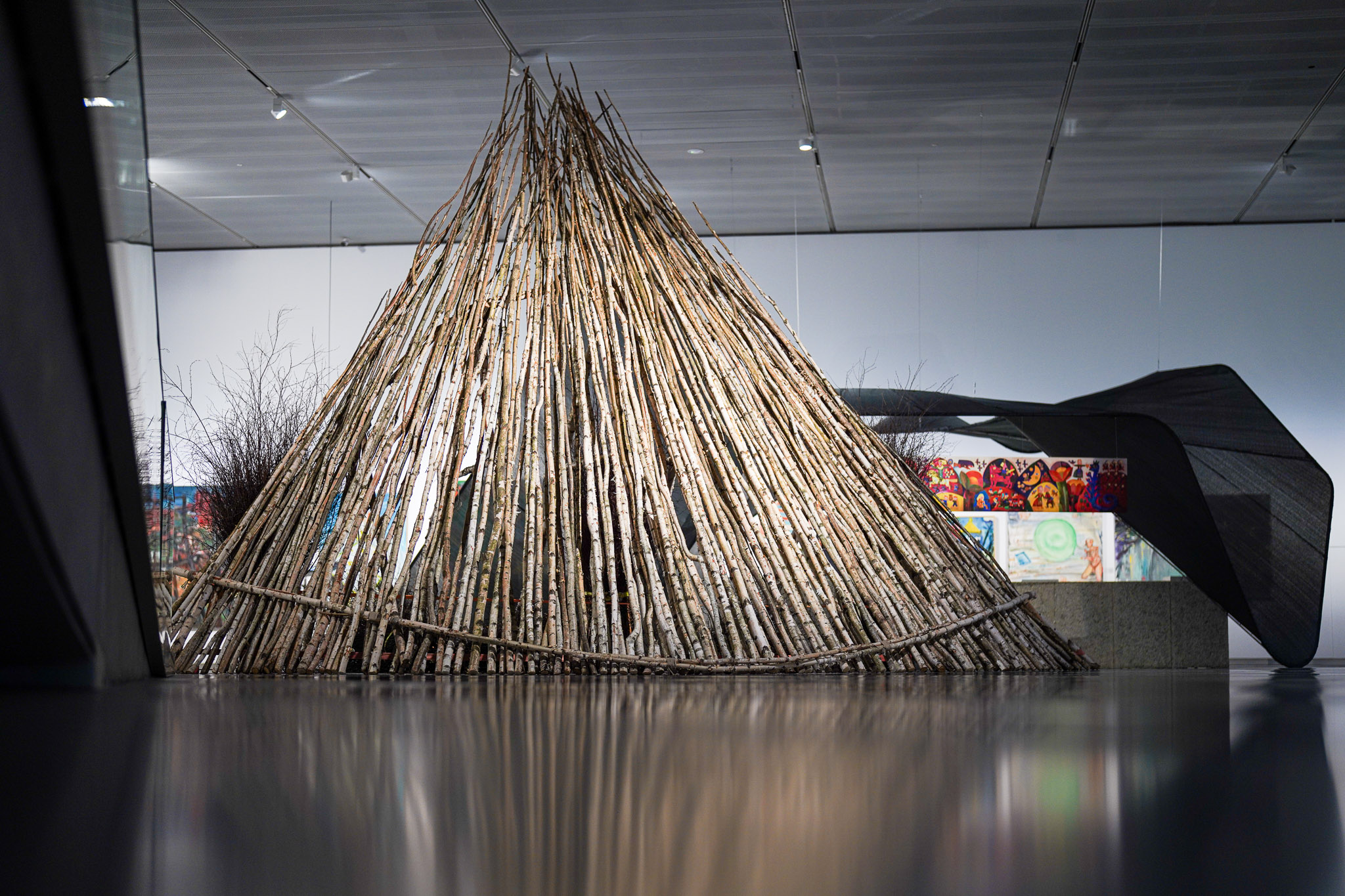
More than external competition
Both cities are associated with stereotypes, with clichés that can't be explained quickly but are familiar to all. However, the curators of the exhibition missed new research about them, so they started by consulting experts in different fields. According to the cultural historian Tomas Vaiseta, the author of the exhibition concept, the exhibition was originally supposed to be about the competition between Kaunas and Vilnius, about stereotypes that could be analysed anthropologically. But as curators delved deeper into the exhibition's material, a different picture of the exhibition began to emerge – a narrative about the relationship between the cities, which is much more diverse than just an external competition.
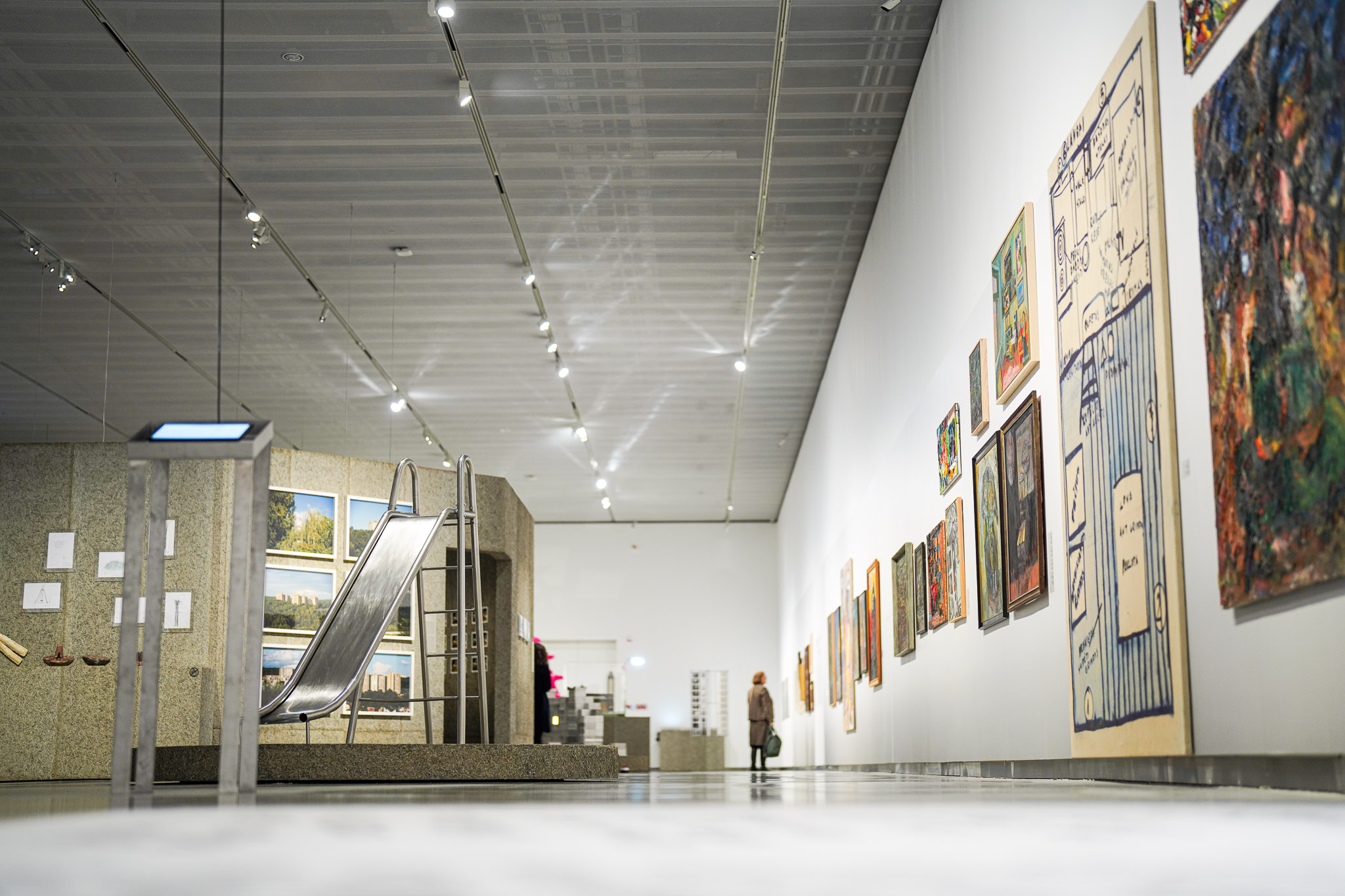
"The exhibition is about the artistic, cultural and political interaction between Vilnius and Kaunas. The various storylines in the exhibition help to present the multi-layered aspects of Kaunas and Vilnius' proximity and relationship. This is an art and cultural history exhibition, which aims to grasp the constantly evolving and changing images of the two cities, the relationship of the citizens with these cities, their self-perception and even alternative identities," says T. Vaiseta.
What mountains are moved?
The curators of the exhibition have left both an intrigue in the title and a hint to the exhibition's intentions – they have chosen the metaphor of a "mountain" to describe the relationship between Kaunas and Vilnius. A mountain is an obstacle, a challenge, it connects and separates at the same time. Through the four mountains that constantly appear in the exhibition's narrative – Gediminas Hill, Žaliakalnis, Tauro Hill and Owl Hill – different forms of interaction between Kaunas and Vilnius are revealed.
"Although the exhibition is about mountains, there are no real mountains in either Vilnius or Kaunas, only hills. Therefore, "mountain" takes on several meanings in the exhibition. It becomes a metaphor for a complex or resentment, when we want what we don't have. The aspiration to "move mountains", which appears in the title of the exhibition, appeals to the effort to get rid of complexes, grievances and obstacles that prevent one from seeing the true relationship between Kaunas and Vilnius", – says T. Vaiseta.

The motif of the mountain is also physically important, as it is repeated in the architecture of the exhibition, which visually reveals the exhibition as an expedition. Visitors walking freely through the exhibition space will discover mountains, their foundations or ruins. The architecture for the exhibition was created by Julijonas Urbonas and Vladas Suncovas, and the exhibition designer is Inga Navickaitė-Drąsutė.
Works of art created especially for the exhibition
The exhibition features a wide range of artworks: paintings, photography, video art and installations. In total, there are 202 works of art (151 in Vilnius and 51 in Kaunas), including seven works created especially for this exhibition. It was very important for the curators to see Vilnius and Kaunas as cities that interact here and now, that influence each other and that are critically reflected upon by artists. Therefore, the exhibition deliberately includes a number of younger generation artists. The exhibition also features as many as 123 different sketches, posters, cartoons, online memes, children's drawings, videos from social platforms or songs.
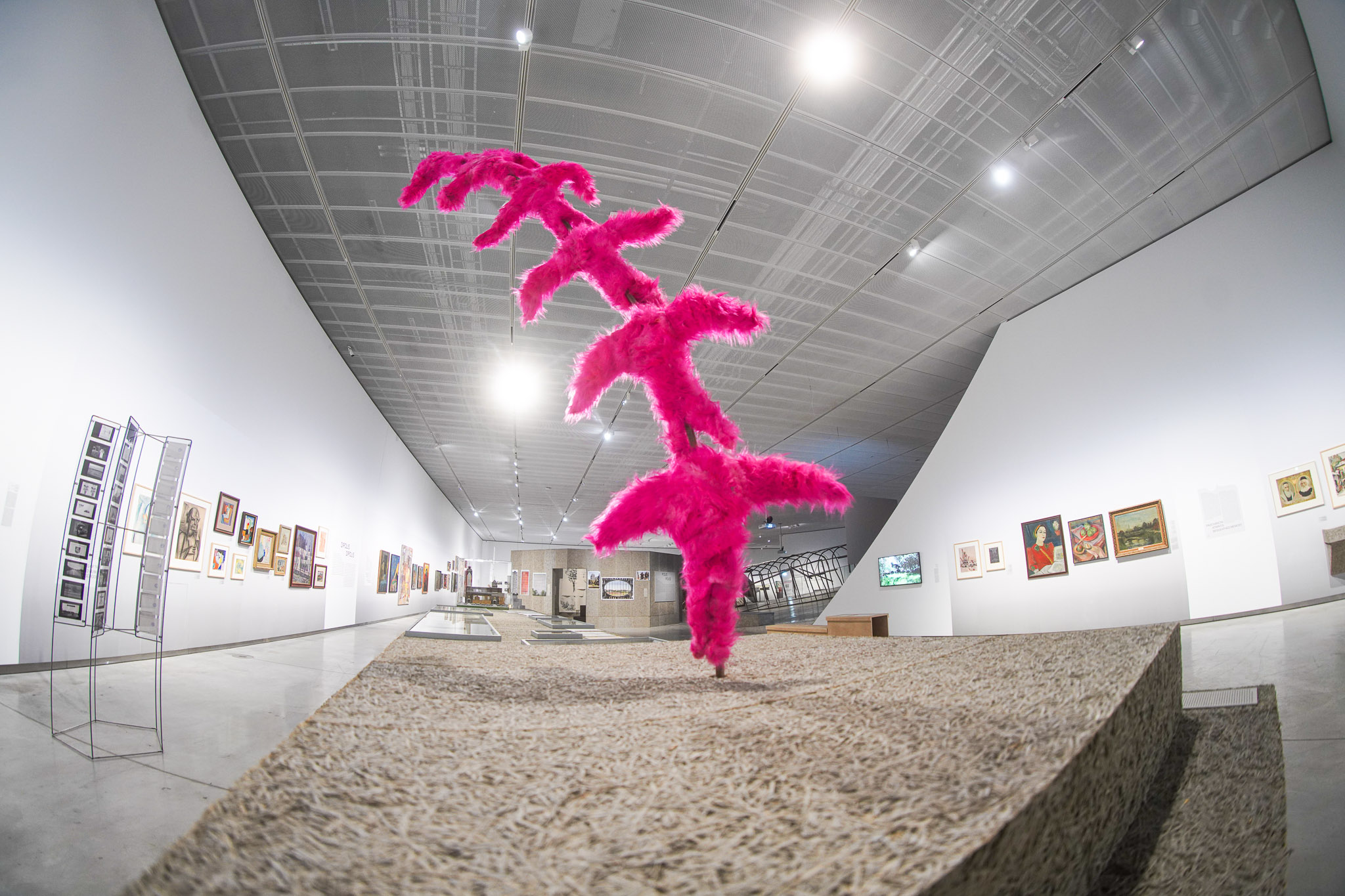
Experiences to accompany the exhibition
By delving deeper into the relationship between Kaunas and Vilnius, the curators of the exhibition have expanded the theme in various formats. Therefore, the exhibition is accompanied by an exhibition book analysing the theme of Kaunas and Vilnius from different angles; from artistic, geographical, sociological and even linguistic perspectives. An e-guide to the exhibition in Lithuanian and English will help you experience the exhibition in both Kaunas and Vilnius.
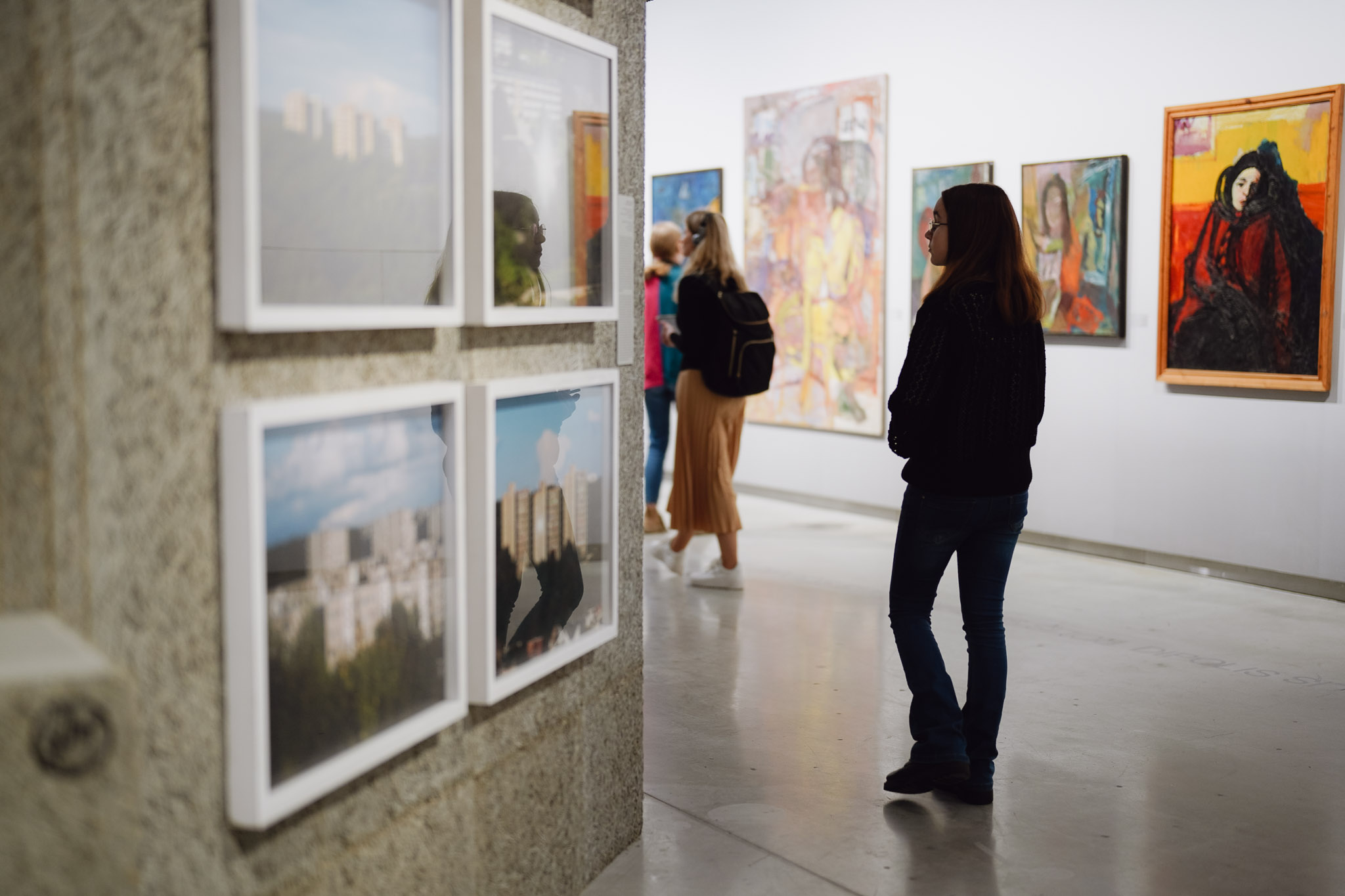
A diverse exhibition team
The co-authors of the exhibition include no fewer than seven representatives from the fields of art, culture, history and other fields of expertise. The author of the exhibition concept is Tomas Vaiseta. Curators and co-curators of the exhibition: Justina Juodišiūtė, Kotryna Lingienė, Kęstutis Lingys, Ernestas Parulskis, Miglė Survilaitė, Rasa Žukienė. The curators of the exhibition were also consulted by: Julijana Andriejauskienė, Marija Drėmaitė, Linara Dovydaitytė, Giedrė Godienė, Lara Lempertienė, Jurgita Verbickienė, Sigita Žemaitytė-Strazdė. Architects of the exhibition: Vladas Suncovas, Julijonas Urbonas, designer – Inga Navickaitė-Drąsutė.
More about the exhibition in Vilnius - https://mo.lt/en/ivykiai/kaunas-vilnius/
About the exhibition in Kaunas – https://kaunomuziejus.lt/exhibition/kaunas-vilnius-moving-mountains/?lang=en
Kaunas 2022 to Open a Summer Stage: Around the World of Music and Culture in 80 days
On 12-13 May, Kaunas - European Capital of Culture 2022 will open a new Summer Stage, the essential cultural gift of the warm season for the city. Every Thursday to Sunday until mid-September, Kaunas Town Hall Square will host concerts, performances and other creative activities by Lithuanian artists and international guests.
The location of the new cultural space - Town Hall Square - fits perfectly with Kaunas 2022’s primary motto, “From Temporary to Contemporary”. It is one of the most traditional places in the city, where the sounds of today’s music will symbolically resound throughout the season, and later, the square will undergo reconstruction.
During the eighty days of stage activities, Kaunas aims to host performers not only from Lithuania and Europe but also from Asia and South America. The most interesting Lithuanian bands and Kaunas 2022 ambassadors will perform here. Audiences will also enjoy stage performances by Oskaras Koršunovas Theatre, Kaunas National Drama Theatre and other events.
Guests from Latvia and Germany for the Opening Weekend
On the occasion of the opening of the Summer Stage, unique gifts from Lithuanian and foreign artists are being carefully packed. The stage will feature four performances and as many different styles of music.
On Thursday, 12 May, Latvian indie-rockers Carnival Youth, one of the most successful bands of the new generation in the Baltics, will return to Kaunas after a two-year break. Back in 2016, the trio received the European Border Breakers Award. The band will present their latest work exclusively for Kaunas.
The Summer Stage will present an exclusive duo – a tandem of Algirdas Kaušpėdas (Antis) and Victor Diawara (Skamp). The songs of Antis, which sparked a true musical revolution during the independence movement in the 80s, remain relevant to this day. A special duo will present a new intriguing programme.
The opening weekend’s highlight will be the eccentric electronic music duo Beissoul & Einius, who rarely appear in Lithuania these days. On Friday night, the performers will surprise not only with their endless energy and exceptional sound but also their looks.
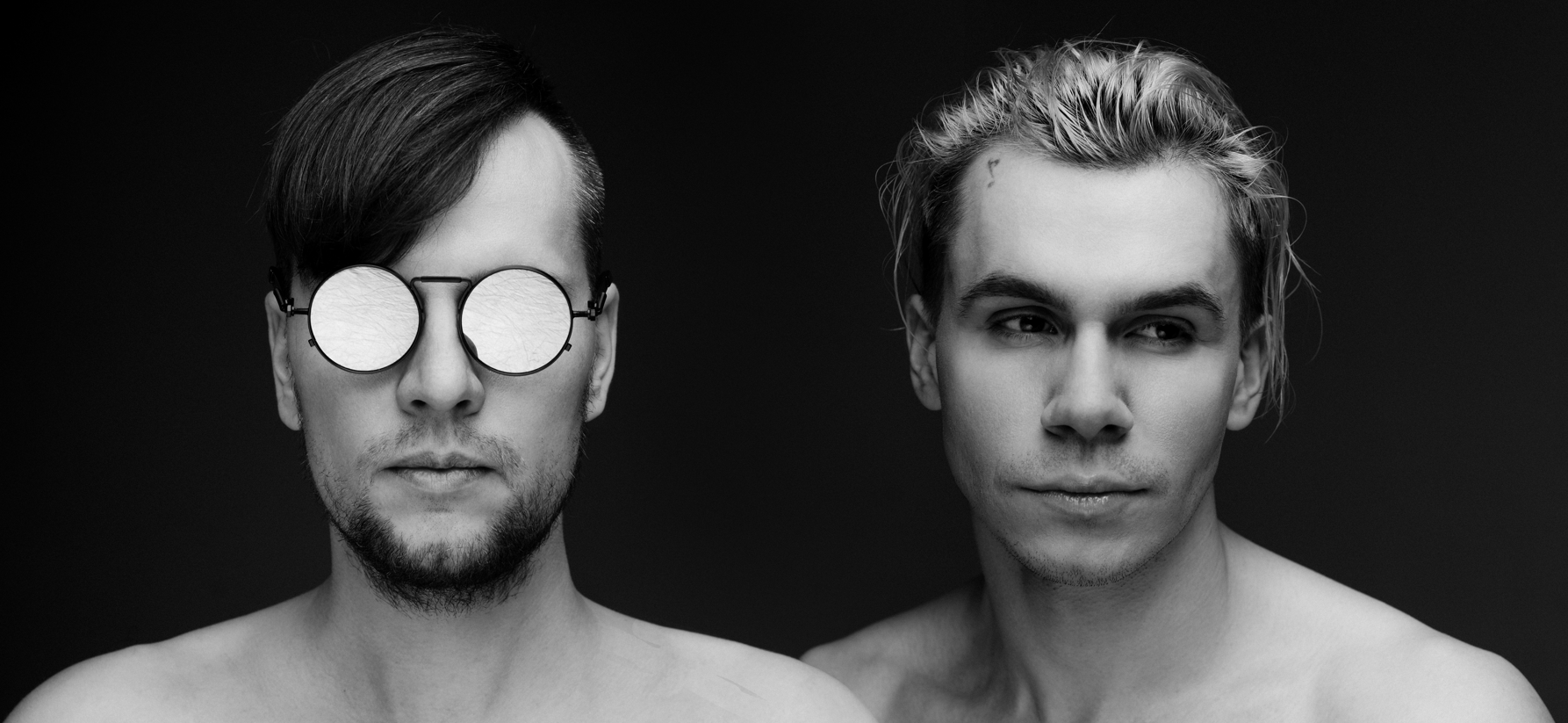
On Friday, for the first time, Germany’s TOYTOY, a jazz band whose music has already captured the hearts of many music fans, will take to the Lithuanian stage. The quartet’s music is inspired by hip-hop rhythms, contemporary classical notes and art-pop sounds.
14 concerts for the Birthday of Kaunas
Coincidence or not, the second act of the contemporary Kaunas myth trilogy, “Santaka”, will also celebrate the city’s birthday. Performers from all over the world - Sweden, Germany, the Czech Republic, Taiwan and Lithuania - will greet Kaunas and its guests on the Summer Stage. As many as 14 performances will offer an alternative soundtrack for the city’s birthday.
The three-day music programme on the Summer Stage will start on a lighter note, with guitar music merging with jazz rhythms before building up to an electronic music fiesta. And for those who love the sounds of world music, there will be a bouquet of exciting performances in the world music programme, with four guests from Asia and Europe.
The local alternative noise-rock band Sraigės efektas will amaze the participants of the Santaka weekend with the sounds of a guitar. They will be joined by a female rock band Shishi, often described as the most vital trio in today’s Lithuanian music, breaking standards about women in alternative music. Both bands have been nominated for the M.A.M.A. (2021) Awards in the Alternative Band of the Year category.
Later will come jazz rhythms by the quartet Juzt. Although the group was formed only a few years ago, it has already conquered the Lithuanian jazz scene - the performers can boast first prizes in a handful of competitions. Kristijonas Ribaitis, an indie and electronica artist whose post-punk sound motifs can be heard in his work, will bring sharper sounds to the stage and invite everyone to dance.
On Saturday, the second day of the Santaka weekend, the Swedish string orchestra Musica Vitae will tell the legends of Sweden through the sounds of historical genres. JISR, a band from Munich, Germany, will combine Western and Eastern cultures. On the same day, pop/indie sounds from Taiwan will also take the stage, with LÜCY, an artist with hundreds of thousands of internet streams. She will later be appearing at major European festivals this summer.
The Czech DJ duo Bratři, frequent performers in the most exciting European locations, has also added Kaunas’ birthday to their itinerary. So did the Lithuanian rock band Colours of Bubbles, twice awarded M.A.M.A. Rock Band of the Year. After dark, after the big Santaka mystery, Baltic Balkan, famous for their around-the-world folk music raves, will bring the buzz back to the Town Hall Square.
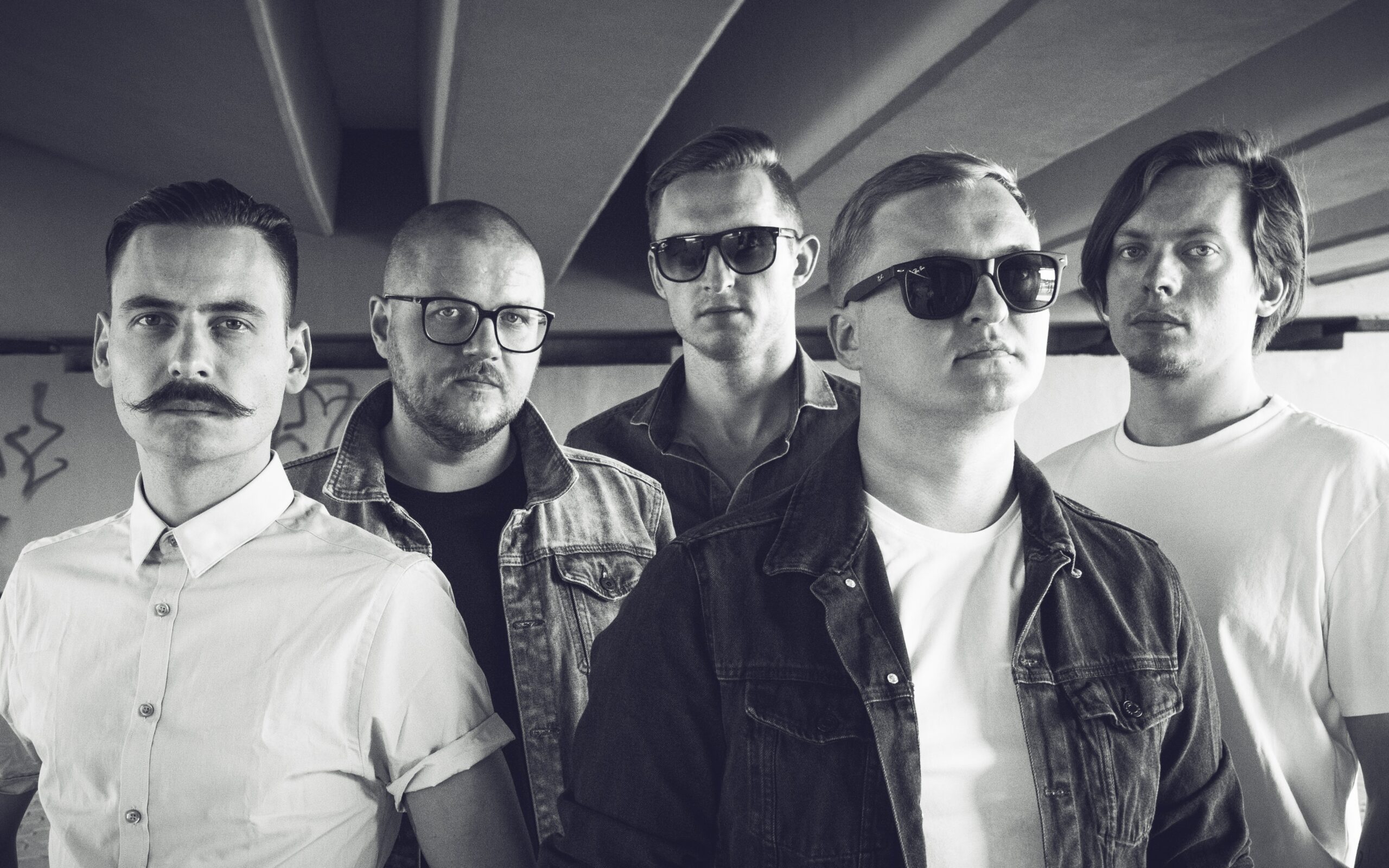
As the Santaka programme will draw to a close on Sunday, the band Kedrostuburas, which enchants with rock, hip-hop, soul and jazz music, will light up the Town Hall Square with upbeat sounds. The reggae/dub band Ministry of Echology, who have released three albums in their career and are preparing a fourth, will also be in Kaunas to present new music on the Summer Stage. Another welcome guest of the Santaka weekend is the art-rock band Arklio Galia, who will perform on saxophones, guitars, plates and drums, while the band members will play librettos on the most intriguing topics.
Last Weekend of May Packed With New Albums, Hip-hop Legends and African and Chilean Rhythms
African rhythms will bring spring to a noisy close in Kaunas. On 25 May, the African Drum Festival comes to the Summer Stage. The cultural event “African Days” has been presenting African culture for a decade and spreads the word about this continent every spring – stoked to have them in Kaunas!
On 27 May, Subhira from Chile will join in the music therapy. One of the country’s most innovative ensembles in the world music genre, their compositions blend the rhythms and languages of South American nations, progressive and contemporary world music, jazz and folklore. They are brought to Kaunas by the World Sounds Festival, which will offer more exotic surprises this summer.
Lithuania’s most loved rock band Garbanotas has prepared a long-awaited gift for Kaunas - on 26 May, they will present their new album on the Summer Stage.
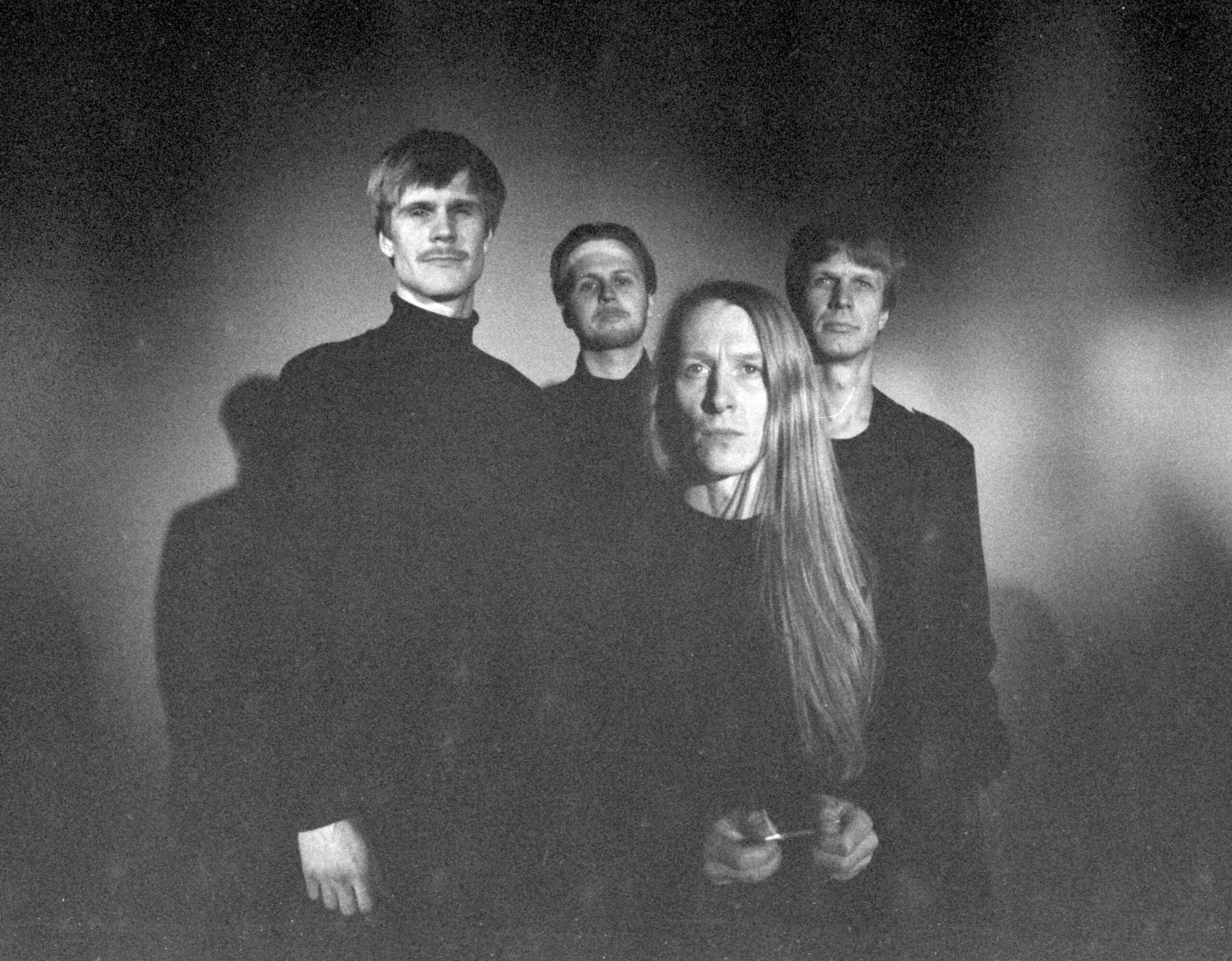
And then there’s a surprise for urban culture lovers - the legendary hip-hop festival “Live from Kaunas Streets” will return to the city for one day, on 28 May, taking the audience back to 2005-2014. The festival, which is of great importance for the development of Kaunas underground culture, has contributed to the entry of artists such as Lilas and Innomine, MC Mesijus, Tie Geresni, Micro One and others into the music scene. Hip-hop fans will be able to see legendary artists such as Vaiper, Erke, MC Messiah and others again.
Another international, but in fact very local, highlight on the Summer Stage is planned for 29 May. The Kaunas 2022 programme “Memory Office” is organising a klezmer music concert “Songs from Testimonies”.
All Kaunas 2022 Summer Stage events are free of charge. For a full schedule of concerts and other activities, visit kaunas2022.eu, the Kaunas 2022 app or the calendar at kultura.kaunas.lt.
Kaunas Spring and Culture Without Borders – the Programme of “Kaunas 2022” for May
May – "Kaunas Spring". This city holds its traumatic traces, ideas of freedom and the culture that has taken off its Soviet clothing. The events of May 1972 are now even more relevant due to the events in Ukraine, so this month’s programme is dedicated to Romas Kalanta and the culture that grew out of the underground. It becomes an even more important message about struggle, freedom and citizenship. Culture will change its shapes: it will sail together with the cultural ship “Nemunas7”, will spread in the Courtyard festival, and will sound on the Summer Stage. For a perfect ending – the second act of the contemporary myth of Kaunas trilogy – the “Confluence” (Santaka). The large-scale event with the entire three-day programme is about to become the largest birthday celebration of Kaunas both for the people of the city and its guests.
International Writers’ and Book Festival “Kaunas Literature Week”
Book lovers will be delighted – Kaunas will host an International Literature Festival! The programme of the festival includes foreign and Lithuanian, young and famous writers and poets who are well known to readers. On 4th of May, the festival will be opened by a meeting with Vaiva Grainytė, the poet and writer who won the Lithuanian National Prize for Culture. The event will be closed by a solidarity event with Halyna Kruk and other Ukrainian authors. The horizons of literature this year will extend from France to Indonesia. Follow the programme of the festival on www.literaturossavaite.lt
When: May 4-8
Where: various places in Kaunas
Organizer: Vytautas Magnus University
The event is free
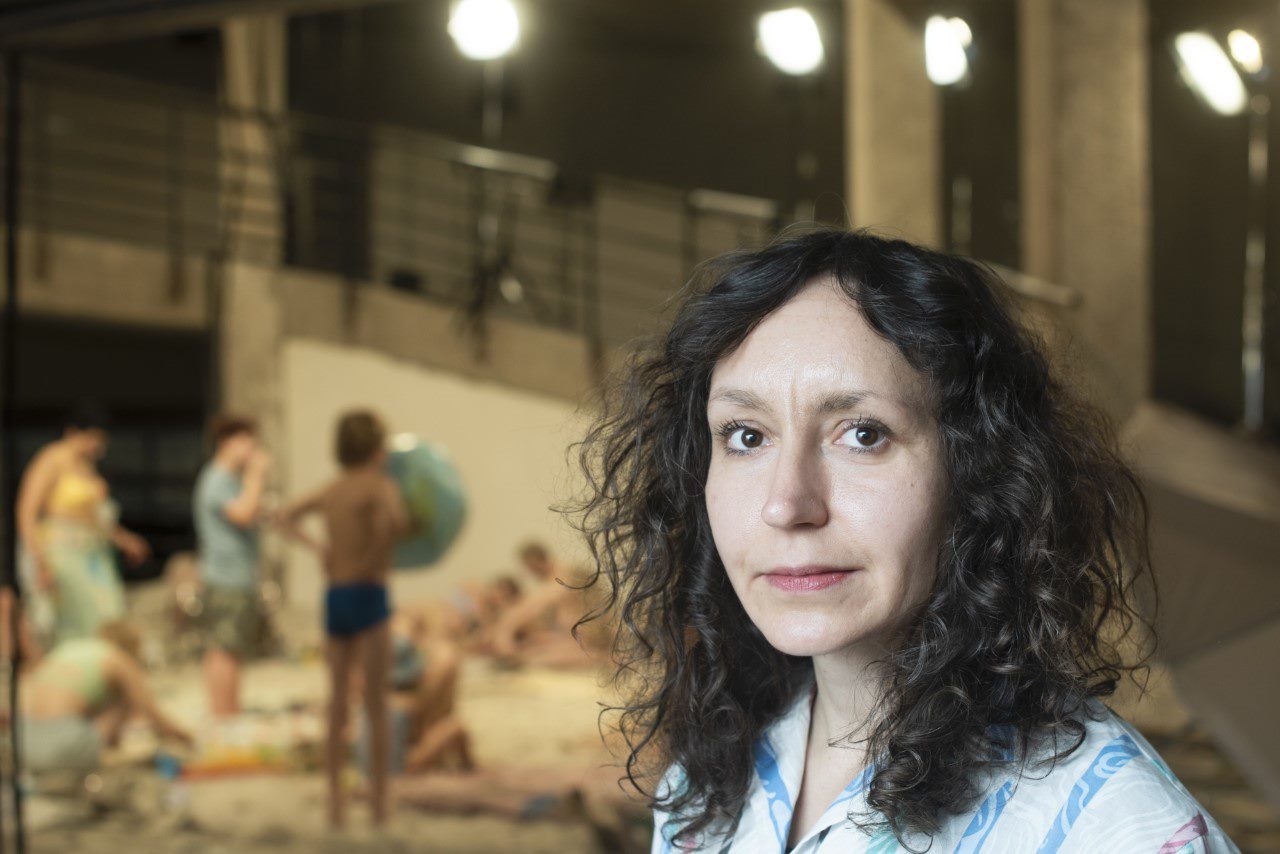
Europe Day. Symphony of Unity
The 8th of May will be dedicated to peace and unity in Europe! Europe Day will be celebrated in the European Capital of Culture: a special event will invite you to listen to the music and participate in important conversations. The European of the Year will be awarded during the evening.
When: 8 May
Where: Kaunas Town Hall square
Organizers: Representation of the European Commission in Lithuania and “Kaunas 2022”
The event is free
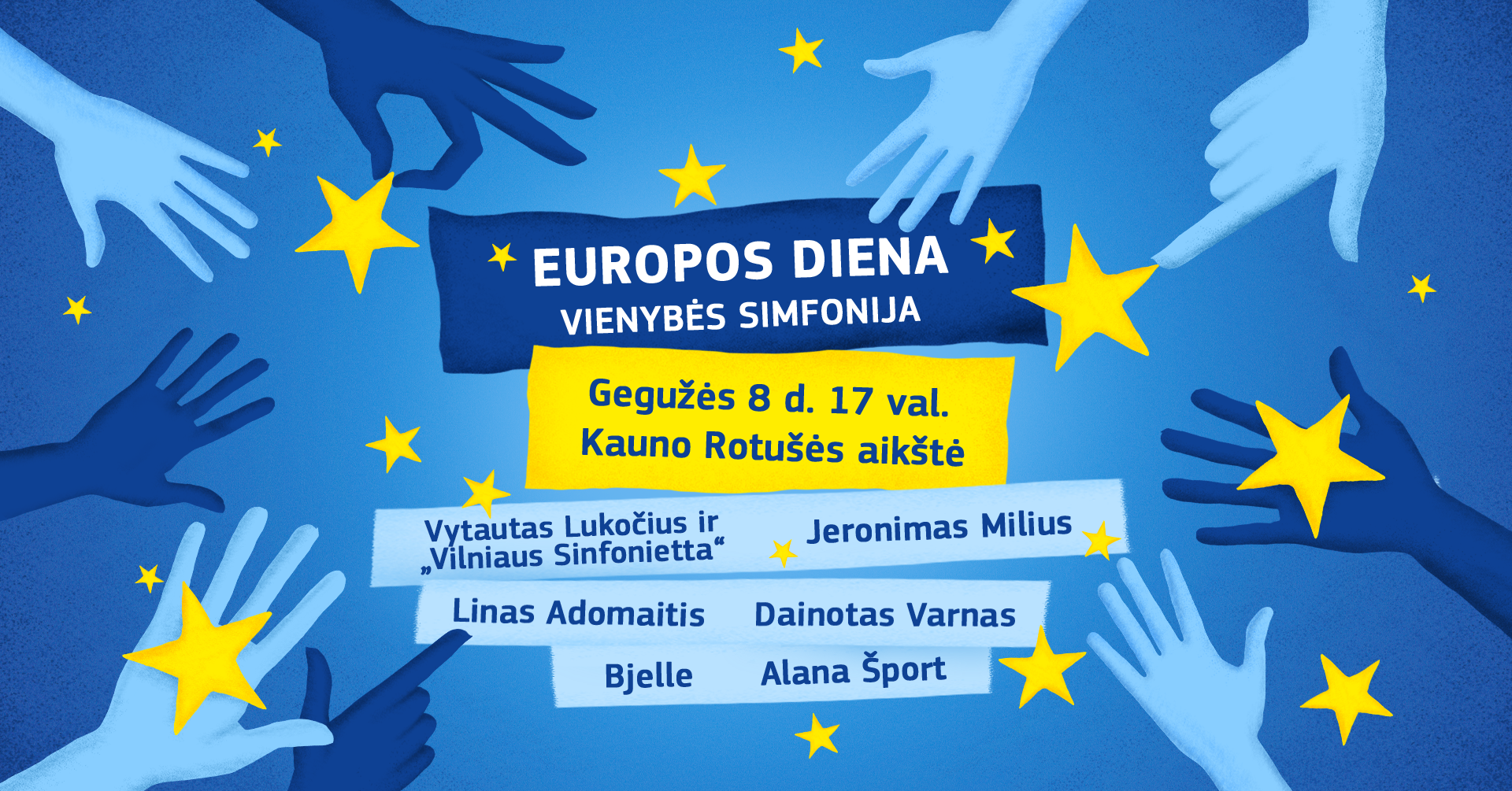
Exhibition “1972: Breaking through the Wall”
We are sure that every visitor will be touched by this exhibition. Our city will be as open to itself as never before. The exhibition “1972: Breaking the Wall” will take the viewer to the communities of people who disobeyed and resisted the system in the 1960s and 1970s: youth rock bands, actors of drama and pantomime from Kaunas, rebellious hippies, modern artists of Kaunas and Vilnius. Paintings, photographs and films, documentary testimonies of musical life, youth fashion of this period and other artefacts tell about alternative culture and non-Soviet way of life in Soviet Lithuania.
When: from 14 May
Where: Kaunas Central Post Office
Organizer: “Kaunas 2022”
Tickets: on site
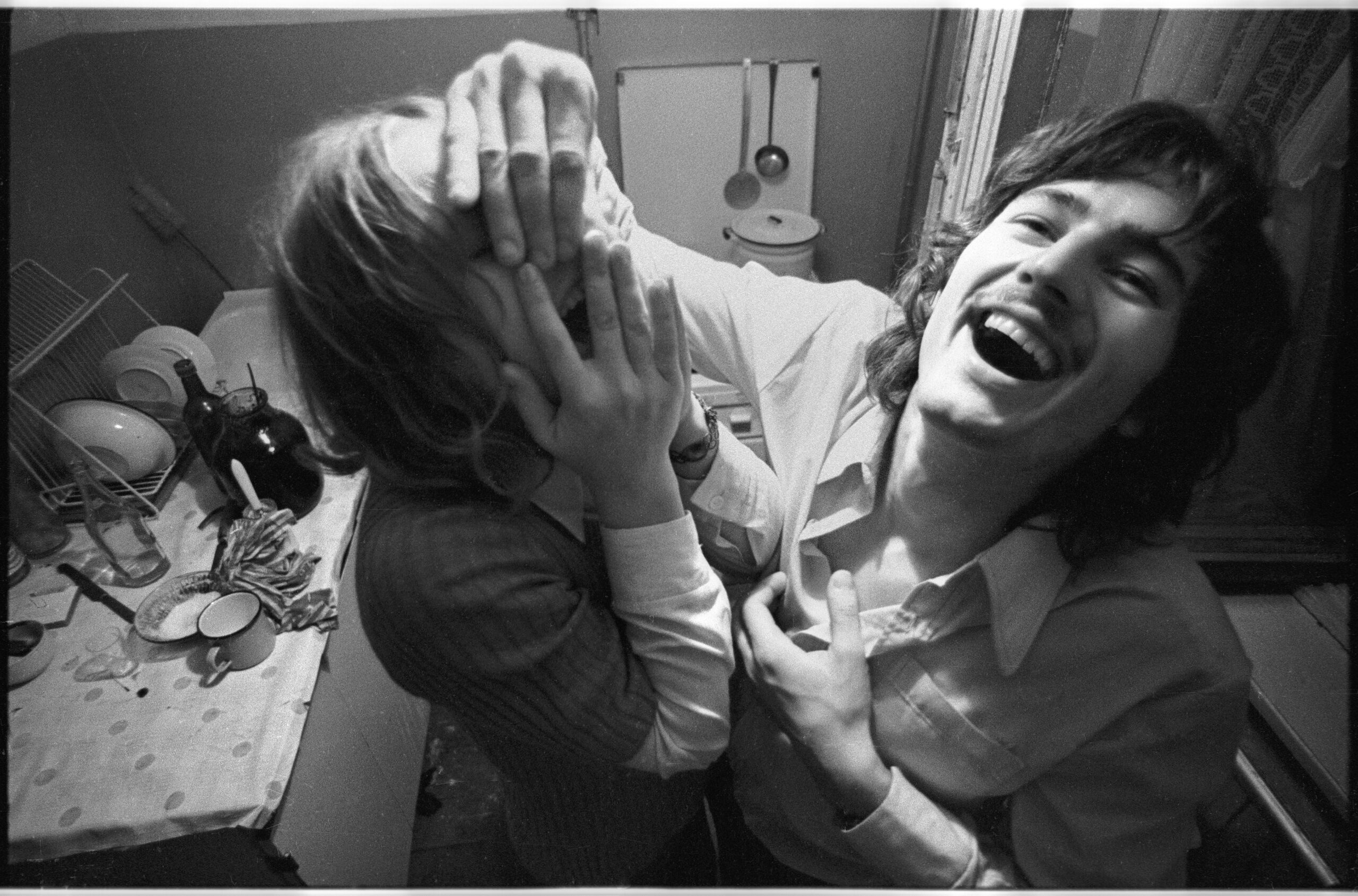
International Conference "Forgiving or Forgetting – Dealing with a Painful Past"
How to deal with the painful history of the 20th century? To conveniently forget it and allow separate interpretations of the past to thrive, or perhaps to go deeper in search of forgiveness and agreement? The international scientific conference "Forgiving or Forgetting – Dealing with a Painful Past" will seek to bring together people who can share the experiences and methods of recognizing the painful past and encourage Kaunas residents to understand and reconcile with the unspoken history of their city.
When: 13-14 May
Where: Vytautas Magnus University
Organizer: VMU Andrei Sakharov Research Centre for Democratic Development
Theatre play “Kaunas Spring’72”
The theatre play “Kaunas Spring’72” of the Kaunas National Drama Theatre intertwines documentary material and today’s look at the events of 1972 in Kaunas. Theatre director Jonas Tertelis raises the question of how the act of 19-year-old Romas Kalanta resonates in today’s society. The analysed moods, expectations and tensions of that time become a surreal fragment of collective memory in the great picture of European and global movements for liberation. Are these events really just the past, or is history really repeating itself, and what are you personally trapped in?
When: 13–15 May
Where: Kaunas National Drama Theater
Organizer: Kaunas National Drama Theater
Tickets: HERE
Premiere of rock opera “1972” dedicated to Romas Kalanta
Rock opera is best suited to remember Romas Kalanta. Just outside of Kaunas State Musical Theatre on May 14, 1972, 19-year-old Romas Kalanta, in protest against the Soviet regime, poured gasoline on himself and having set himself of fire, shouted: “Freedom for Lithuania!”. In commemoration of the 50th anniversary of this significant event, the personality of Romas Kalanta revealed in the rock opera “1972” is an artistic expression of that time, filled with the spirit of protest and youthful energy, and a unique musical experiment combining documentary and fiction with the sound of a modernly interpreted psychedelic rock classic.
When: 14 May
Where: Kaunas State Musical Theatre
Organizer: Kaunas State Musical Theatre
Tickets: HERE
European Capital of Culture Forum 2022. LEGACY
Although the most dynamic season of the programme is ahead of us, the year of Kaunas - European Capital of Culture each day is approaching its last day. What awaits the city, the district after this year? Answers and solutions will be sought as usual for the programme of “Kaunas 2022” – in cooperation, involving participants, creators, partners and researchers of the Capital of Culture programme.
When: 19–20 May
Where: Kaunas
Organizer: “Kaunas 2022”
The event is free
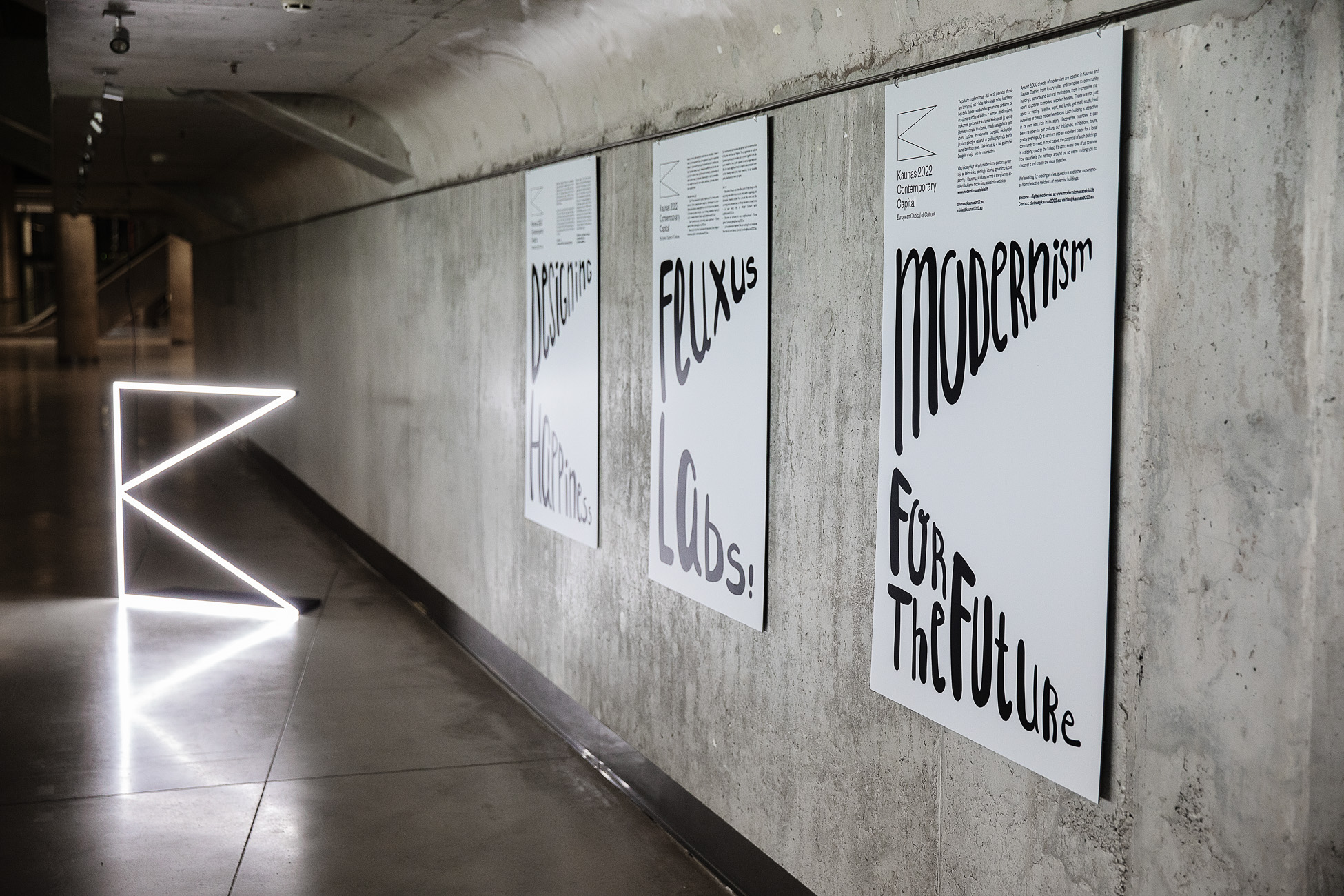
Courtyard Festival
This traditional event is aimed at strengthening the community and friendship spirit of the residents of Kaunas city and Kaunas district, and commemorating the upcoming International Neighbours’ Day. The participants of the event include communities, organizations and neighbours who will bring their chairs and tables to the city centre and decorate them with white tablecloths and flowers. During the event, music will be played in unexpected places, participants will be surprised by various creative installations and performances, some of which you will be able to create yourselves – residents and guests of the city.
When: 20 May
Where: Laisvės Alėja and Vilnius Street
Organizer: “Kaunas 2022”
The event is free
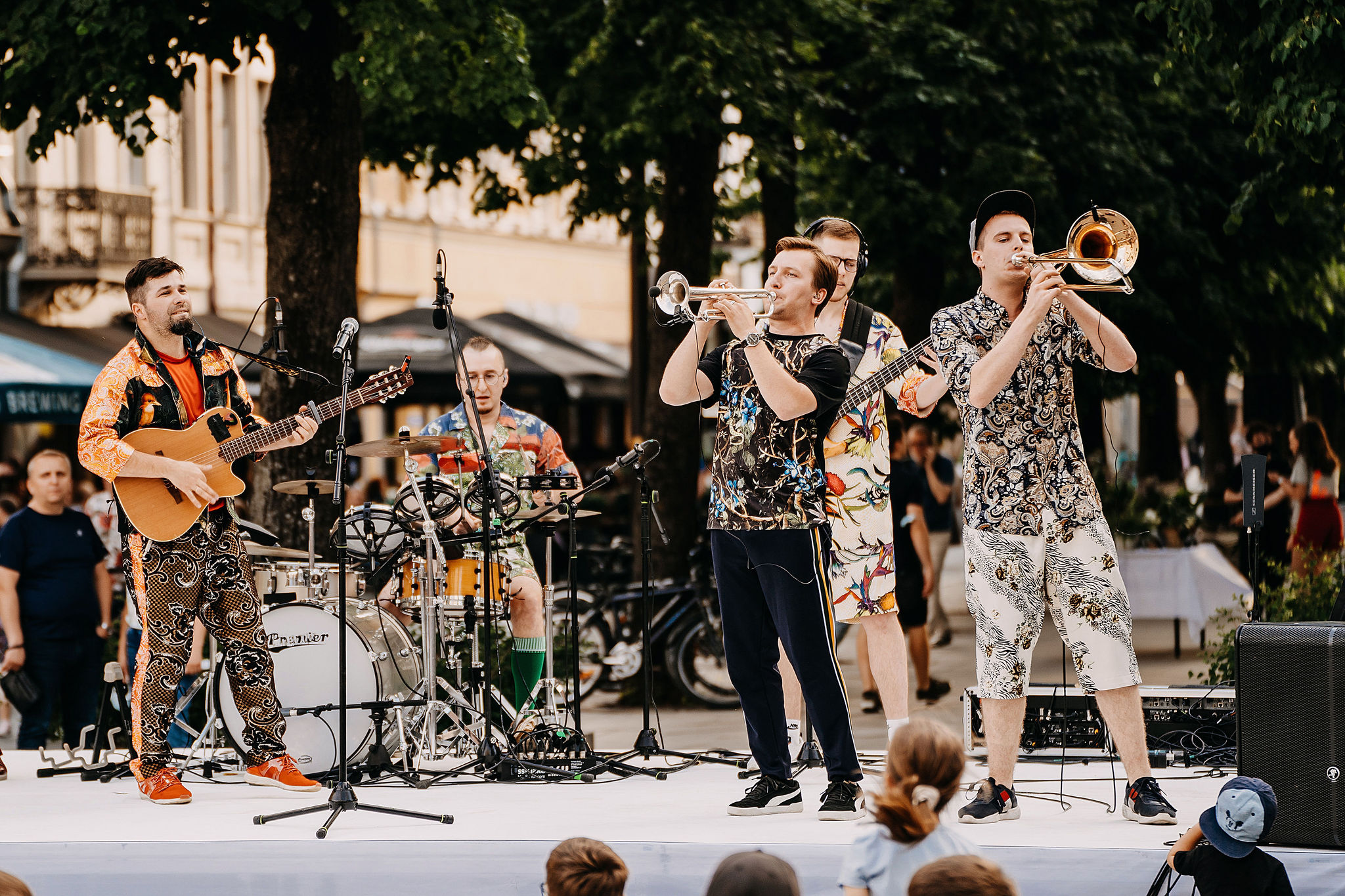
The great event of the year: CONFLUENCE. Act 2 of the Trilogy
“Confluence” is the second major event of the “Trilogy of Contemporary Myth of Kaunas”, which will once again fill the entire city. For the Birthday of Kaunas – in one of the most impressive places in Lithuania – at the confluence of Kaunas – we invite the visitors to resolve their internal contradictions and celebrate unity. At sunset, the city celebrating its birthday will be greeted by a performance on the water of an unprecedented scale in Lithuania, and for the rest of the weekend, the audience and guests of the city will be amazed by the performances of acrobats, contemporary circus performances, the introductory events of the international puppet theatre festival “Kaunas Puppet 22”, the initiatives “Let’s celebrate the River” will invite visitors to the river bank, musical picnics to the settlements of Kaunas and Kaunas district located by the rivers. Get ready everyone – days full of events are awaiting.
When: 20-22 May
Where: Confluence of the Nemunas and Neris, various places near the rivers in Kaunas and Kaunas district
Organizer: “Kaunas 2022”
The event is free
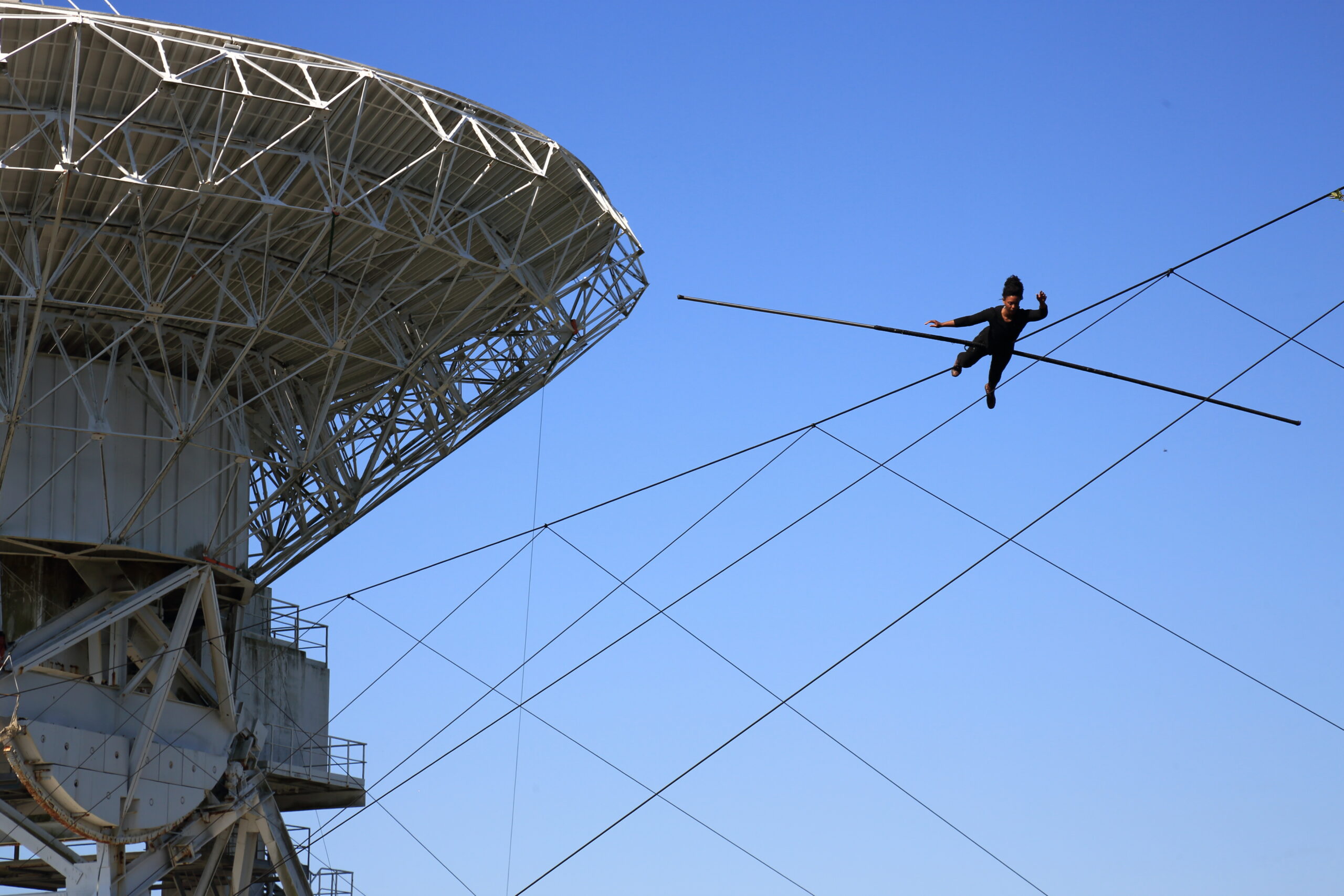
The great ship of culture “Nemunas7”. Opening
“Nemuno7” is a unique river art and landscape design project in Europe that will serve as a public cultural space. The object combines history of technology, heritage and contemporary architecture for local residents, guests from Lithuania and abroad will become a new place of attraction in Kaunas district. 22nd of May is worth marking in the calendar as it will be the opening day of the ship-excavating machine “Nemunas7”, where the audience will be invited to experience the water from the perspective of art, architecture or science.
When: May 22, 21:30
Where: Left bank of the River Nemunas in Zapyškis, Kaunas Disctrict
Organizer: “Ars Futuri” VšĮ
The event is free
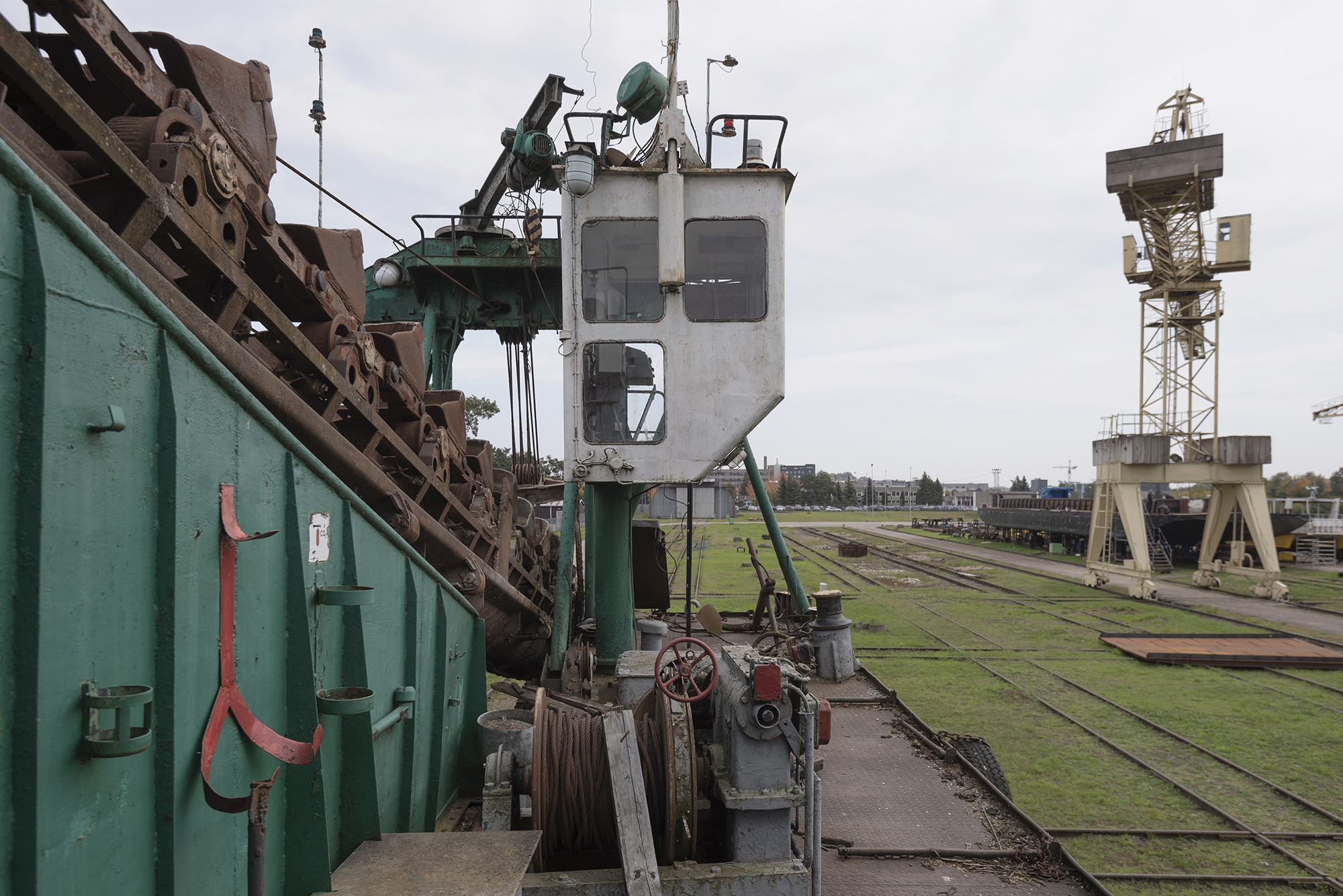
Exhibition of artists’ group “Konsortium” “Memory / Future” (Germany)
There are a lot of modernist buildings in Kaunas. International and intercultural exchanges started here, architects and artists came here not only from Lithuania but also from Germany, Poland, Russia, Switzerland and the USA. A group of artist-curators “Konsortium” (Germany) invited over fifty artists from various countries of the world to collaborate in creating a collective sculpture dedicated to this historical period of Kaunas.
From the end of May to the beginning of July, artists will present a temporary exhibition in the historic building of Kaunas Old Town. In the vicinity of the historical presidential palace of the Republic of Lithuania there will be a “mini museum”, a three-dimensional map of the city consisting of paintings and sculptures.
When: from 27 May
Where: Gimnazijos g. 4
Organizer: “Kaunas 2022”
Exhibition “Kaunas - Vilnius: Moving Mountains”
Kaunas and Vilnius, Vilnius and Kaunas. The largest cities in Lithuania. Competing, disagreeing, but also in need of each other. The pride and superstitions that have filled the life of Vilnius and Kaunas hide the truth – indeed, these cities need each other. This is told by the exhibition “Kaunas–Vilnius: Moving Mountains” taking place at the MO Museum in Vilnius and Kaunas City Museum at the same time. Would like to see the entire exhibition? Then get ready to visit both cities!
When: 23 April - 28 August
Where: Temporary M. K. Čiurlionis Gallery in Kaunas, MO Museum in Vilnius
Organizer: Kaunas City Museum, MO Museum
Marina Abramović’s exhibition “Memory of Being”
One of the most anticipated art events in Kaunas and all of Lithuania is the exhibition “Memory of Being” by Marina Abramović, one of the most famous performance artists in the world, which is to be presented for the first time. The exhibition offers a detailed presentation of the works by Abramović from the 1960s to recent years; the exhibition also draws attention in a unique form - for the first time it is prepared as an impressive video installation from selected documentaries and films of the artist's performances.
When: until 30 July
Where: Kaunas Picture Gallery
Tickets HERE.
Organizer: Art Park Gallery “Meno parkas”
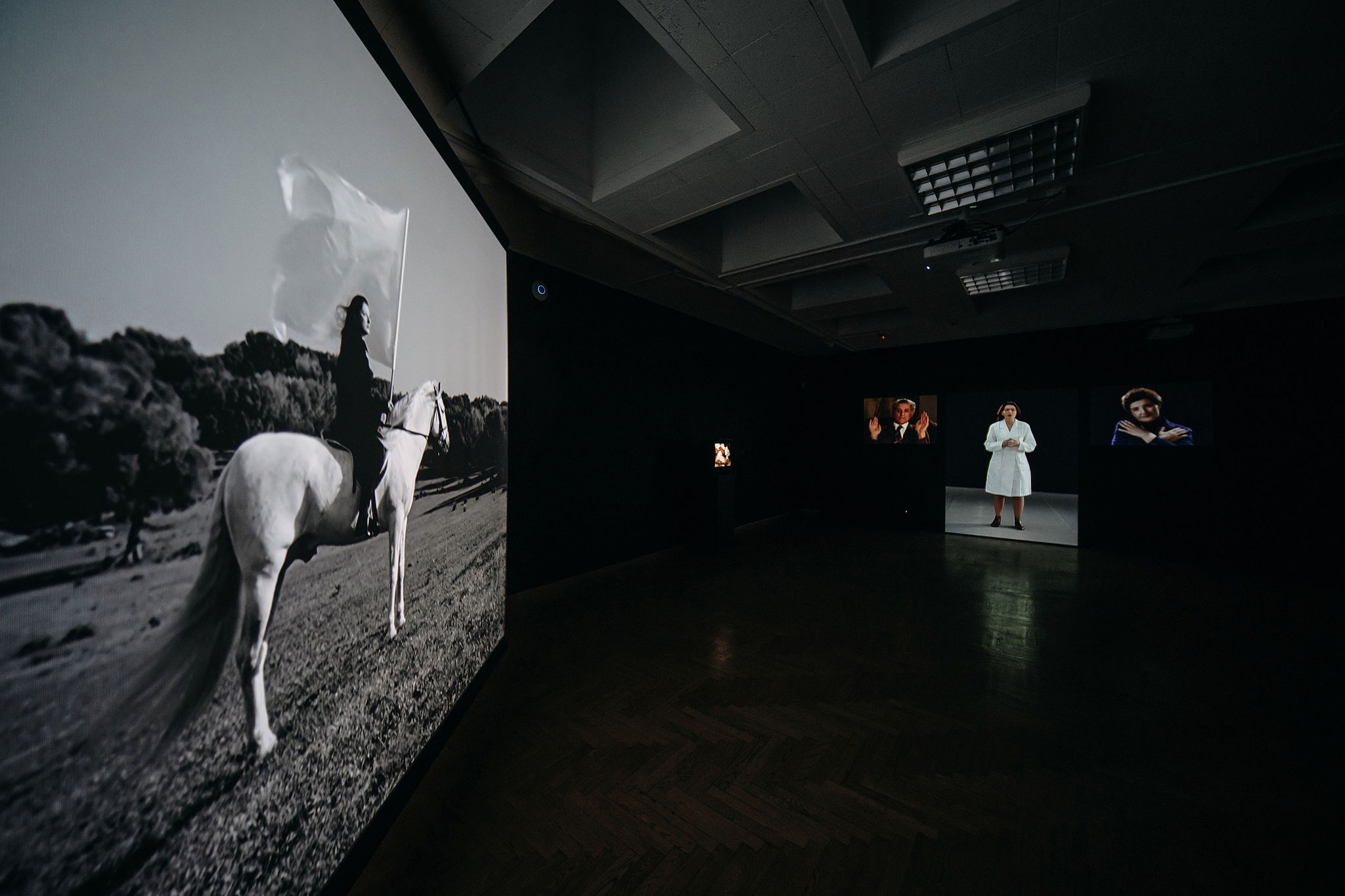
Summer stage of Kaunas 2022
Throughout the warm season, the heart of Kaunas Old Town – the Town Hall Square – will beat with the rhythm of culture. Residents and guests of Kaunas will be delighted by the most memorable performances, concerts, tastings and meetings by the summer stage of “Kaunas 2022” that will be located here. From May to September, you may enjoy the weekends of a carefully prepared artistic program and hundreds of free events with the best Lithuanian and foreign music performers and other performances.
When: 12 May - 17 September
Where: Kaunas Town Hall Square
Organizer: “Kaunas 2022”
Events are free
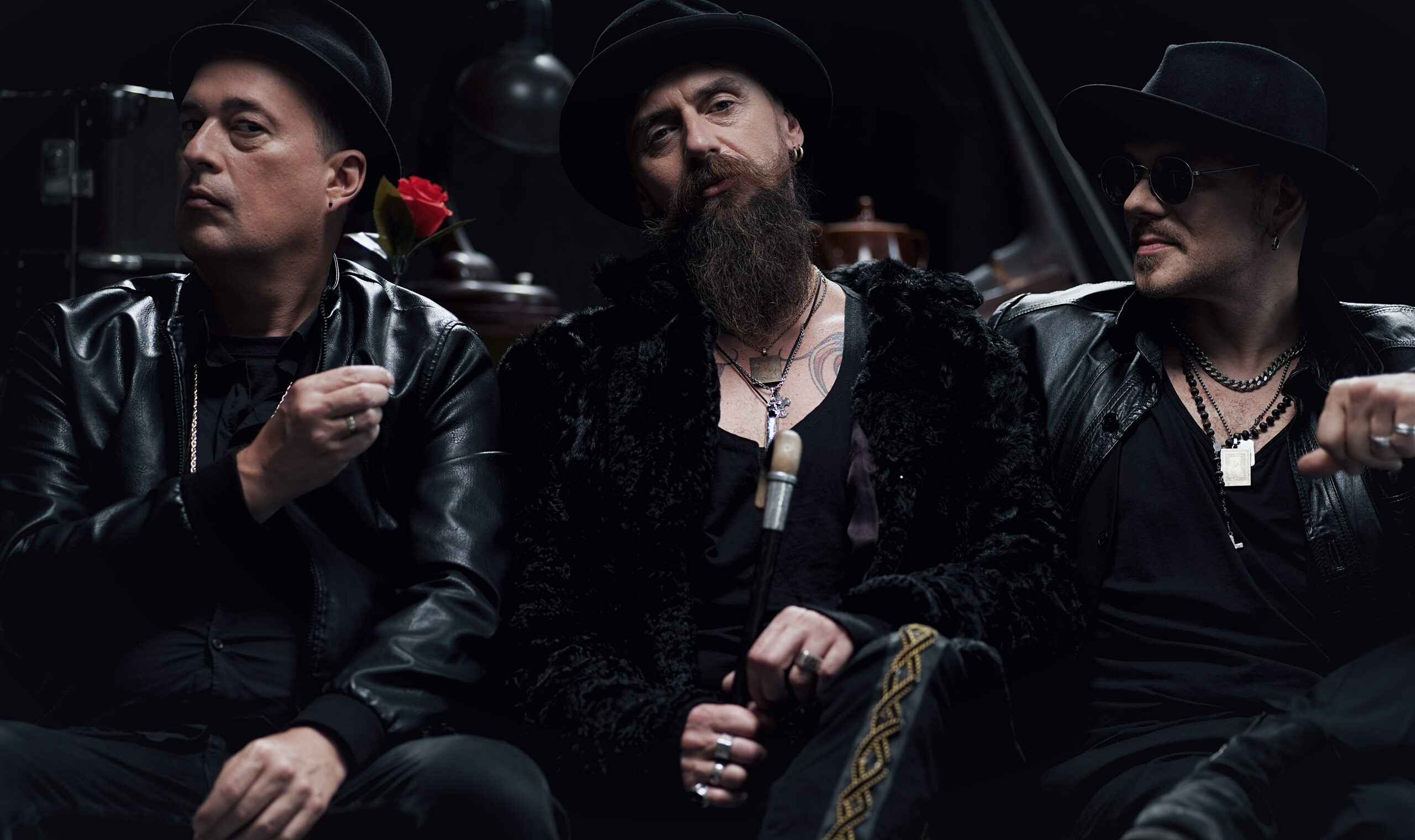
Robert Magro’s Contemporary Circus Performance “Visions”
The works of contemporary circus director Roberto Magro have already become an integral part of the activities of “Kaunas 2022”. The Italian director’s performances reveal bold and unexpected creative decisions and respect for the local population and the environment. We have great news – Roberto Magro and his circus group are returning to Kaunas district and will invite you to see the mysterious theatre performance “Visions”.
When: 31 May – 4 June
Where: Batniava
Organizer: “Kaunas 2022”
Tickets will be available soon
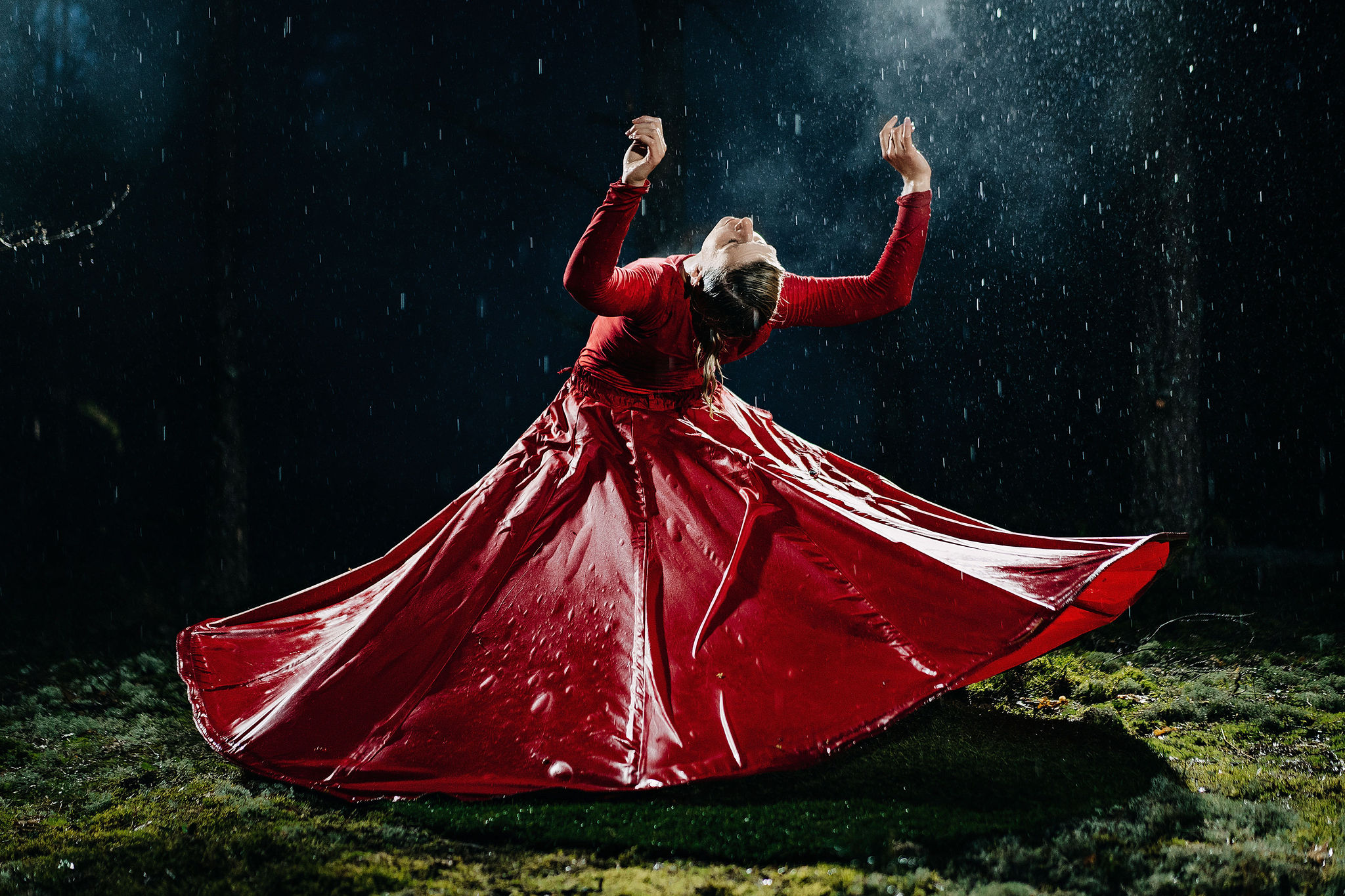
The Never-Ending Programme of May
Residents of the city are invited to check the programme every day, as it offers: an international puppet theatre festival “Kaunas Puppet 22”, a concert “Nemunas seven” (duo “Tykumos” and choir “Kamerton”), Putvinskis Street Day, kite festival “Between Earth and Sky”, a documentary performance “TAXI”, 3x3 basketball tournament “A Street Beast”. The organizers remind you that creative inspirations may be sought in exhibitions that have already been opened and are still on open and which feature familiar faces, big names and even greater ideas. The M. K. Čiurlionis National Museum of Art hosts an exhibition “That Which We Do Not Remember” by William Kentridge, and Yoko Ono’s installation “Ex It” at the Bank of Lithuania.
Full programme of events is available here www.kaunas2022.eu or can be downloaded by the mobile application “Kaunas 2022”.
Grande Saison SanuaK: See Kaunas through the eyes of others
Kaunas and Berlin are joining forces to give Kaunas residents and guests a special experience. International artists from B_Tour (Berlin) and local tour guides from Ekskursas (Kaunas) have united their expertise and created a programme of three guided tours titled Grande Saison SanuaK. As part of Kaunas European Capital of Culture 2022, on Sundays of May (1st, 8th, and 15th), the tours will challenge the visitors’ perspective on their surroundings with creativity and humour. From exploring puddles or cracks in the asphalt to getting to know some local senior women, the organizers of the programme promise to surprise, make laugh, and help to see the city in a new light.
Grande Saison SanuaK refers to the Grande Saison Dada spring series of tours organised by the Dada group in 1921, Paris. Inspired by this happening, the excursions in Kaunas will combine auditory, visual, performative, narrative, and somatic artistic strategies to challenge the social structure of the guided tour playfully.
According to Yael Sherill, the artistic director of B_Tour, conventional guided tours are mostly focused on the sites. In contrast, artistic tours offer a unique experience created by artists: “During the three tours, the “site” might be a commonplace courtyard facing a “normal” residential building, a crack in the asphalt or a private student apartment.”
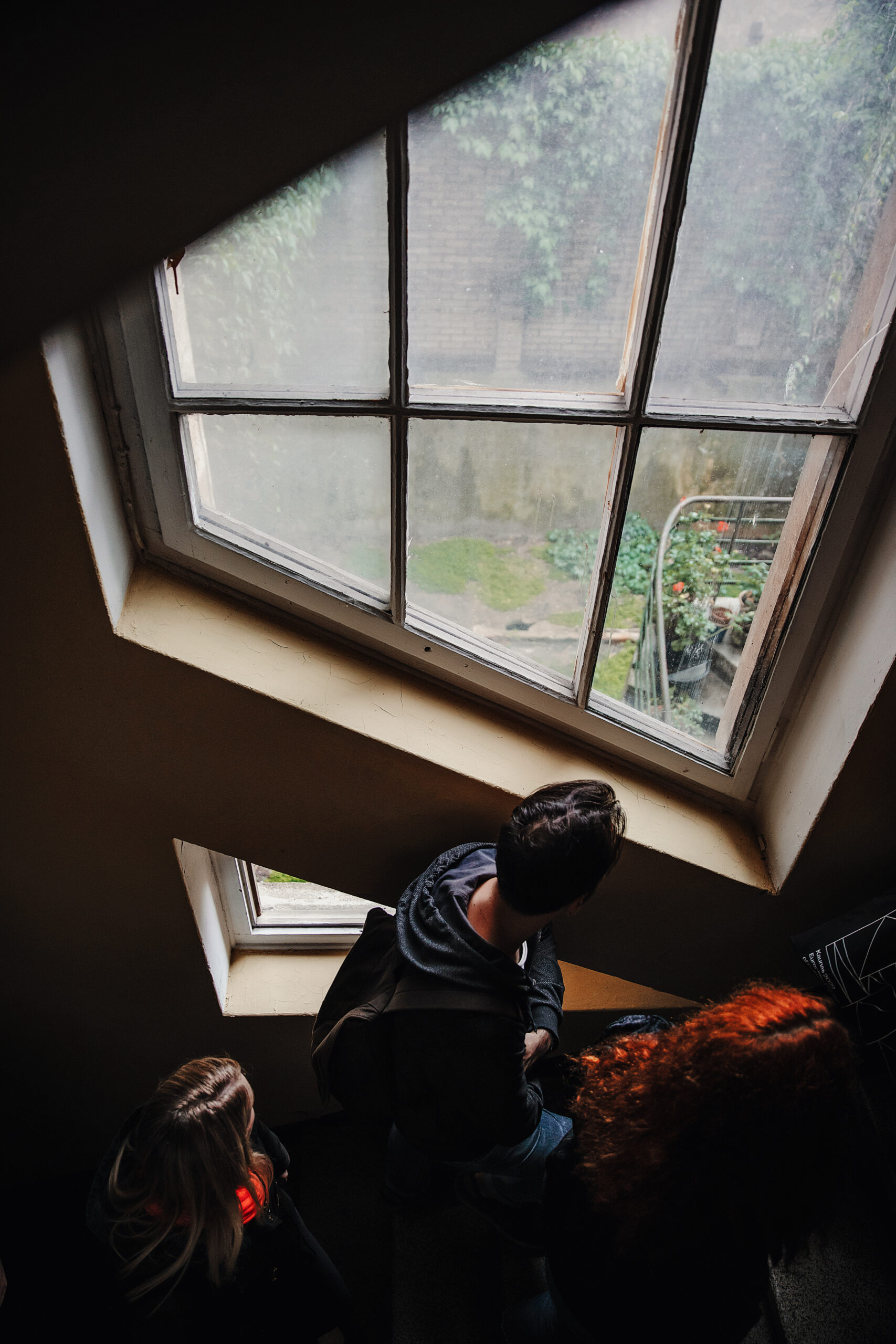
Her colleague Lianne Mol adds that these “sites” become part of a larger narrative told by the artists about intergenerational trauma, post-war architecture, and utopian philosophy.
„The tours apply various strategies; performativity, visual storytelling, intimate conversations, awkward silences, phone calls… You will have to come and see!“ invites Sherill.
The excursions will take place in the city centre and Šančiai district. The visitors will be invited for a one-to-one conversation in a secret location with “Mamos Mama Mena”, local senior women who will tell their personal stories about Kaunas under Russian influence. Co-walkers will discover the wishes and needs, shyness, and anxiety of puddles in the Šančiai district on the tour Puddle Watching. And on the tour Die Wohnung (The Dwelling), the audience will visit the first Bauhaus settlement worldwide in Stuttgart, Germany, without ever boarding a plane.
Kaunas is open to new experiences
Dada’s series of happenings and manifestations in the public space in 1921 included an excursion to the St. Julien-le-Pauvre church. The independent curators from Berlin note that this site-seeing trip was promoted in flyers and newspapers as an alternative guided tour that would correct the incompetence of regular tour guides and visit places with “no reason to exist”.
In line with the Dadaist approach, the excursion consisted of a series of events, like the guide Georges Ribemont-Dessaignes reading the definitions of random words from the dictionary in several places and the performative presentation of a manifesto by André Breton.
As Breton would recall in his text “Artificial Hells”, this excursion intended to lay bare and break down the social structure of the guided tour and tourism itself. The surrealist writer Georges Hungnet described the events as an “absurd Rendez-Vous, mimicking instructive walks”.
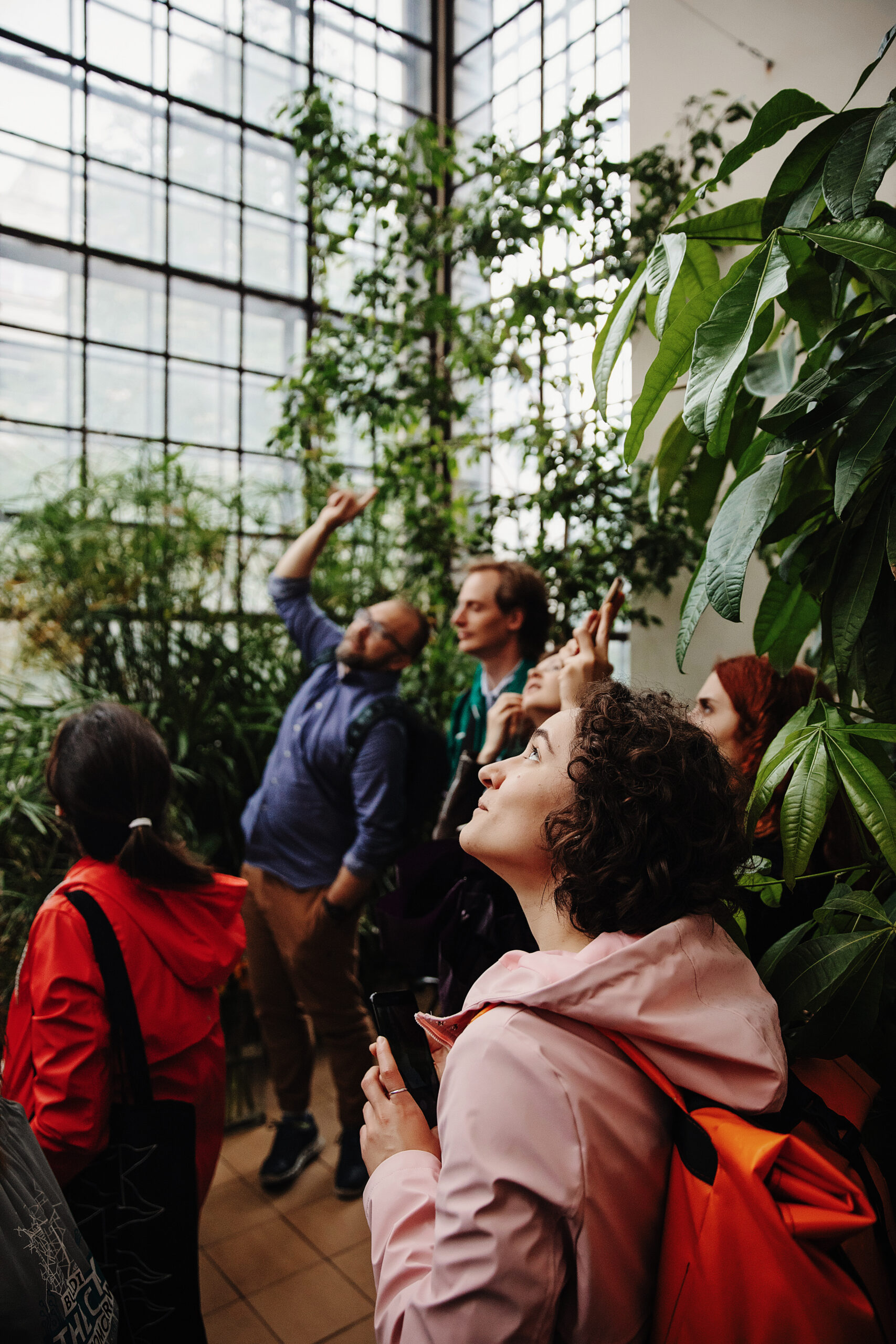
“101 years later, both of our organisations find the Dadaist tour incredibly contemporary, creative, and full of humour, and we decided to experiment with our own Grande Saison,” says Sherill.
According to Algimantas Grigas, coordinator at Ekskursas, Kaunas is a perfect place to experiment and fuse artistic knowledge into new products: “New guided tours that move the boundaries of what a guided tour is in Lithuania.”
He explains that Kaunas was the birthplace of Jurgis (George) Mačiūnas, one of the founders and active proclaimers of Fluxus art. The aftermath of the World Wars directly influenced both Fluxus and Dada. While Dada rejected the fact that art has to be beautiful, Fluxus not only put forward ideas that everyone can be an artist but also employed certain Neo-Dadaist tendencies like the opposition to sensory aesthetics.
It is important to rediscover old places
The tours not only explore the city’s secret places. They also reflect on the production and distribution of knowledge.
„Decolonising sacred cows of the modernist narrative, the tours rewrite hegemonic stories. They employ embodied knowledge, perspective-shifting, and humour to challenge dominant stances in a subtle, thought-provoking, and creative way,“ says Mol.
She notes that tourism is a great privilege these days – discovering different ways of living and thinking is a gift. However, because of globalisation, tourism is no longer about finding the differences – it is about reproducing what is the same and easily consumable.
“The tours we show aim to do precisely the opposite. Not every person will love all the tours, but we hope you will find at least one that is eye-opening and enjoyable!“ smiles Sherill.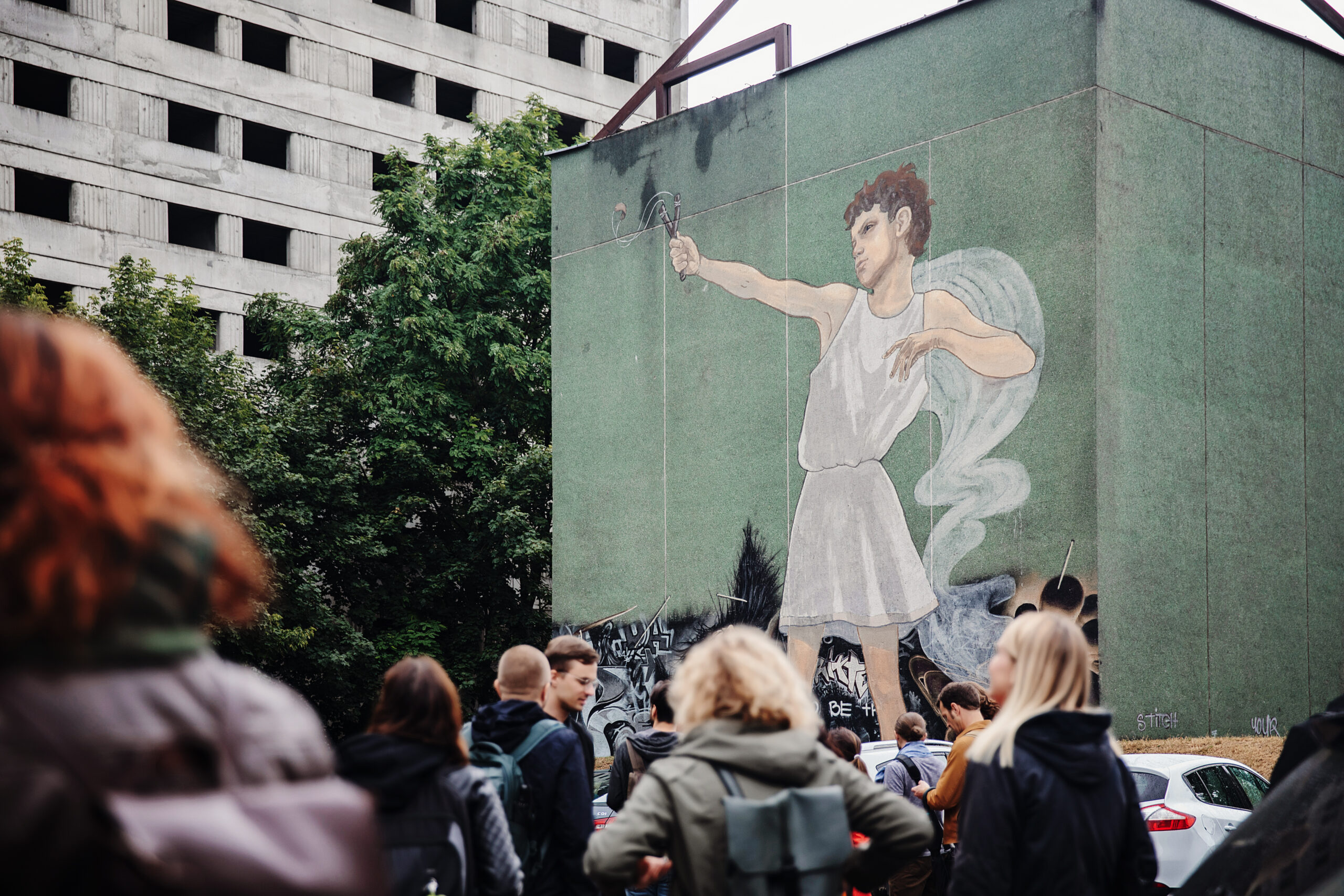
She adds another reason for it – climate change. People in the global north should take responsibility for their actions, like every-weekend trips by airplane: “Flights account for a huge amount of the global carbon dioxide production, so there is a great potential in rediscovering one’s city in completely new and unexpected ways.”
Photo author Martynas Plepys
A Birthday Like no Other - all the Cultural Rivers of Kaunas Will Reach “The Confluence” on 20-22 May
The Lithuanian Kaunas, born from the love of the Nemunas and the Neris rivers, will celebrate its birthday in a unique way this year - the European Capital of Culture will be hosting “The Confluence” weekend on 20-22 May, the second part of the Contemporary Kaunas Myth trilogy.
This time, the city will address its inhabitants in the language of water, inviting them to search for intersections, convergence, connection, and most importantly - connection with themselves and others. “The Confluence” invites everyone to immerse themselves in three days full of unexpected experiences, video and audio journeys, and meetings with culture and art.
“If only the climate conditions allowed, we would hold all the events of the Kaunas Myth trilogy by the river - after all, for so many years, Kaunas has ignored the fact that it is a city by the water. “The Confluence” weekend means hundreds of opportunities to enjoy the relationship with the river and its endless possibilities, both in terms of culture and art, and in terms of meaningful leisure and lifestyle in general,” Virginija Vitkienė, the head of Kaunas 2022, believes.
The culmination of the weekend will, of course, take place at the confluence of the Nemunas and Neris rivers. The second part of the Kaunas Myth trilogy will be a mystery show on the water on the evening of 21 May, featuring rock and pop stars and a symphony orchestra. More about the highlights of the big Kaunas 2022 weekend will follow soon. For now, it is clear that a date with the Kaunas Beast is planned for after the big show - this time, it will take place at Žalgiris Arena.
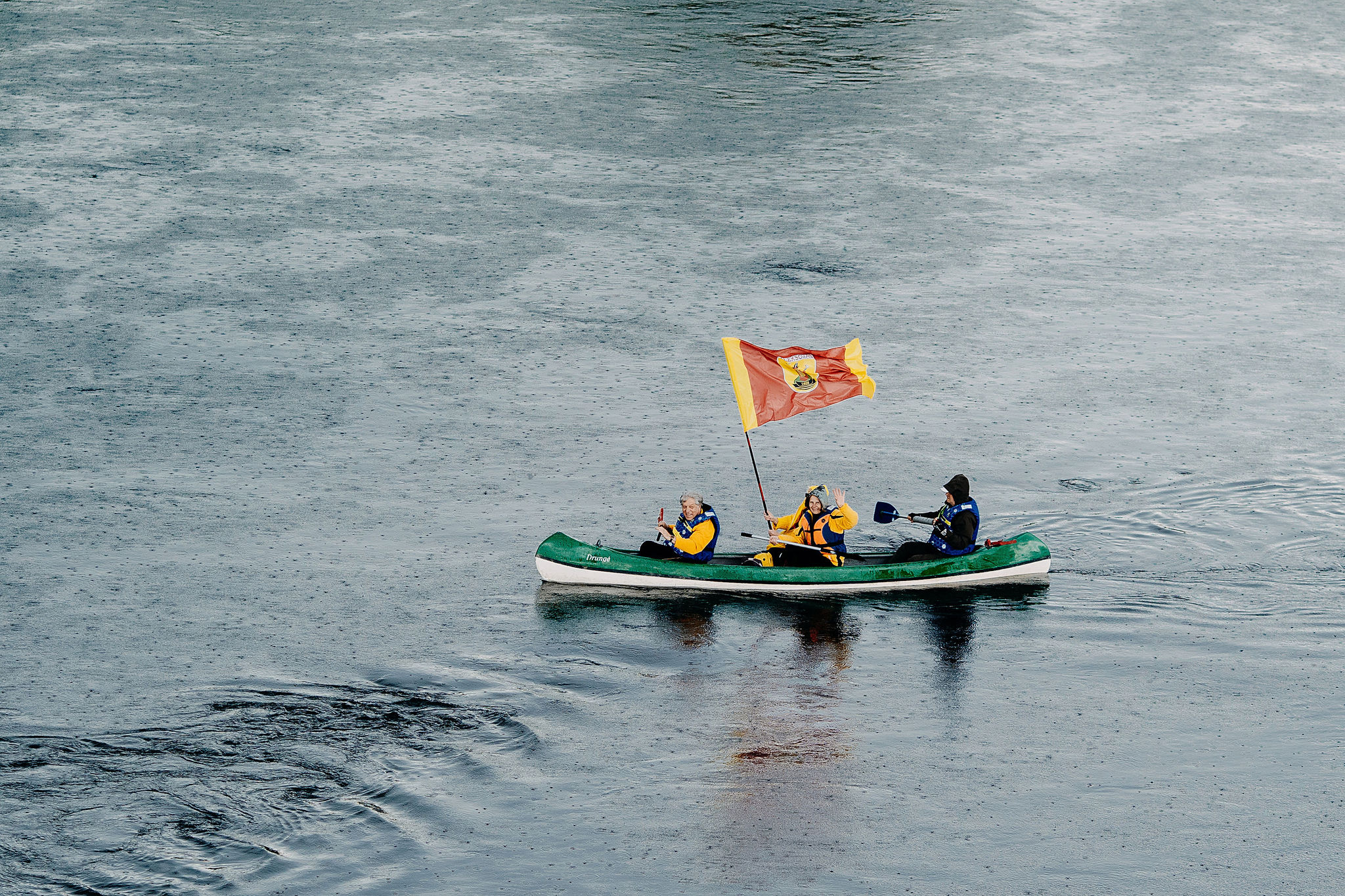
From Laisvės Alėja to Zapyškis
Symbolically - at the dinner table - the big weekend will be kicked off with the Courtyard Festival on 20 May. An inseparable spring tradition, which has come to Kaunas on the occasion of the International Neighbours Day, will call for tablecloths to be laid and feasts to be piled up on Laisvės Avenue, the region’s longest pedestrian boulevard. This year, the festival will feature not only one long table of Kaunas city and Kaunas district residents, communities and organisations, stretching across Laisvės Alėja but also Kaunas’ new friends, the Ukrainians. Of course, there will be many cultural highlights, culminating in a performance by the Kaunas City Symphony Orchestra by the Soboras church.
On Friday, the opening event of Nemuno7 will take place in the inter-war Kaunas Waters Reservoir - it will be an audiovisual performance of the Tykumos project, featuring sounds from the most unexpected places. And the season’s wettest news, the Nemuno7 culture boat, will dock in Zapyškis, on the Nemunas, on 22 May. On that day, the traditional kite festival “Between the Earth and the Sky” will occur there.
Action in the Water, in the air and in Labyrinths
Spectators and visitors will be amazed by performances by acrobats, contemporary circus, action in the rivers, and musical picnics on their banks throughout the weekend. During “The Confluence”, everyone will be invited to participate in the community initiative “Let’s Celebrate the River”. It will offer two cultural routes along the Nemunas and the Neris, which will converge at the confluence. Canoeists and rafters (who can make their rafts in a special workshop before the event) will be able to visit the cultural islands - a plein-air painting workshop, a sports and games station, live music and more.
“Getting lost will be fun”, promises the Catalan company “Espectacle Spectacular”. This collective of artists will set up a 700 square metre installation - three different labyrinths - by the Kaunas Castle. Little Kaunas residents can already mark their parents’ calendars in red - there will be various educational activities, workshops and other entertainment. Of course, there will also be other performances - Kaunas State Puppet Theatre and its festival Kaunas Puppet 2022 will present two cosmically exciting shows at the castle.
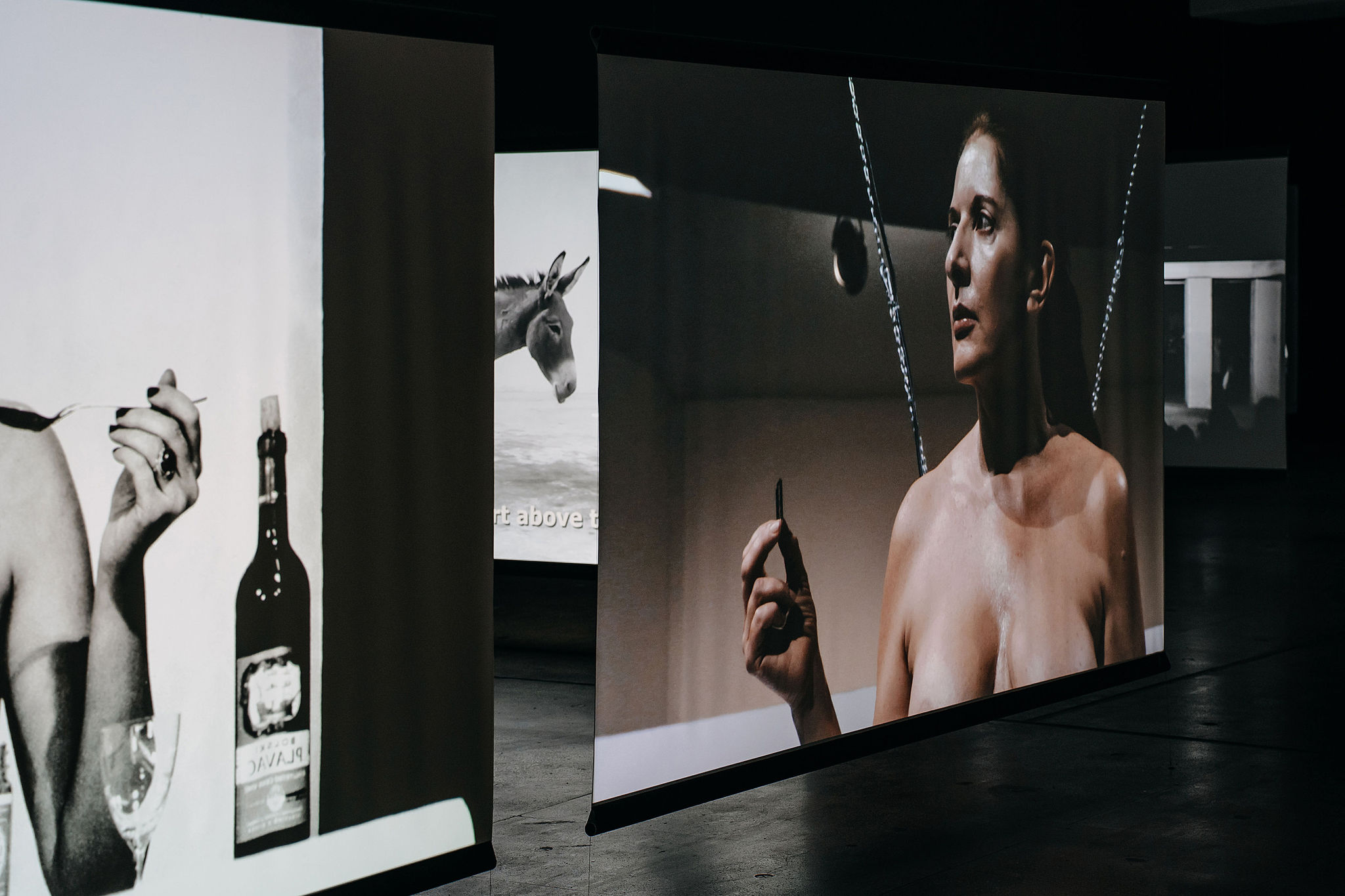
Happy Birthday, Kaunas
Although Kaunas is mentioned in historical sources as early as 1361, the city’s birthday is traditionally celebrated on 20 May or the weekend closest to it. On this day in 1463, the city’s rights were considerably extended. So in 2022, the year of the European Capital of Culture, Kaunas, turns 559.
“The Confluence” weekend programme will be packed with highlights to mark the occasion. One of them will be the European Culture Fair, where traditional crafts, feasts and contemporary accents will all find their place. Lithuanian and European folk craftsmen, artists and culinary artists will be waiting for you at the Kaunas Castle.
Music is a must for a birthday. On 20 May, the Kaunas 2022 stage in the Town Hall Square will be officially opened. The best and most original performers from our country and Europe (even the world!), performances, literature, other stage acts and announcements - everything will fit here until September. The opening weekend will be filled with pop, electronica, rock, and world music festive rhythms. An even bigger stage, specially dedicated to Kaunas’ birthday, will be erected in Santaka Park.

In total, Kaunas 2022 and its partners will present around 60 different activities, including approximately 20 concerts, in “The Confluence” weekend programme.
Of course, 20-22 May is also a great time to visit those European Capital of Culture exhibitions already running. Contemporary art and culture lovers must visit the Bank of Lithuania with Yoko Ono’s installation “Ex It”, the new show “1972: Breaking through the Wall” at Kaunas Central Post Office, and the retrospectives of William Kentridge and Marina Abramović at the National Museum of Art of M.K.Čiurlionis and the Kaunas Picture Gallery.
For an event of this magnitude to run smoothly, organizers are planning to gather a team of 400 volunteers. Those who would like to become part of the event, can register here.
The complete programme of the Kaunas 2022 myth trilogy weekend “The Confluence” will be published on kaunas2022.eu and on the Kaunas 2022 mobile app in the run-up to 20-22 May.
Photo author Martynas Plepys


